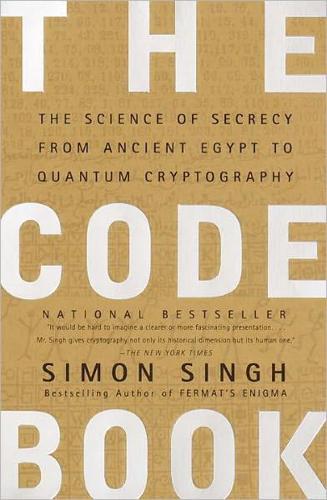
The Code Book: The Science of Secrecy From Ancient Egypt to Quantum Cryptography
by
Simon Singh
Published 1 Jan 1999
Although the ring does have some effect on encryption, it is the least significant part of the whole Enigma machine, and I have decided to ignore it for the purposes of this discussion. (Readers who would like to know about the exact role of the ring should refer to some of the books in the list of further reading, such as Seizing the Enigma by David Kahn. This list also includes two Web sites containing excellent Enigma emulators, which allow you to operate a virtual Enigma machine.) Now that we know all the main elements of Scherbius’s Enigma machine, we can work out the number of keys, by combining the number of possible plugboard cablings with the number of possible scrambler arrangements and orientations.
…
Hebern sold only twelve machines at a total price of roughly $1,200, and in 1926 he was brought to trial by dissatisfied shareholders and found guilty under California’s Corporate Securities Act. Figure 39 An army Enigma machine ready for use. (photo credit 3.6) Figure 40 An Enigma machine with the inner lid opened, revealing the three scramblers. Fortunately for Scherbius, however, the German military were eventually shocked into appreciating the value of his Enigma machine, thanks to two British documents. The first was Winston Churchill’s The World Crisis, published in 1923, which included a dramatic account of how the British had gained access to valuable German cryptographic material: At the beginning of September 1914, the German light cruiser Magdeburg was wrecked in the Baltic.
…
It is clear that the key, and the codebook that contains it, must never be allowed to fall into enemy hands. It is quite possible that the enemy might capture an Enigma machine, but without knowing the initial settings used for encryption, they cannot easily decrypt an intercepted message. Without the codebook, the enemy cryptanalyst must resort to checking all the possible keys, which means trying all the 17,576 possible initial scrambler settings. The desperate cryptanalyst would set up the captured Enigma machine with a particular scrambler arrangement, input a short piece of the ciphertext, and see if the output makes any sense. If not, he would change to a different scrambler arrangement and try again.
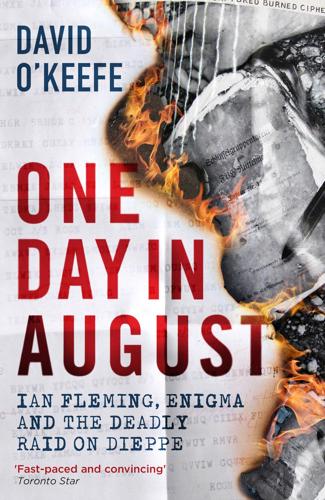
One Day in August: Ian Fleming, Enigma, and the Deadly Raid on Dieppe
by
David O’keefe
Published 5 Nov 2020
The machine could encipher each letter of the alphabet individually, unlike other machines and forms of encryption that encoded complete words, word for word. The Enigma machine was far more subtle and therefore more difficult to crack. It did not actually transmit messages itself, as a wireless or telegraphy set would do. Instead, it scrambled or enciphered each letter of each word of a message into unintelligible gibberish, before transmission to a recipient via wireless. The recipient then deciphered the received message letter for letter using an identical Enigma machine set to precisely the same specifications. Early in the 1920s, the Enigma machine had made its commercial debut on a limited basis. It was sold domestically on the premise that its contrived internal set-up was so complicated that, should it fall into the wrong hands, it would remain impregnable unless that person also possessed the current setting sheets displaying the exact configurations of the rotor wheels and the plugboard settings that changed daily.
…
Royal Marine Commandos and IAU obtain intelligence booty 06:30–07:00. IAU depart Dieppe with intelligence booty Plate section 1. Private Ron Beal, 2012 2. Ian Fleming in naval uniform 3. Rear Admiral John Godfrey 4. Admiral Karl Dönitz 5. The naval four-rotor Enigma machine 6. The ‘Morrison Wall’ at Bletchley Park 7. Two sets of spare rotor wheels for the Enigma machine 8. Three Enigma rotor wheels laid out on their sides 9. Frank Birch 10. Alan Turing 11. A captured Enigma wheel 12. Harry Hinsley, Sir Edward Travis and John Tiltman 13. Major General Hamilton Roberts 14. Captain Peter Huntington-Whiteley 15.
…
Thanks to the cryptanalysts working around the clock in Bletchley Park, for nearly a year – from the spring of 1941 to February 1942 – the British had enjoyed astonishing success in intercepting and decrypting German navy messages between its headquarters and its surface and U-boat fleets. During that period, German communications were encrypted on a three-wheel Enigma machine – a complex electromechanical rotor cipher machine belonging to a family of devices (the army, navy and air force each had their own version) first developed by the Germans at the end of the First World War. To do their work, the cryptanalysts at Bletchley Park relied on pinched material – Enigma machines captured from destroyed submarines, for instance, or, more importantly, the codebooks, rotor-setting sheets and instruction manuals used to unravel the German secret transmissions.
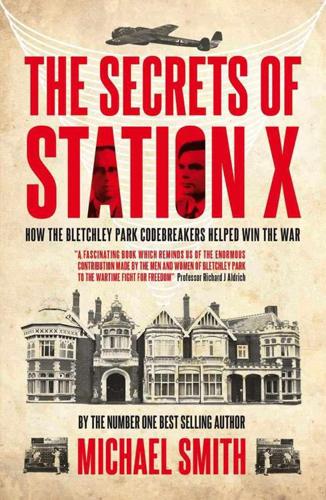
The Secrets of Station X: How the Bletchley Park codebreakers helped win the war
by
Michael Smith
Published 30 Oct 2011
But it was not until late 1938 that the two sides began to discuss the Enigma machine in any detail. Given that the exchange on Russian material had been somewhat one-sided, with the British providing far more than they received in return, the French had a surprisingly large amount of material on the Enigma machine. Denniston wrote to Sinclair suggesting that the dialogue was worth continuing. The French had clearly not got far themselves but had produced some 100 documents, some of which were of more value than others. They included ‘photographs of documents relating to the use of the Enigma machine which did increase our knowledge of the machine and have greatly aided our researches’, Denniston said.
…
The publicity given to the success of the British codebreakers during the First World War led a number of nations to adopt machine cyphers, which were seen as more difficult to break. The most famous of these was the Enigma machine. The first British contact with the machine came in 1921, when it was still in development. It was shown to the British military attaché in Berlin, in the hope of persuading the British armed forces to use it. The German Navy introduced the Enigma machine cypher in 1926 and for a brief period it remained a possibility that both the British and the German armed forces might use it. In 1927, Commander Edward Travis, a member of GC&CS who oversaw the construction and security of British codes and cyphers, asked Hugh Foss, a specialist in machine cyphers, to test the commercially available machine.
…
It was only then that the Poles revealed the full extent of the progress they had made in reconstructing the Wehrmacht’s steckered Enigma machine. The Bureau Szyfrow had broken a number of German codes during the early 1920s but the introduction of Enigma had left them unable to read the Wehrmacht’s messages. Their response was to recruit mathematics students and put them through a codebreaking course. Only three passed. Their names were Jerzy Różycki, Henryk Zygalski and Marian Rejewski. All three were recruited but worked initially on a part-time basis and it was only in September 1932 that Rejewski, the best of the three, was given the steckered Enigma machine and asked to solve it. By the end of that year, assisted by Enigma key lists obtained by the French from Asche, he had reconstructed the wiring mathematically, using permutation theory.

The Secret Life of Bletchley Park: The WWII Codebreaking Centre and the Men and Women Who Worked There
by
Sinclair McKay
Published 24 May 2010
‘A message that long that contained only “L”s! That actually broke one of the wheels of the Italian Enigma machine.’ Another 1941 sea battle of some significance to Bletchley took place inside the Arctic Circle, and featured a British attack on German ships. The real target was a trawler called Krebs; for it was known that on board this vessel was an Enigma machine, which could prove invaluable for breaking into those almost impossible German naval codes. The German captain, sensing the danger, threw the Enigma machine overboard into the freezing ocean, but he was killed before he had a chance to destroy his coding documents and bigram tables.
…
In addition to the military setbacks, there was, for Bletchley Park, a disaster that the general public knew nothing of at that time – one that threatened to wipe out a large swathe of the codebreaking operation. For a suspicious Admiral Dönitz, concerned that somehow his codes were being read, decreed that from 1 February 1942, the German U-boat command should bring in an updated version of the naval Enigma machine. From that point on, an extra, fourth rotor was fitted to U-boat Enigma machines. The immediate result was a total U-boat code blackout at Bletchley. Suddenly, without warning, the messages the cryptographers received could no longer be decrypted. In turn the Atlantic convoys were rendered horribly vulnerable once more. After the great satisfaction of Hut 8’s earlier successes, this was a stomach-punch of disappointment.
…
By the time Lieutenant Anthony Fasson and Able Seaman Colin Grazier swam to it, followed by sixteen-year-old Tommy Brown, only its conning tower was visible above the waves. Despite the fact that the U-boat was about to be submerged, Fasson and Grazier boarded the vessel. Some lights were still on inside. And what they found was the four-rotor Enigma machine that had defeated Bletchley, along with a book of the current Shark keys. With astounding presence of mind, the pair ensured that both the Enigma machine and the keys and the bigram tables were wound securely in waterproof material. They passed the machine and the books to Tommy Brown, who was outside. He in turn passed them to fellow crew members in a whale boat. But it was too late for Fasson and Grazier.
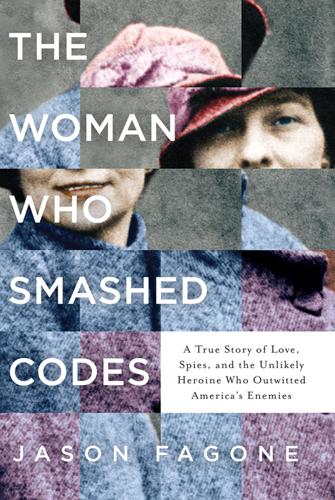
The Woman Who Smashed Codes: A True Story of Love, Spies, and the Unlikely Heroine Who Outwitted America's Enemies
by
Jason Fagone
Published 25 Sep 2017
With Brazil fallen, the “continent will be ours.” At her coast guard desk, Elizebeth reached for a fresh sheet of grid paper. Circuit 3-N. Argentina to Berlin. The unknown Enigma machine. Twenty-eight unsolved messages from Circuit 3-N now sat in a pile on her desk. She wrote the twenty-eight ciphertexts on the worksheet in pencil, one on top of another, assembling a stack of text so she could solve the messages in depth, like she had done in 1940 to solve the commercial Enigma machine. The twenty-eight messages all appeared to use the same key—a huge gift to the codebreakers from their Nazi adversaries. It made things easier and allowed Elizebeth to begin solving the individual messages.
…
These were Red messages, meant for their SS superiors in Berlin. The springs and holes of the Kryha were now wearing out from overuse, and Utzinger asked Berlin to smuggle them a new cipher device through Becker’s network of wolves. Instead of a Kryha, Berlin sent a new Enigma machine. “Enigma arrived via RED,” Utzinger reported to Berlin on November 4, 1943. “Thank you very much.” He typed this message on his older Enigma machine, the Green machine. He went on, “From our message 150 we shall encipher with the new Enigma . . . LUNA.” “It is a birthday surprise for LUNA,” Berlin replied. Utzinger now possessed three Enigmas. Throughout November and December 1943 he flashed Enigma messages to Berlin, newly confident in the security of his codes and increasingly upbeat about the prospects of his spy organization.
…
It didn’t monitor the Nazi circuits. It didn’t break the codes. It didn’t solve any Enigma machines. The coast guard did this stuff—the little codebreaking team that Elizebeth created from nothing. During the Second World War, an American woman figured out how to sweep the globe of undercover Nazis. The proof was on paper: four thousand typed decryptions of clandestine Nazi messages that her team shared with the global intelligence community. She had conquered at least forty-eight different clandestine radio circuits and three Enigma machines to get these plaintexts. The pages found their way to the navy and to the army.
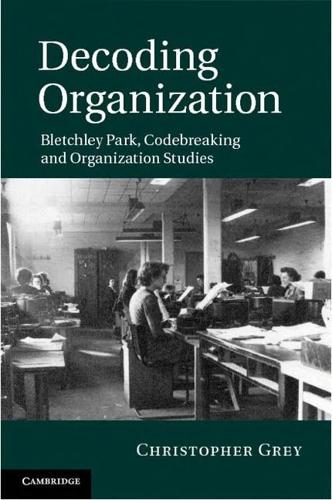
Decoding Organization: Bletchley Park, Codebreaking and Organization Studies
by
Christopher Grey
Published 22 Mar 2012
Party: Term often used at BP for a work group undertaking a particular task (cf. Hut and Watch). Plaintext or plain text: A message (or part thereof) transmitted without encipherment, or the text resulting from the decryption of an enciphered message. Plugboard: An electrical (re-cabling) modification of pre-war commercial Enigma machines, made to military Enigma machines, very significantly increasing their security. Hence, ‘plugboard Enigma’ to describe such machines. Room 40: Cryptanalytic section of the Admiralty during WW1 (formally, NID 25), which merged with MI1b to form GC & CS in 1919. Signals intelligence (SIGINT or sigint): Intelligence derived from wireless transmissions, including that from cryptanalysis, traffic analysis and direction finding.
…
Tunny: Version of Fish enciphered on the Lorenz SZ 40/42 machine, read at BP using Colossus. Typex: British high-grade machine cipher, based upon the pre-war commercial Enigma machine and in that sense simpler than the plugboard version used by German military forces, but never broken. Ultra: A reduction of ‘Top Secret Ultra’. Cover name for signals intelligence derived from cryptanalysis of high-grade ciphers such as Enigma and Fish. Supplanted the earlier term Boniface from late 1941. Umkehrwalze: Reversing wheel (or reflector) on Enigma machines. The standard version was Umkehrwalze B. A field-rewireable version, Umkehrwalze D (known at BP as Uncle Dick), which massively increased security, was introduced to a limited extent in 1944.
…
The official historian of British intelligence in World War Two (WW2), Professor Sir Harry Hinsley, himself an important figure at BP, suggested that its work may have shortened the course of the war by two to four years (Hinsley, 1993a, 1993b), whilst noting the difficult and dubious nature of such counterfactual claims (Hinsley, 1993a: 2). bletchley park as a research site 3 The dramatic qualities of BP have provided the inspiration for a successful novel, Enigma (Harris, 1995), which became in turn a major film of the same title in 2001, whilst another film, U-571 (2000), fictionalized the capture at sea of an Enigma machine. Bletchley Park was satirized in the BBC radio comedy show Hut 33, first broadcast in 2007, and was the subject of a 1999 Channel Four TV documentary, Station X. The BP site is now a major museum attracting many thousands of visitors each year and is regularly in the news because of the enduring interest in its codebreaking achievements and contribution to the conduct of WW2, its role in the development of computing and not least because of public interest in its best known luminary, Alan Turing (Hodges, 1982).

The Burning Shore: How Hitler's U-Boats Brought World War II to America
by
Ed Offley
Published 25 Mar 2014
The secret of Enigma lay in how the machine turned one letter—the keystroke—into a different one—the illuminated letter appearing in the circular face of one of the glow lamps—seemingly at random. The Enigma machine used by the U-boat Force in early 1942 used three moving electromechanical rotors and a “reflector” (a nonmoving rotor) to continuously change the circuit path from keyboard to glow lamp. The Kriegsmarine provided every Enigma machine with eight different rotors, each identified with a roman numeral from I to VIII. All of the rotors identified by a particular roman numeral had identical letter-to-letter wiring designs, and the circuitry for differently numbered rotors was never the same.
…
First conceived as an encryption device for commercial use by German engineer Arthur Scherbius in 1927 (based on a Dutch engineer’s original patent he obtained), the Enigma failed to attract commercial customers but caught the eye of German military communications experts. By 1942, all of the German military services relied on variants of the Enigma machine, which had gone through numerous modifications over the previous decade. The U-boat Force at the start of 1942 utilized the M3 naval Enigma. The battery-operated M3 Enigma device resembled an office typewriter housed in a varnished oak box with a hinged lid. It sported several strange electrical add-ons: in addition to the twenty-six-letter keyboard, it had a flat panel on which twenty-six small circular windows were arranged in three rows, each marked with a letter of the alphabet.
…
A U-boat officer would check a published schedule to determine which three rotors to place into the machine and the order in which to mount them on the small shaft around which they turned. The sequence of Enigma rotors installed in the machine changed every other day, adding yet another layer of complexity to the system. Besides the rotors, designers had added two additional layers of encryption to the Enigma machine. One device was an “alphabet ring” mounted on each rotor and the reflector like a tire on a wheel. The ring displayed the rotor position indicator letters that appeared in small windows on the face of the machine. Each rotor could thus be turned individually until the letters designated for that day’s use appeared in the Enigma’s faceplate windows and were then locked into a stud.
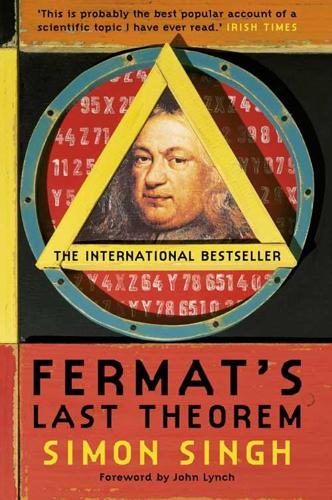
Fermat’s Last Theorem
by
Simon Singh
Published 1 Jan 1997
The HMSO’s official war history British Intelligence in the Second World War describes the state of play in the 1930s: By 1937 it was established that, unlike their Japanese and Italian counterparts, the German army, the German navy and probably the air force, together with other state organisations like the railways and the SS used, for all except their tactical communications, different versions of the same cypher system – the Enigma machine which had been put on the market in the 1920s but which the Germans had rendered more secure by progressive modifications. In 1937 the Government Code and Cypher School broke into the less modified and less secure model of this machine that was being used by the Germans, the Italians and the Spanish nationalist forces. But apart from this the Enigma still resisted attack, and it seemed likely that it would continue to do so. The Enigma machine consisted of a keyboard connected to a scrambler unit. The scrambler unit contained three separate rotors and the positions of the rotors determined how each letter on the keyboard would be enciphered.
…
The challenge for the code-breaker was to take an intercepted message and to crack the code while the contents of the message were still relevant. A German message ordering a British ship to be destroyed had to be decoded before the ship was sunk. Turing led a team of mathematicians who attempted to build mirror-images of the Enigma machine. Turing incorporated his pre-war abstract ideas into these devices, which could in theory methodically check all the possible Enigma machine set-ups until the code was cracked. The British machines, over two metres tall and equally wide, employed electromechanical relays to check all the potential Enigma settings. The constant ticking of the relays led to them being nicknamed bombes.
…
To increase security even further, the three rotors were continually changing their orientation, so that every time a letter was transmitted, the set-up for the machine, and therefore the encipherment, would change for the next letter. So typing ‘DODO’ could generate the message ‘FGTB’ – the ‘D’ and the ‘O’ are sent twice, but encoded differently each time. Enigma machines were given to the German army, navy and air force, and were even operated by the railways and other government departments. As with all code systems used during this period, a weakness of the Enigma was that the receiver had to know the sender’s Enigma setting. To maintain security the Enigma settings had to be changed on a daily basis.
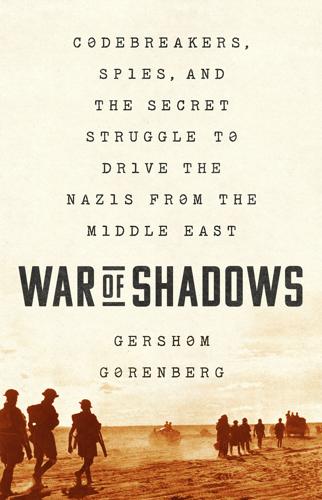
War of Shadows: Codebreakers, Spies, and the Secret Struggle to Drive the Nazis From the Middle East
by
Gershom Gorenberg
Published 19 Jan 2021
If the clerk at the receiving end set the machine to the exact same starting position and typed in the meaningless string of letters she’d received, the original message appeared, one letter at a time, flashing from the little lights. At any other setting, the message remained a mystery. In the original design, there were close to two billion possible settings.32 In 1926, the navy of the Weimar Republic began using Enigma machines for its communications, followed by the German army in 1928. Nazi Germany’s air force, the Luftwaffe, adopted the machine in 1935.33 Other inventors created cipher machines in those years, but they were big and bulky—fine for embassies or stationary military headquarters. Enigma was perfectly suited for the new, fast-moving warfare that Germany was developing.
…
Actually, Dilly worked in Room 53, the only one in the Old Admiralty Building with a bathtub. Hot water helped him think. He unraveled the code used by the commander of the German navy. He and a colleague decoded the Zimmermann Telegram. After the Great War, Dilly completed his translation of Herodas but went on working for GC&CS. He acquired an early commercial Enigma machine, though a British expert analyzed the device and decided Britain shouldn’t use Enigma for its own communications. Other countries did adopt the Enigma. Dilly Knox spent years on their messages.15 Dilly’s Enigma section numbered just four people when it moved into the cottage, out of the 110 GC&CS prewar staff who came to Bletchley Park.
…
But it was hard to know since Dilly Knox was “notorious for being very secretive.” Knox treated a code as a puzzle to be solved alone—one more reason for his small team. Denniston, though, had enough hope to bring in Twinn, Turing, and Welchman.17 When Welchman came to the cottage, someone showed him a copy of a German Enigma machine with the correct wiring and explained the format in which messages were sent. The machine and the explanations, he was told, came from “the Poles.” He wasn’t told any more details. Dilly didn’t take to Welchman. He gave Welchman “some sort of test and appeared annoyed that I passed.” In fact, Dilly was suffering from a chronic stomach illness.
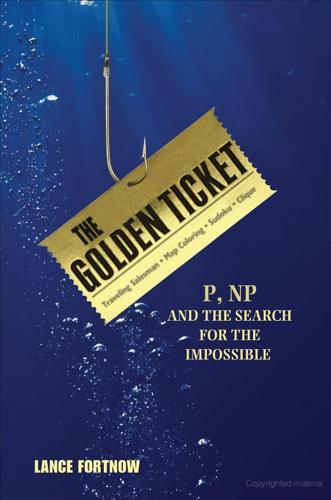
The Golden Ticket: P, NP, and the Search for the Impossible
by
Lance Fortnow
Published 30 Mar 2013
With the mechanical age came various devices to create codes to encrypt and decrypt secret messages. Perhaps the most famous of these, the Enigma machine, was first developed by Arthur Scherbius in 1918 in Germany. The Enigma machine has several rotors each of which scrambles letters as they are typed. The rotors step along at different rates so that a different substitution is done for each letter. This machine creates a very complex version of Alberti’s polyalphabetic cipher that is very difficult to crack. Figure 8-2. Dancing Men. Figure 8-3. Enigma Machine. The Enigma was the primary source of codes for the Germans during World War II.
…
Talking about the development of the P versus NP problem earlier that decade, Diffie and Hellman stated, “At the same time, theoretical developments in information theory and computer science show promise of providing probably secure cryptosystems, changing this ancient art into a science.” Before Diffie and Hellman, to decrypt a secret message you needed the same key as the one used to encrypt the message. Both parties would have to meet in advance to agree on a secret key. If a general needed to send a message to a lieutenant in the field using Enigma machines, they both had to know the settings for that machine, particularly how the rotors were initially set at the beginning of the message. The lieutenant would carry a book of settings, usually one for each day. If this book fell into enemy hands, secret communications would come to a halt until a new set of books could be distributed.
…
Combined DNA Index System), 25–26 coin-toss protocol, 136–37 Cold War, competitiveness in science during, 71–72 Colossus, 125–26 Columbus principle, 86 Communications of the ACM, x complete, 58 “The Complexity of Theorem-Proving Procedures” (Cook), 52 computation: as natural, 86–87; with Turing machine, 73–74; wire in, 114, 114 computational complexity, 76, 78, 80 computation theory: Eastern development of, 78–85; Western development of, 72–78 computer(s): capabilities of, ix; in cryptography, 126; defining, 72–73 computer networks: computation power of, 160; as future challenge, 155–56, 159–60; security of, 127 computer security, changing the problem in, 106 context-free grammar, 75, 75–76 Cook, Steve, 6, 51–52, 77, 166 Cook-Levin theorem, 85 CPUs, capabilities of, 90–92 creativity, automating, 23–25 criminal profiling, 25–26 cryptography: Cardano and, 120; challenges in, 140–41; fully homomorphic, 138–39; history of, 123–26; modern, 126–29; NP-complete problems in, 140–41, 162; if P = NP, 129–30; quantum, 130, 148–49; randomness in, 140; zero-knowledge proofs and, 135–36 cutting-plane method, 91, 91 Dahl, Roald, 1–2, 157 Dantzig, Georg, 69 data: amounts of, as challenge, 155, 158–59; copying, 148 Deepwater Horizon, 161 Deolalikar, Vinay, 118–19 Descartes, René, 20 dice-rolling protocol, 137 Diffie, Whitfield, 126, 127 Dilbert, 82, 109 Discourse of the Method (Descartes), 20 DNA: in cancer treatment, 14–15; sequencing, 47–48, 158 dodecahedron, 41, 41 dominating set problem, 59 Doyle, Arthur Conan, 124 DVRs, quantum, 143–47 D-Wave, 147 economics, NP problems in, 49 Edmonds, Jack, 35–36, 76–77 efficiency: of algorithms, 36; defining, 76–78 efficient computation. See P Einstein, Albert, 21 ellipsoid algorithm, 69–70 employment, effect of P = NP on, 27 Enigma machine, 124–26, 125 entertainment, automated creation of, 25 Entscheidungsproblem, 49 Erdős, Paul, 32, 32n Euler, Leonhard, 38–39 Eulerian paths, 39, 39 Exclusive-OR gates, 114, 116 exponential order, versus algebraic order, 76–77 Facebook: encryption on, 128–29; largest clique on, 8–9 face recognition, 22–23 factoring, 67–69, 127–28, 129, 146–47 fantasy sports, 18 Fermat’s Last Theorem, 7, 110 “A Few Words on Secret Writing” (Poe), 124 Feynman, Richard, 143 Fields Medal, 12 films, automated creation of, 25 finite automaton, 75 Floyd-Warshall algorithm, 33 four-color theorem, 42–44, 43, 46, 92–96, 93, 94, 95, 96 Frenemy: cliques in, 36–37, 45, 52, 52–53; description of, 29; grouping in, 44, 44–45, 46; map of, 96, 96; matchmaking in, 33–36, 34, 35; painting houses in, 42–44, 46; Pass the Rod game in, 37–41, 45–46; six degrees rule in, 30–33 friendship diagram: approximation for, 104; in graph isomorphism, 66, 66–67; logical expressions as, 55 Fukushima power station, 161 fully homomorphic cryptography, 138–39 functions, of maximal complexity, 79–80 game protocols, 136–38 gates, in circuits, 113, 113–18, 114, 115, 116 general relativity theory, 21 genetics research, in Soviet Union, 81 Gentry, Craig, 139 Georgia Tech, 25 GE Research Labs, 76 Gödel, Kurt, 6, 9, 49, 85–86, 111, 111n Gödel Prize, 86 Goemans, Michel, 45 “The Gold Bug” (Poe), 124 golden ticket, finding, 1–2 Google: algorithms of, 159; name of, 34; processing power of, 2 googol, 34 GPS, calculations of, 7–8 graph isomorphism, 66, 66–67 grouping, 44, 44–45 Grover, Luv, 146 Guthrie, Francis, 42 hackers, methods of, 141 Haken, Wolfgang, 42 halting problem, 74 Hamilton, William Rowan, 40 Hamiltonian paths, 41, 45–46 hand, controlling, 5–6, 165 handwriting recognition, 21–23, 22 hard functions, generation of, 80 Hartmanis, Juris, 76, 109 Hawking, Stephen, x Hellman, Martin, 126, 127 heuristics, 92–97 Hilbert, David, 49 https, 128–29 Hubble telescope, 158 Hull, Tom, 51 human body, teleporting, 153 human factors, in dealing with innovation, 161 human genome, mapping, 47–48, 158 IBM T.
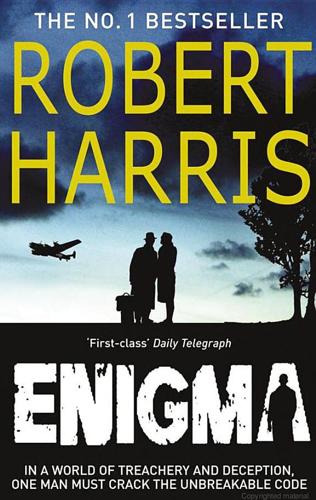
Enigma
by
Robert Harris
Published 15 Feb 2011
Porpoise was the Enigma key for Mediterranean surface vessels and shipping in the Black Sea. Oyster was an 'officer only' variation on Dolphin. Winkle was the 'officer only' variant of Porpoise. And Shark? Shark was the operational cipher of the U-boats. Shark was unique. Every other cipher was produced on a standard three-rotor Enigma machine. But Shark came out of an Enigma with a specially adapted fourth rotor which made it twenty-six times more difficult to break. Only U-boats were allowed to carry it. It came into service on 1 February 1942 and it blacked out Bletchley almost completely. Jericho remembered the months that followed as a prolonged nightmare.
…
After the surviving Germans had abandoned the submarine, the two British sailors had stripped off and swum out to her, lit by searchlights. The U-boat was already low in the waves, holed in the conning tower by cannon fire, shipping water fast. They'd brought off a bundle of secret papers from the radio room, handing them to a boarding party in a boat alongside, and had just gone back for the Enigma machine itself when the U-boat suddenly went bows up and sank. They went down with her—half a mile down, the Navy man had said when he told them the story in Hut 8. 'Let's just hope they were dead before they bit the bottom.' And then he'd produced the code books. This was on 24 November 1942. More than nine and a half months into the blackout.
…
I'll show you.' When a cryptanalyst believed he'd glimpsed a possible break into a message, his guess was sent out of the hut to be tested on a bombe. And if he'd been skilful enough, or lucky enough, then in an hour, or a day, the bombe would churn through a million permutations and reveal how the Enigma machine had been set up. That information was relayed back from the bombe bays to the Decoding Room. Because of its noise, the Decoding Room was tucked away at the far end of the hut. Personally, Jericho liked the clatter. It was the sound of success. His worst memories were of the nights when the building was silent.
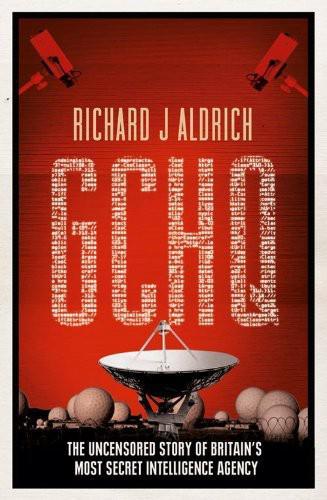
GCHQ
by
Richard Aldrich
Published 10 Jun 2010
Most developed countries turned to cypher machines to make their immense volumes of traffic secure.14 Complex cypher machines had been pioneered by banks and businesses – banks had long used fairly simple cyphers to keep commercial matters secret. In the 1920s, the German military adapted a Dutch invention to produce the Enigma cypher machine as an alternative to laborious hand cyphers. In fact, the first Enigma machines were sold commercially, and were widely used by banks and businesses. Enigma was what we now recognise as a ‘commercial off-the-shelf solution’ to a difficult military problem.15 The Enigma machine itself looked like an early typewriter in a square wooden box, but with a keyboard set out in alphabetical order rather than the traditional ‘QWERTY’ arrangement. As each letter key was depressed a set of lights that corresponded to the alphabet lit up, seemingly at random.
…
Polish resources were limited, and by late 1938 new advances in the Enigma machine were running ahead of the ability of the Poles to do their calculations. But the precious secrets that the Poles taught the British were enough to continue the unravelling of Enigma. The timing was an extraordinary stroke of luck, since the talented Polish cypher bureau was within two months of being broken up by the coordinated German–Soviet invasion of Poland in the autumn of 1939. Before the Polish secret service was forced to flee Warsaw, its agents had achieved the remarkable feat of stealing several examples of the military Enigma machine from the German factory where they were made.
…
Alastair Denniston was sent to London as Deputy Director (Civil), while his talented deputy, Commander Edward Travis, remained at Bletchley as Deputy Director (Services).39 Travis was now the rising star.40 British code-breaking in the early years of the war was not just about the German military secrets revealed through Enigma. Even harder to break than the Enigma machine had been a German teleprinter on-line cypher machine known as ‘Tunny’, used by the German High Command to produce ‘Fish’ messages. On-line cypher machines were especially challenging because they were automatic, and sent a continuous stream of text, much of it dummy material, sometimes offering no obvious start or end points to each message. This went some way to eliminating another weakness of the Enigma machine – its operators, who were prone to human error. To address the problem of ‘Tunny’, the British later built ‘Colossus’, one of the earliest general-purpose electronic machines, and perhaps the first device that might be described as a ‘computer’.
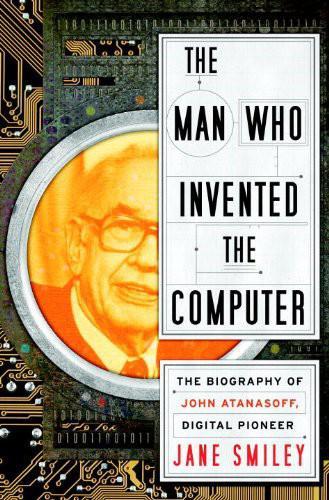
The Man Who Invented the Computer
by
Jane Smiley
Published 18 Oct 2010
It had an add-subtract mechanism, served by a single carry-borrow condenser … and also a mechanism to perform the restore but not the shift function” (p. 22). 2. Yet another irony of Atanasoff’s story is that the student who dismantled the computer, Robert Stewart, later served as chairman of the computer science department. Chapter Five Throughout the Second World War, the Germans used a mechanical encoding device that they called the Enigma machine. It had been patented in 1918 or 1919 and put to use by the German army and navy by 1929. In 1931, a German working in the Cipher Office began selling information about the machine (including photographs of the instruction manuals) to the French, but neither the French nor British could break the code.
…
The decoding machines Rejewski constructed were called “Bombas” (named, some said, after the ticking sounds they produced while working). The Bombas operated according to Rejewski’s insight that German intelligence operators signaled the day’s encryption key by typing in the same three letters twice in a row (for example NGHNGH) followed by the new settings for the three rotors of the Enigma machine. Knowing what these double letters signified, Rejewski then inferred the entire structure of the Enigma and its operation—the Bombas were built to sift through strings of code and find those that were likely to be messages. Through mid-1939, the Poles kept their knowledge to themselves. When the Germans introduced more rotors into the Enigma, the Poles quickly figured out how the rotors worked, but five rather than three rotors raised the number of possible combinations tenfold, outstripping the capacity of the Bombas to quickly sort through encoded messages.
…
Turing was an enthusiastic puzzle solver, but since he was also a mathematician, he understood both large numbers (as in the number of combinations of letters that had to be tested in order to break a code) and probability (which combinations were likely to lead to dead ends and which were likely to be productive). It was Turing and an associate, Gordon Welchman, who were to address the problem of the extra rotors that had been added to the Enigma machine. The new “Bombes,” as they were rechristened, were designed using relays. Andrew Hodges maintains that Turing “was the right person to see what was needed, for his unusual experience with the relay multiplier [he had built at Princeton] had given him insight into the problems of embodying logical manipulations in this kind of machinery.”

Rebel Ideas: The Power of Diverse Thinking
by
Matthew Syed
Published 9 Sep 2019
A preservative of teeth (6) 29. Famous sculptor (5) 30. This part of the locomotive engine would sound familiar to the golfer (5) * Bletchley Park is the name of the estate in rural Buckinghamshire, fifty miles north-west of London, where a team of men and women were assembled to work on the most secret of missions. The Enigma machine was an encryption device used by Nazi Germany across all branches of its armed forces. The devices were small, not dissimilar to a typewriter in a wooden box, with an encryption technology that consisted of an electromechanical rotor mechanism that scrambled the twenty-six letters of the alphabet.
…
There was a human element, too, a point made by the science writer Tom Chivers: Crosswords are about getting inside the mind of your opponent, and in the same way, code-breaking was about getting inside the mind of your enemy. The code-breakers came to know the people encoding the messages individually, by their styles, as crossword-solvers come to know setters. Mavis Batey worked out that two of the Enigma machine operators had girlfriends called Rosa.18 The letter that arrived on Stanley Sedgewick’s doorstep wasn’t a punt. It wasn’t about diversity for the sake of it. No, this was diversity precision-engineered to maximise collective intelligence. ‘It took imagination to bring together the different minds to solve a fiendishly difficult problem,’ Smith, who was an intelligence officer before becoming a journalist and author, told me.
…
‘It took imagination to bring together the different minds to solve a fiendishly difficult problem,’ Smith, who was an intelligence officer before becoming a journalist and author, told me. To put it another way, cracking the Enigma code relied on cracking a prior code: the diversity code. How easy it would have been to hire brilliant individuals of a similar ilk and background. How easy to hire mathematicians who were superb at analysing data from the Enigma machines, but might not have stopped to wonder about their human operators. By taking a step back, by pondering the blind spots in any perspective, by having the ingenuity to seek insights across the universe of useful ideas, Bletchley Park came to express a collective intelligence of an unusual and remarkable kind.
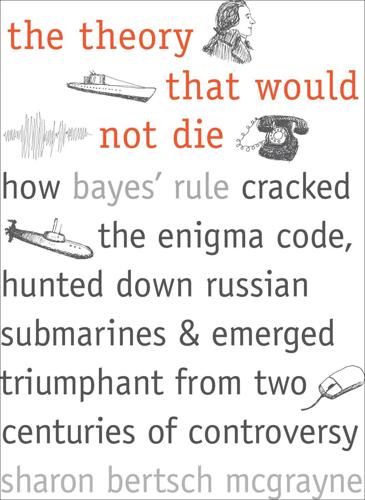
The Theory That Would Not Die: How Bayes' Rule Cracked the Enigma Code, Hunted Down Russian Submarines, and Emerged Triumphant From Two Centuries of Controversy
by
Sharon Bertsch McGrayne
Published 16 May 2011
Despite the progress made on breaking German air force and army codes, no one at Bletchley Park wanted to tackle the German naval codes, the key to winning the U-boat war in the Atlantic. Of all the branches of the Axis military, Hitler’s navy operated the most complex Enigma machines and security systems. By war’s end, a naval Enigma machine could be set up an astronomical number of ways. According to a Bletchley Park decoder, “All the coolies in China could experiment for months without reading a single message.”6 At any one time the machine could use 1 of 4 reflector combinations (each of which could be set in 26 different ways); 3 of 8 rotors (giving up to 336 permutations); more than 150 billion plugboard combinations; 17,000 possible clip positions around the rotors; and 17,000 possible starting positions (half a million in four-rotor machines).
…
He used inspired guesswork and group theory—the new mathematics of transformation—to make a crucial discovery: how the wheels on an Enigma were wired. By early 1938 the Poles were reading 75% of Germany’s army and air force messages. Shortly before their country was invaded in 1939 they invited French and British agents to a safehouse in the Pyry Forest outside Warsaw, revealed their system, and sent an updated Enigma machine to London. To an observer, an Enigma looked rather like a complicated typewriter, with a traditional keyboard of 26 letter keys and a second array of 26 lettered lights. Each time a typist pressed a letter key, an electric current passed through a set of three wheels and advanced one of them a notch.
…
One of the factors that made breaking the Enigma code so difficult was that the operator doubly-enciphered a trio of letters that began each message and that indicated the starting positions of the Enigma’s three wheels. The operator enciphered the three letters twice over: once mechanically, with his Enigma machine, and once manually, by selecting one of nine sets of tables in a codebook issued to each sub. The operator learned which table to use each day by consulting a calendar issued with the tables. If a U-boat came under attack, crews had strict orders to destroy the tables either before abandoning ship or as the enemy was about to board.
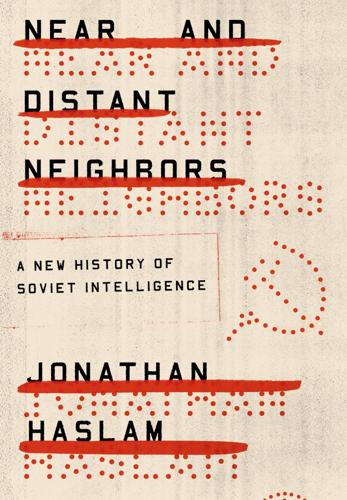
Near and Distant Neighbors: A New History of Soviet Intelligence
by
Jonathan Haslam
Published 21 Sep 2015
The inability to break the ciphers of the German Enigma machine that transmitted crucial information on the order of battle, including the instructions of the High Command, would have proved crippling had it not been for human intelligence from London. Enigma was capable of producing more than one hundred fifty million permutations; it threatened to leave Russian cryptographers, armed only with pencil and paper, entirely overwhelmed. The Costs of Backwardness A momentary breakthrough miraculously occurred just in time for the massive Soviet counteroffensive at Stalingrad: the Russians captured an Enigma machine and several German cryptographers.
…
Hitler wasted no time in opening an international campaign against communism in general and, in a new twist, the Soviet Union in particular. Germany had enormous strengths, not least in engineering. Berlin was quick to innovate if this could put it ahead of the game. Thus began the adaptation of the Enigma machine (originally devised to ensure commercial secrecy) for enciphering government communications. This fast created a more elaborate defence against decryption than the Russians had any hope of countering. Moscow was so far out of touch with the latest developments that, in response to the threat from Germany, it failed to procure manuals for the machine ciphers and did not even bother to buy the machines themselves.
…
Led by a brilliant cryptographer, Mikhail Sokolov, adopted by the OGPU as an orphan and educated entirely by it, the team succeeded in creating a mathematical model of Enigma, a feat for which they were decorated on November 29, 1942. But this vital advance proved agonisingly fleeting.5 On January 17, 1943, the Germans, aware that they had abandoned twenty-six Enigma machines at Stalingrad, introduced changes that stumped the Russians. Only with respect to Japan were the Russians consistently ahead. In the crisis year 1941, when Stalin waited anxiously in anticipation of a Japanese decision to take advantage of the German onslaught to attack Russia from the East, Boris Aronskii deciphered ambassadorial communications from a range of Germany’s allies in Tokyo.

Little Brother
by
Cory Doctorow
Published 29 Apr 2008
Darryl gave me a biography of Turing for my 14th birthday -- wrapped in twenty layers of paper and in a recycled Batmobile toy, he was like that with presents -- and I've been a Turing junkie ever since. Now the Allies had the Enigma Machine, and they could intercept lots of Nazi radio-messages, which shouldn't have been that big a deal, since every captain had his own secret key. Since the Allies didn't have the keys, having the machine shouldn't have helped. Here's where secrecy hurts crypto. The Enigma cipher was flawed. Once Turing looked hard at it, he figured out that the Nazi cryptographers had made a mathematical mistake. By getting his hands on an Enigma Machine, Turing could figure out how to crack any Nazi message, no matter what key it used.
…
The thing is, ciphers are hard to keep secret. There's a lot of math that goes into one, and if they're widely used, then everyone who uses them has to keep them a secret too, and if someone changes sides, you have to find a new cipher. The Nazi cipher was called Enigma, and they used a little mechanical computer called an Enigma Machine to scramble and unscramble the messages they got. Every sub and boat and station needed one of these, so it was inevitable that eventually the Allies would get their hands on one. When they did, they cracked it. That work was led by my personal all-time hero, a guy named Alan Turing, who pretty much invented computers as we know them today.
…
Cryptome's brave publishers collect material that's been pried out of the state by Freedom of Information Act requests or leaked by whistle-blowers and publishes it. The best fictional account of the history of crypto is, hands-down, Neal Stephenson's Cryptonomicon (Avon, 2002). Stephenson tells the story of Alan Turing and the Nazi Enigma Machine, turning it into a gripping war-novel that you won't be able to put down. The Pirate Party mentioned in Little Brother is real and thriving in Sweden (www.piratpartiet.se), Denmark, the USA and France at the time of this writing (July, 2006). They're a little out-there, but a movement takes all kinds.

The Music of the Primes
by
Marcus Du Sautoy
Published 26 Apr 2004
Since then, successive generations have concocted ever more sophisticated cryptographic methods. The ultimate mechanical encoding device was the German Enigma machine used by German forces in the Second World War. Before 1977, anyone who wanted to send a secret message faced an inherent problem. Before the message was transmitted, sender and receiver would have to meet in advance to decide which cipher – the method of encryption – to use. The Spartan generals, for example, would have needed to agree on the dimensions of the scytale cylinder. Even with the mass-produced Enigma machine, Berlin would still have to dispatch agents to deliver to U-boat captains and tank commanders the books detailing the machine settings for encoding each day’s messages.
…
It was while at Bletchley that Turing came to understand, as Babbage had some hundred years before, that it was better to construct a single machine that could be told to do different tasks rather than build a completely new one for each new problem. Although he already knew this in principle, he was to learn the hard way that this should be implemented in practice too. When the Germans changed the designs of the Enigma machines being used in the field, Bletchley Park was plunged into weeks of silence. Turing realised that the code-breakers needed a machine that could be adapted to cope with any change the Germans might make to their machines. After the war had finished, Turing began to explore the possibility of building a universal computing machine that could be programmed to perform a multitude of tasks.
…
And just as it was mathematicians at Bletchley Park who cracked the wartime Enigma, it would be mathematicians who created a new generation of codes that took cryptography out of the spy novel and into the global village. These mathematical codes underpinned the birth of what is known as public-key cryptography. Think of encoding and decoding as locking and unlocking a door. With a conventional door the same key is used both to lock it and to unlock it. With the Enigma machine, the setting used to encode a message is the same as the setting used to decode it. The setting – call it the key – must be kept secret. The farther the recipient is from the sender, the more logistically difficult it becomes to deliver the key being used to lock and unlock the message. Suppose a spymaster wanted to receive reports securely from a number of different agents in the field, but didn’t want them to be able to read one another’s messages.
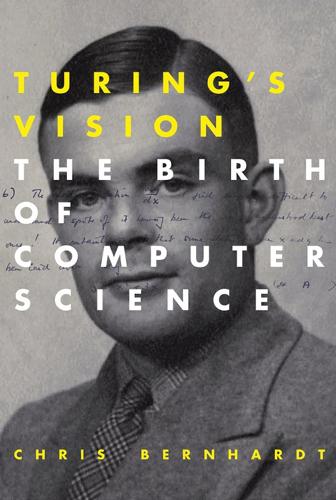
Turing's Vision: The Birth of Computer Science
by
Chris Bernhardt
Published 12 May 2016
Second World War After his time at Princeton, Turing returned to his position at Cambridge, but also started working on code breaking for the Government Code and Cipher School (GC&CS).6 When Britain declared war on Germany in September 1939, Turing moved to Bletchley Park, the wartime location of GC&CS, to work full time on cryptanalysis. Germany was using Enigma machines to encode and decode all of their military’s messages. These machines had a keyboard in which the operator typed letters. Their interiors contained a number of rotors. At the start of the encoding process, the operator had to insert the rotors in a certain order, then rotate them to the appropriate initial setting.
…
After it was known exactly how the encoding process worked, the second step was to discover the initial settings of the machine for each intercepted message. Before the war had started, the Poles had completed both steps. The Polish mathematician Marian Rejewski and his team of cryptologists had managed to reverse engineer the Enigma machine and had worked out the complete wiring diagram. This was a remarkable feat that required knowledge about abstract properties of permutations. Statistics and probability had always been in the cryptologists’ toolbox, but Rejewski realized that theorems in an area of pure mathematics called group theory could help in determining how the machine worked.

Darwin Among the Machines
by
George Dyson
Published 28 Mar 2012
Scherbius then founded the Chiffriermaschinen Aktien-Gesellschaft to manufacture the machine, christened the Enigma, for enciphering commercial communications, such as transfers between banks. The machine attracted a modest following, but sales were limited until the German navy changed its mind. Modified versions of the Enigma machine were adopted by the German navy in 1926, the German army in 1928, and the German air force in 1935. The heart of the Enigma was a series of flat, wheel-shaped rotors, with twenty-six electrical contacts, one for each letter of the alphabet, arranged in a circle on each face. The contacts were connected in unpredictable order so that a signal going in one side of the rotor as a given letter emerged on the other side as something else.
…
As guests of the Foreign Office’s Government Code and Cypher School the cryptanalysts kept a low profile, although it was difficult to conceal that so many gifted mathematicians (especially chess players) had suddenly dropped out of sight. Suspicious, but not suspicious enough, the German authorities modified the commercial Enigma machine and frequently changed the keys, suspecting internal spies whenever there was evidence of a leak. For more secure communications, especially with the U-boat fleet, an additional rotor position was added as well as an auxiliary plugboard that further scrambled ten pairs of letters, leaving only six letters unchanged.
…
Sudden leaps in biological or technological evolution occur when an existing structure or behavior is appropriated by a new function that spreads rapidly across the evolutionary landscape, taking advantage of a head start. Feathers must have had some other purpose before they were used to fly. U-boat commanders appropriated the Enigma machine first developed for use by banks. Charles Babbage envisioned using the existing network of church steeples that rose above the chaos of London as the foundation for a packet-switched communications net. According to neurophysiologist William Calvin, the human mind appropriated areas of our brains that first evolved as buffers for rehearsing and storing the precise timing sequences required for ballistic motor control.

Visual Thinking: The Hidden Gifts of People Who Think in Pictures, Patterns, and Abstractions
by
Temple Grandin, Ph.d.
Published 11 Oct 2022
After he received his PhD, Turing produced groundbreaking work in mathematical biology, explaining such disparate things as how fingers are formed during embryonic development and how zebras get their stripes. Turing’s abilities proved more than theoretical when, during World War II, he broke the Germans’ Enigma machine code that encrypted messages detailing their military operations. The Enigma machine was a typewriter-like device that used rotating discs to both encrypt and read coded messages. Cracking its code made it possible for the British to anticipate German strategic plans and troop movements, saving thousands of lives. Turing’s brilliant career abruptly ended at age forty-one.
…
See Happy (elephant) Emanuel, Ari, 176–77 Emory University, 263 emotion and the brain, 261–67 children and, 259 limited in the autistic, 44, 270, 274 and verbal thinkers, 273–74 See also animals: and emotion Emotional Brain, The (LeDoux), 265 Engineering and the Mind’s Eye (Ferguson), 89 engineers, 6, 51–52, 89, 93 and architects, 133–37 collaborations of, 126–27, 129, 133–37 cultivating them, 97–107 mechanical, 32–33, 126–27, 130–31, 134–36, 139 screened out, 96 as spatial visualizers, 91, 95, 133, 137, 196 vague language of, 234–35 as visual thinkers, 88–89, 95 England, 39, 99, 179, 244. See also United Kingdom (UK) Enigma machine, 180 entrepreneurs, 35 with ADHD, 157–59, 162–63 with Asperger’s, 103–4, 163–64, 182 with autism, 98–99, 163–64 successful examples of, 113, 122–24 See also specific names Ernst, Richard R., 90 Every Student Succeeds Act, 51 eye tracking, 32, 38 F Facebook, 116, 124, 164 Failure of Risk Management, The (Hubbard), 201 FairTest, 71 Falk, Dean, 188 Fanselow, Michael, 257 farm animals, 269–73.

The Numerati
by
Stephen Baker
Published 11 Aug 2008
This small cryptology museum is a monument to the code-breaking heritage of the NSA. Governments and armies throughout history have relied on their cleverest geeks to devise secret codes to protect their vital messages. They've also counted on them to hack the secrets coming from the other side. In one of the glass cases here is Nazi Germany's famous Enigma machine, whose code was broken by ingenious British mathematicians. This was a key to victory in World War II. With the founding of the NSA, in 1952, the U.S. government built code breaking into an entire bureaucracy. It quickly grew into the largest math shop in the world (which it remains to this day, though the agency never divulges the numbers).
…
"buckets," [>]–[>] data mining and, [>] of Internet survey respondents, [>] and online dating services, [>], [>], [>] and voting behavior, [>]–[>], [>]–[>], [>], [>] See also Age; Gender Deodorants, [>]–[>] Dietrich, Brenda, [>] "Directors" (personality type), [>]–[>] Disciplines (academic) algorithms as making study possible across, [>], [>]–[>] and mathematical modeling, [>], [>], [>], [>], [>]–[>], [>], [>]–[>] Dishman, Eric, [>]–[>], [>], [>], [>]–[>] DNA, [>], [>] behavior likened to, [>], [>]–[>], [>], [>], [>], [>] "Domain," [>] Dopamine, [>] Dowd, Matthew, [>], [>] Driving sensors, [>] Dubrawski, Artur, [>]–[>] Eagle, Nathan, [>]–[>] "Edges" (in social networks), [>]–[>] "Eigenbehavior," [>] Einhorn, Jack, [>]–[>], [>]–[>] Einhorn, Joe, [>]–[>] E-mail data mining of, [>], [>], [>], [>]–[>], [>], [>] memory issues revealed in, [>]— See also Spam Emotion analysis, [>], [>], [>], [>]–[>], [>] Engineers, [>], [>], [>] See also Numerati Enigma machine, [>] Enron Corporation, [>]–[>], [>] Essex County (New Jersey), [>]–[>] Estrogen, [>], [>] Evans, David, [>] "Explorers" (personality type), [>]–[>], [>] Facebook. See Social networks Facial recognition, [>]–[>], [>]–[>] Fair, Bill, [>], [>] Fair Isaac (company), [>], [>], [>], [>] Falls (by the elderly), [>], [>] "False positives" (in data mining), [>], [>], [>], [>], [>] FBI, [>] "Feedback loop," [>] Finance, [>], [>]–[>] See also Credit (consumer) Fisher, Helen, [>]–[>], [>]–[>], [>] Focus groups, [>] Ford Corporation, [>] Fox, Michael J., [>] Friedman, Jerry, [>] Friends finding, as a business, [>]–[>] and "Next Friend Analysis," [>]–[>], [>] See also Dating services; Social networks "Garbage in, garbage out," [>], [>] "Gatorade" tribe, [>] Gender, [>]–[>], [>]–[>], [>]–[>] Generations.

Thinking Machines: The Inside Story of Artificial Intelligence and Our Race to Build the Future
by
Luke Dormehl
Published 10 Aug 2016
During the Second World War, he led a team for the Government Code and Cypher School at Britain’s secret code-breaking centre, Bletchley Park. There he came up with various techniques for cracking German codes, most famously an electromechanical device capable of working out the settings for the Enigma machine. In doing so, he played a key role in decoding intercepted messages, which helped the Allies defeat the Nazis. Turing was fascinated by the idea of thinking machines and went on to devise the important Turing Test, which we will discuss in detail in a later chapter. As a child, he read and loved a book called Natural Wonders Every Child Should Know, by Edwin Tenney Brewster, which the author described as ‘an attempt to lead children of eight or ten, first to ask and then to answer the question: “What have I in common with other living things, and how do I differ from them?”’
…
To find a specific word or phrase from the index, please use the search feature of your ebook reader. 2001: A Space Odyssey (1968) 2, 228, 242–4 2045 Initiative 217 accountability issues 240–4, 246–8 Active Citizen 120–2 Adams, Douglas 249 Advanced Research Projects Agency (ARPA) 19–20, 33 Affectiva 131 Age of Industry 6 Age of Information 6 agriculture 150–1, 183 AI Winters 27, 33 airlines, driverless 144 algebra 20 algorithms 16–17, 59, 67, 85, 87, 88, 145, 158–9, 168, 173, 175–6, 183–4, 186, 215, 226, 232, 236 evolutionary 182–3, 186–8 facial recognition 10–11, 61–3 genetic 184, 232, 237, 257 see also back-propagation AliveCor 87 AlphaGo (AI Go player) 255 Amazon 153, 154, 198, 236 Amy (AI assistant) 116 ANALOGY program 20 Analytical Engine 185 Android 59, 114, 125 animation 168–9 Antabi, Bandar 77–9 antennae 182, 183–5 Apple 6, 35, 56, 65, 90–1, 108, 110–11, 113–14, 118–19, 126–8, 131–2, 148–9, 158, 181, 236, 238–9, 242 Apple iPhone 108, 113, 181 Apple Music 158–9 Apple Watch 66, 199 architecture 186 Artificial Artificial Intelligence (AAI) 153, 157 Artificial General Intelligence (AGI) 226, 230–4, 239–40, 254 Artificial Intelligence (AI) 2 authentic 31 development problems 23–9, 32–3 Good Old-Fashioned (Symbolic) 22, 27, 29, 34, 36, 37, 39, 45, 49–52, 54, 60, 225 history of 5–34 Logical Artificial Intelligence 246–7 naming of 19 Narrow/Weak 225–6, 231 new 35–63 strong 232 artificial stupidity 234–7 ‘artisan economy’ 159–61 Asimov, Isaac 227, 245, 248 Athlone Industries 242 Atteberry, Kevan J. 112 Automated Land Vehicle in a Neural Network (ALVINN) 54–5 automation 141, 144–5, 150, 159 avatars 117, 193–4, 196–7, 201–2 Babbage, Charles 185 back-propagation 50–3, 57, 63 Bainbridge, William Sims 200–1, 202, 207 banking 88 BeClose smart sensor system 86 Bell Communications 201 big business 31, 94–6 biometrics 77–82, 199 black boxes 237–40 Bletchley Park 14–15, 227 BMW 128 body, machine analogy 15 Bostrom, Nick 235, 237–8 BP 94–95 brain 22, 38, 207–16, 219 Brain Preservation Foundation 219 Brain Research Through Advanced Innovative Neurotechnologies 215–16 brain-like algorithms 226 brain-machine interfaces 211–12 Breakout (video game) 35, 36 Brin, Sergey 6–7, 34, 220, 231 Bringsjord, Selmer 246–7 Caenorhabditis elegans 209–10, 233 calculus 20 call centres 127 Campbell, Joseph 25–6 ‘capitalisation effect’ 151 cars, self-driving 53–56, 90, 143, 149–50, 247–8 catering 62, 189–92 chatterbots 102–8, 129 Chef Watson 189–92 chemistry 30 chess 1, 26, 28, 35, 137, 138–9, 152–3, 177, 225 Cheyer, Adam 109–10 ‘Chinese Room, the’ 24–6 cities 89–91, 96 ‘clever programming’ 31 Clippy (AI assistant) 111–12 clocks, self-regulating 71–2 cognicity 68–9 Cognitive Assistant that Learns and Organises (CALO) 112 cognitive psychology 12–13 Componium 174, 176 computer logic 8, 10–11 Computer Science and Artificial Intelligence Laboratory (CSAIL) 96–7 Computer-Generated Imagery (CGI) 168, 175, 177 computers, history of 12–17 connectionists 53–6 connectomes 209–10 consciousness 220–1, 232–3, 249–51 contact lenses, smart 92 Cook, Diane 84–6 Cook, Tim 91, 179–80 Cortana (AI assistant) 114, 118–19 creativity 163–92, 228 crime 96–7 curiosity 186 Cyber-Human Systems 200 cybernetics 71–4 Dartmouth conference 1956 17–18, 19, 253 data 56–7, 199 ownership 156–7 unlabelled 57 death 193–8, 200–1, 206 Deep Blue 137, 138–9, 177 Deep Knowledge Ventures 145 Deep Learning 11–12, 56–63, 96–7, 164, 225 Deep QA 138 DeepMind 35–7, 223, 224, 245–6, 255 Defense Advanced Research Projects Agency (DARPA) 33, 112 Defense Department 19, 27–8 DENDRAL (expert system) 29–31 Descartes, René 249–50 Dextro 61 DiGiorgio, Rocco 234–5 Digital Equipment Corporation (DEC) 31 Digital Reasoning 208–9 ‘Digital Sweatshops’ 154 Dipmeter Advisor (expert system) 31 ‘do engines’ 110, 116 Dungeons and Dragons Online (video game) 197 e-discovery firms 145 eDemocracy 120–1 education 160–2 elderly people 84–6, 88, 130–1, 160 electricity 68–9 Electronic Numeric Integrator and Calculator (ENIAC) 12, 13, 92 ELIZA programme 129–30 Elmer and Elsie (robots) 74–5 email filters 88 employment 139–50, 150–62, 163, 225, 238–9, 255 eNeighbor 86 engineering 182, 183–5 Enigma machine 14–15 Eterni.me 193–7 ethical issues 244–8 Etsy 161 Eurequa 186 Eve (robot scientist) 187–8 event-driven programming 79–81 executives 145 expert systems 29–33, 47–8, 197–8, 238 Facebook 7, 61–2, 63, 107, 153, 156, 238, 254–5 facial recognition 10–11, 61–3, 131 Federov, Nikolai Fedorovich 204–5 feedback systems 71–4 financial markets 53, 224, 236–7 Fitbit 94–95 Flickr 57 Floridi, Luciano 104–5 food industry 141 Ford 6, 230 Foxbots 149 Foxconn 148–9 fraud detection 88 functional magnetic resonance imaging (fMRI) 211 Furbies 123–5 games theory 100 Gates, Bill 32, 231 generalisation 226 genetic algorithms 184, 232, 237, 257 geometry 20 glial cells 213 Go (game) 255 Good, Irving John 227–8 Google 6–7, 34, 58–60, 67, 90–2, 118, 126, 131, 155–7, 182, 213, 238–9 ‘Big Dog’ 255–6 and DeepMind 35, 245–6, 255 PageRank algorithm 220 Platonic objects 164, 165 Project Wing initiative 144 and self-driving cars 56, 90, 143 Google Books 180–1 Google Brain 61, 63 Google Deep Dream 163–6, 167–8, 184, 186, 257 Google Now 114–16, 125, 132 Google Photos 164 Google Translate 11 Google X (lab) 61 Government Code and Cypher School 14 Grain Marketing Adviser (expert system) 31 Grímsson, Gunnar 120–2 Grothaus, Michael 69, 93 guilds 146 Halo (video game) 114 handwriting recognition 7–8 Hank (AI assistant) 111 Hawking, Stephen 224 Hayworth, Ken 217–21 health-tracking technology 87–8, 92–5 Healthsense 86 Her (film, 2013) 122 Herd, Andy 256–7 Herron, Ron 89–90 High, Rob 190–1 Hinton, Geoff 48–9, 53, 56, 57–61, 63, 233–4 hive minds 207 holograms 217 HomeChat app 132 homes, smart 81–8, 132 Hopfield, John 46–7, 201 Hopfield Nets 46–8 Human Brain Project 215–16 Human Intelligence Tasks (HITs) 153, 154 hypotheses 187–8 IBM 7–11, 136–8, 162, 177, 189–92 ‘IF THEN’ rules 29–31 ‘If-This-Then-That’ rules 79–81 image generation 163–6, 167–8 image recognition 164 imagination 178 immortality 204–7, 217, 220–1 virtual 193–8, 201–4 inferences 97 Infinium Robotics 141 information processing 208 ‘information theory’ 16 Instagram 238 insurance 94–5 Intellicorp 33 intelligence 208 ambient 74 ‘intelligence explosion’ 228 top-down view 22, 25, 246 see also Artificial Intelligence internal combustion engine 140–1, 150–1 Internet 10, 56 disappearance 91 ‘Internet of Things’ 69, 70, 83, 249, 254 invention 174, 178, 179, 182–5, 187–9 Jawbone 78–9, 92–3, 254 Jennings, Ken 133–6, 138–9, 162, 189 Jeopardy!
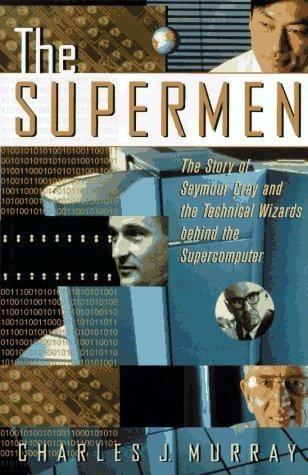
The Supermen: The Story of Seymour Cray and the Technical Wizards Behind the Supercomputer
by
Charles J. Murray
Published 18 Jan 1997
By now they incorporated advanced circuits with more than fifteen hundred vacuum tubes. When technicians entered a coded message into its circuits, a Bombe could buzz through a decryption in about the same time as it took a thousand cryptanalytic clerks. It was uncanny. Some- where in the Atlantic a Nazi technician would tap the keys of the Enigma machine and scramble a message in such a way that a codebreaker would have to try millions of permutations to crack it. And yet the machines could, in some cases, blaze through that code in a few minutes. Now the Bombes were cracking U-66's coded message-and it was about time. Since early in the war U-66 had done more than its share of damage.
…
Presper, 35-37, 52 Eckert-MaucWy Computer Corp., 33, 35-40, 44 Edison, Thomas, 5 Einstein, Albert, 5 Eisenhower, Dwight, 35 230 / INDEX Electricite de France, 192 Energy Research & Development Adminis- tration, 144 engineering profession, the, 24, 25 Engineering Research Associates and the CDC dining room table, 194 commercial attempts, 32, 33 creative freedom, 25, 26 and CSAW, 33 description of, 21, 22, 23 and Eckert-Mauchly, 35, 36 ERA engineers, 22 financial arrangemen ts, 29 formation of, 19 glider factory, 19, 21 informality, 26 projects, 27 sold to Remington Rand, 33 Engstrom, Howard, 13, 14, 17, 18 ENIAC, 33, 34, 35, 36 Enigma machine, 7 ERA 1101,32 ERA 1103,43 ETA-I0 computer, 185, 195 ETA Systems death of, 193-196, 217 dining room table, 193-196 formation of, 175-177 European Centre for Medium Range Weather Forecasts, 145 Fairchild Semiconductor, 80, 179 Fernbach, Sidney, 59, 141 Fifth Generation program, 178 Floating Point Systems, Inc., 169 Fluorinert liquid, 162 Ford Motor Company, 24, 192 Forrestal,james V., 16 Fortune, III Fujitsu Inc., 181, 183 gallium arsenide, 4-6, 177, 179, 205 General Electric Co., 38-40, 53, 63 General Motors Corp., 24, 140 General Transistor Corp., 67 GigaBit Logic, 205 glider factory.

The Perfect Bet: How Science and Math Are Taking the Luck Out of Gambling
by
Adam Kucharski
Published 23 Feb 2016
Although he was based mainly in Cambridge, he also took up a part-time position with the Government Code and Cypher School at nearby Bletchley Park. When the Second World War broke out in autumn 1939, Turing found himself at the forefront of the British effort to break enemy codes. During that period, the German military encrypted radio messages using so-called Enigma machines. These typewriter-like contraptions had a series of rotors that converted keystrokes into coded text. This complexity of the encryption was a major obstacle for the code breakers at Bletchley Park. Even if Turing and his colleagues had clues about the messages—for example, certain “crib” words that were likely to appear in the text—there were still thousands of possible rotor settings to trawl through.
…
See card counting Crick, Francis, 23 cricket, 90 curiosity, following, 218 Dahl, Fredrik, 172–173, 175, 176, 177, 182–183, 184, 185 Darwin, Charles, 46 data access to, 142 availability of, 54, 55, 68, 73, 86, 102, 174, 209 better, sports analysis methods and access to, 207, 217 binary, 116 collecting as much as possible, 4–5, 103 enough, to test strategies, 131 faster transatlantic travel of, 113 juggling, 166 limited, 84 new, testing strategies against, 53, 54 statistics and, importance of, in sports, 79, 80 storage and communication of, 11 data chunks, memory capacity and size of, 179–180 Deceptive Interaction Task, 190–191 decision making, chaotic, 162 decision-making layers, 173–174 Deep Blue chess computer, 166, 167, 171, 176 Deep Thought chess computer, 167 DeepFace Facebook algorithm, 174–175 DeRosa, David, 198–199, 200 Design of Experiments, The (Fisher), 24 deterministic game, 156 Diaconis, Persi, 62–63 DiCristina, Lawrence, 198, 199, 200, 201 Dixon, Mark, 74, 75, 76–78, 82, 97–98, 107, 218 Djokovic, Novak, 110 Dobson, Andrew, 129 Dodds, Peter Sheridan, 203 dogma, avoiding, 218 dovetail shuffle, 41–42, 62 Dow Jones Industrial Average, 96, 121, 122 Drug Enforcement Administration, 214 eBay, 94 Econometrica (journal), 148 economic theory, 153 ecosystems, 125–129, 130–131, 133 Einstein, Albert, 210 endgame database, 159–160 English Draughts Association, 156 English Premier League, 209 Enigma machines, 169–170 Eslami, Ali, 185–186, 187 Ethier, Stewart, 7–8 Eudaemonic Pie, The (Bass), 14, 15 Eudaemonic prediction method, 14, 15–20, 22, 124, 208 Euro 2008 soccer tournament, 76 European Championship (soccer tournament), 111 European currency union, 129 every-day gamblers, 102, 107 exchange rate, 110 exchanges.
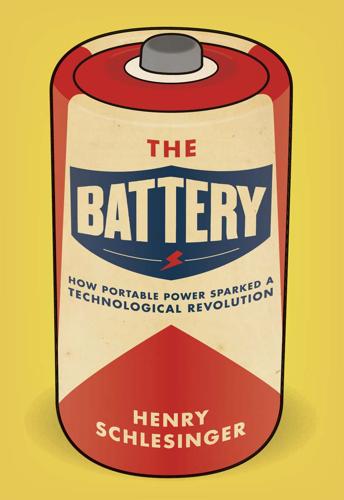
The Battery: How Portable Power Sparked a Technological Revolution
by
Henry Schlesinger
Published 16 Mar 2010
Large bulky things, they consisted of stacks of reinforced batteries and crudely “shock-proofed” circuitry powering a simple radio transmitter in a sturdy metal frame that automatically sent out an SOS signal when the plane crashed. Naturally, there were also innovations on the other side, notably the Enigma machine. Despite popular belief, the Nazis didn’t invent the Enigma; it was originally built in the 1920s and intended for businesses. As one brochure printed in English proclaimed, “One secret, well-protected, may pay for the whole cost of the machine…” Scaled down considerably over the years, the device was not only portable enough to carry around easily, but featured a series of small electric “lamps” that were battery powered.
…
T., 271 Branly, Édouard, 189 Brattain, Walter, 244 Braun, Karl Ferdinand, 207, 259 Breguet, Abraham-Louis, 99, 112, 145 Breguet, Louis-François, 112, 145 broadcasting, 195–96, 205, 217–24 early, 217–24 Brown, Thomas, Pseudodoxia Epidemica, 18 Brugnatelli, Luigi, 65–66 Brush Arc Lighting Company, 153 Bunsen, Robert Wilhelm Eberhard, 95–96 Bunsen battery, 96 Burgess, Charles, 215 Burgess Battery Company, 213, 215 Bush, Vannevar, 225, 236–37, 281 “As We May Think,” 236, 237 “Science the Endless Frontier,” 236, 237 Busicom, 268 Byron, Lord, 62, 64, 73, 120 Don Juan, 64 cable, transatlantic, 119–23, 123, 124–27 cadmium, 239 Calahan, Edward A., 138–39 calculators, pocket, 267–68 calculus, 76 Callan, Nicholas, 94–95, 142 call boxes, electronic, 131 Canon Pocketronic, 268 carbon, 142, 143, 147, 148 Cardano, Girolamo, The Subtlety of Things, 11 Carnegie, Andrew, 133 Carroll, Lewis, 171 catered electricity, 154 cathode, 77, 86, 87 cathode ray tube (CRT), 177–78, 178, 266, 267 Cave, Edward, 33–34 Cavendish, Henry, 28 cell phone, 116, 130, 146, 232, 255, 273, 275, 278 Chaperon, George, 172, 179 Chappe optical telegraph, 98–99, 100, 103, 112, 123 Charterhouse, 22 chemistry, 16, 19, 50, 58–59, 70–71 sets, 200 Chicago, 155, 157 China, 5, 15 circuit boards, 237–39, 249 cities, 164 lighting, 153 Civil War, American, 127, 129–30, 135–36, 188 Clark, Josiah Latimer, 133–34, 142 clocks, electric, 180 coal, 151, 152 cocktail, electric, 167–68 code, 112, 132 Morse, 106–107, 112, 191, 195, 196, 206, 209 codebooks, 112 coffins, electric doorbells for, 132 coherer, 189–91, 199, 206, 209 Cold War, 246–47, 263 Coleridge, Samuel Taylor, 56, 61, 62, 78 collar, electric, 167 Collinson, Peter, 29–30, 33 Colt, Samuel, 107–108 Columbia dry cell, 179–80, 180, 181 computer chip, 263–69 computers, 178, 195 early, 202, 247–48, 262–69 notebook, 255, 273, 275, 277 condensatore, 44–45 Congress, U.S., 90–91, 107, 109, 110, 167, 248 Conrad, Frank, 218 constant battery, 67 consumer electronics, 131–32 of 1920s–1930s, 214–24 of 1950s–1960s, 251–58 of 1970s–1990s, 267–73 postwar, 239–44 twenty-first century, 274–78 Consumer Reports, 254 Cooke, William Fothergill, 103–105 copper, 66, 67, 82, 83, 86, 88, 91, 126, 127, 139, 140, 163 corsets, electric, 164 cost, battery, 96 Cowen, Joshua Lionel, 182–83 Crookes, Sir William, 187 Cruickshank, William, 66, 67, 81, 139 crystals, 206–208, 232 d’Alibard, Thomas-François, 35–36 Daniell, John F., 66–67, 68 Daniell battery, 66–67, 67, 122, 127, 140 Danko, Stanislaus F., 249 Darwin, Erasmus, 37 Datamath, 268 Davenport, Thomas, 91–94 Davenport motor, 92–94 Davidson, Robert, 95 Davy, Humphry, 56–63, 69, 71–76, 77, 271 Elements of Chemical Philosophy, 61, 63 D cell battery, 181–83, 219, 233, 250, 270 Defense Advanced Research Projects Agency (DARPA), 267 deflagrator, 86 de Forest, Lee, 208–209, 211 De la Rue, Warren, 147 demonstrations, scientific, 18, 22, 54, 57–58, 107, 108, 192, 210 Dickens, Charles, 73 digital camera, 271 Dolbear, Amos, 188 doorbells, 131, 132, 134, 143, 153 dry cell, 143, 160, 179–80, 180, 181, 181, 190, 199, 213, 249, 271 Du Fay, Charles-Francois de Cisternay, 23, 24 and n., 37 Dunwoody, Henry Harrison Chase, 207 Duracell, 224, 234 dynamos, 151, 156, 211 Edison, Thomas Alva, 78, 132, 137, 141–42, 147, 148–53, 156, 169–75, 179, 188, 189, 200, 208, 210, 250 electric car, 173–75 electric lighting, 17–53, 173 electric pen, 170, 170, 171 media persona, 149–51 “Edison effect,” 179 Ediswan Company, 147, 208 Edmundson, Thomas, 85 Einstein, Albert, 4, 217 Eisler, Paul, 228 Electrical Experimental, 212 Electrical Review, 165, 167, 168 Electrical World, 207 electric candle, 148 electric car, 173–75, 281 Electric Girl Light Company, 154–55 electricity, 6, 10, 11–15, 126, 200–201 animal, 39–44, 45, 47, 50, 53, 162 bimetallic, 43–50, 59 early–mid nineteenth century, 46–50, 51–68, 69–96, 97–131 early–mid twentieth century, 175, 198–212, 213–50 eighteenth century, 20–38, 39–45 mid–late nineteenth century, 108–130, 131–40, 141–68, 169–94 mid–late twentieth century, 236–50, 251–73 standardized measurement of, 128–29 telegraph and, 97–130 electric lighting, 143, 146–57, 200, 221, 243 battery-powered, 151–55, 180–83 Edison and, 147–53, 173 patents, 147, 151 electric shock, 25–29, 53–55 electric whirl, 21 Electrobat, 174 Electro Importing Company, 198, 200, 203, 223, 243 electrolysis, 58, 77, 271 electromagnetism, 74–76, 80–96, 178 industrial, 85–88, 91–96 telegraphy, 102–130 electrometer, 29, 44–45 Electronics magazine, 265 electrons, 3, 14, 26, 86, 144–45, 178–79, 196, 244–45 discovery of, 178–79 electrophorus, 42 electroplating, 65–66 electrostatic machines, 19–38, 40, 49 electrotherapy, 158, 162–67 Elsi Mate pocket calculator, 267–68 Emerson, Ralph Waldo, 51, 61 Energizer, 179, 241, 243 engineering, 38 ENIAC, 247–48, 265 Enigma machine, 234 Europe. See specific countries and inventions Evans, Mathew, 148 Ever Ready, 182, 183 Eveready, 179, 183, 214–15, 220, 229, 231, 249, 252, 272 Eveready Hour, The, 220 experimentation, 6, 11–38, 78, 186 early–mid nineteenth century, 46–50, 51–68, 69–96, 97–131 early–mid twentieth century, 198–212, 213–50 human, 53–56 mid–late nineteenth century, 108–130, 131–40, 141–68, 169–94 trial-and-error, 149 See also science; specific inventors Fairchild Semiconductor, 264 Faraday, Michael, ix, 69–78, 79, 80, 81, 87, 120, 121, 126, 149, 176, 177, 186, 210, 223 Experimental Researches in Electricity, 149 First Law of Electrolysis, 239, 249, 271, 272 motor, 75, 75, 76–77, 92 “farm radios,” 224 Fessenden, Reginald, 209–240 Field, Cyrus, 118–21, 123, 126 financial industries, 106, 116, 219 speculation, 134–39 telegraph and, 133, 134–39 Fitzgerald, F.
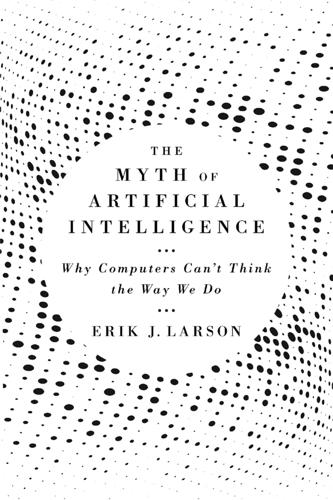
The Myth of Artificial Intelligence: Why Computers Can't Think the Way We Do
by
Erik J. Larson
Published 5 Apr 2021
To decipher a message is to convert it back to readable text).3 The codes were generated by a typewriter-looking device known as the Enigma, a kind of machine that had been in commercial use since the 1920s but that the Germans had strengthened significantly for use in the war. Modified Enigmas were used for all strategic communications in the Nazi war effort. The Luftwaffe, for instance, used the Enigma machine in its conduct of the air war, as did the Kriegsmarine in its naval operations. Messages encrypted with the modified Enigma were widely thought to be undecipherable. Turing’s role in Bletchley and his subsequent rise to national hero after the war is a story that has been told many times. (In 2014, the major motion picture The Imitation Game dramatized his work at Bletchley, as well as his subsequent role in developing computers.)
…
computer), 222–224 deep reinforcement learning, 125, 127 Dostoevsky, Fyodor, 64 Dreyfus, Hubert, 48, 74 earthquake prediction, 260–261 Eco, Umberto, 186 Edison, Thomas, 45 Einstein, Albert, 239, 276 ELIZA (computer program), 58–59, 192–193, 229 email, filtering spam in, 134–135 empirical constraint, 146–149, 173 Enigma (code making machine), 21, 23–24 entity recognition, 137 Etzioni, Oren, 129, 143–144 Eugene Goostman (computer program), 191–195, 214–216 evolutionary technology, 41–42 Ex Machina (film, Garland), 61, 78–80, 82, 84, 277 Facebook, 147, 229, 243 facts, data turned into, 291n12 Farecast (firm), 143–144 feature extraction, 146–147 Ferrucci, Dave, 222, 226 filter bubbles, 151 financial markets, 124 Fisch, Max H., 96–97 Fodor, Jerry, 53 formal systems, 284n6 Frankenstein (fictional character), 238 Frankenstein: Or, a Modern Prometheus (novel, Shelly), 238, 280 frequency assumptions, 150–154, 173 Fully Automated High-Quality Machine Translation, 48 functions, 139 Galileo, 160 gambler’s fallacy, 122 games, 125–126 Gardner, Dan, 69–70 Garland, Alex, 79, 80, 289n16 Gates, Bill, 75 general intelligence, 2, 31, 36; abduction in, 4; in machines, 38; nonexistance of, 27; possible theory of, 271 General Problem Solver (AI program), 51 Germany: Enigma machine of, 23–24; during World War II, 20–21 Go (game), 125, 131, 161–162 Gödel, Kurt, 11, 22, 239; incompleteness theorems of, 12–15; Turing on, 16–18 Golden, Rebecca, 250 Good, I. J. “Jack,” 3, 19; on computers, 46; on intelligence, 33–35, 37, 43, 62; Von Neumann on, 36 Google (firm), 220, 244 Google Brain (computer program), 296n4 Google Duplex, 227 Google Photos, 278–279 Google Talk to Books, 228 Google Translate (computer program), 56, 201, 202 Goostman, Eugene (computer program), 191–195, 214–216 gravimetrics, 157 gravity, 187 Great Britain, code breaking during World War II by, 20–24 Grice, Paul, 215 Grice’s Maxims, 215–216 guesses, 160, 183–184 Haugeland, John, 179, 294n17 Hawking, Stephen, 75 Hawkins, Jeff, 263, 264 Heisenberg, Werner, 72 hierarchical hidden Markov models, 265–266 Higgs, Peter, 254–255 Higgs boson, 254–255, 257–258 Hilbert, David, 14–16 Hill, Sean, 245, 246, 248 Hinton, Geoff, 75 hive mind: online collaboration as, 241–242; origins in Star Trek of, 240; science collaborations as, 245 Homo faber (man the builder), 65, 66 Horgan, John, 275–278 Hottois, Gilbert, 287n1 Human Brain Project, 245, 247–254, 256, 267–268 Human Genome Project, 252 human intelligence: artificial intelligence versus, 1–2; behaviorism on, 69; Data Brain projects and, 251; Good on, 33–35; infinite amount of knowledge in, 54; neocortical theories of, 263–268; as problem solving, 23; singularity as merging with machine intelligence, 47–48; social intelligence, 26–28; Stuart Russell’s definition of, 77, 83; thinking in, 184–186; Turing on, 23, 27–31, 30–32 human language.

Turing's Cathedral
by
George Dyson
Published 6 Mar 2012
At the close of World War I, a cryptographic machine had been invented by the German electrical engineer Arthur Scherbius, who proposed it to the German navy, an offer that was declined. Scherbius then founded the Chiffriermaschinen Aktiengesellschaft to manufacture the machine, under the brand name Enigma, for enciphering commercial communications, such as transfers between banks. The German navy changed its mind and adopted a modified version of the Enigma machine in 1926, followed by the German army in 1928, and the German air force in 1935. The Enigma contained a stack of flat wheel-shaped rotors with 26 electrical contacts, one for each letter of the alphabet, arranged in a circle on each face. The contacts were connected so that a signal entering one side of the rotor as a given letter emerged on the other side as something else.
…
The bombe incremented itself through a space of possibilities and, if it arrived at a possible rotor configuration, came to a halt. The characteristic ticking, followed by silence, may have given the machine its name. Later versions, designed with Turing’s assistance and mass-produced by the British Tabulating Machine Company, emulated thirty-six Enigma machines at a time. The bombes were a concrete implementation of Turing’s idea of a single machine able to imitate the behavior of a multitude of other machines. In 1941, German telecommunications began to be encrypted with much faster, digital equipment: the Geheimschreiber, manufactured by Siemens, and the Schlüsselzusatz, manufactured by Lorenz.
…
In January 1947, Turing himself visited, reporting that “my visit to the U.S.A. has not brought any very important new technical information to light, largely, I think, because the Americans have kept us so well informed during the last year.… The Princeton group seem to me to be much the most clear headed and far sighted of these American organizations, and I shall try to keep in touch with them.”39 The war had scrambled the origins of new inventions as completely as a message passing through an Enigma machine. Radar, cryptanalysis, antiaircraft fire control, computers, and nuclear weapons were all secret wartime projects that, behind the security barriers, enjoyed the benefit of free exchange of ideas, without concern for individual authorship or peer review. Von Neumann served the role of messenger RNA, helping to convey the best of the ideas—including the powers of Turing’s Universal Machine.
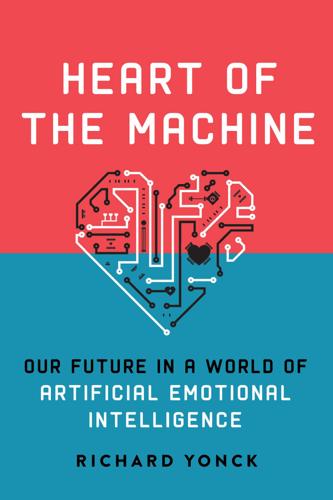
Heart of the Machine: Our Future in a World of Artificial Emotional Intelligence
by
Richard Yonck
Published 7 Mar 2017
As it was, soon after the end of World War II, computer science and theory were at such a stage that a number of researchers and scientists believed we would be capable of building a true machine intelligence before very long. In light of all of this, it’s easier to see how the newfound field of computer science got it so wrong. Machine “intelligence” had won the war—at first nearly for Germany, but ultimately for the Allies. Without technology, Germany’s Enigma machine couldn’t have encoded and decoded thousands upon thousands of seemingly indecipherable messages. Without even more sophisticated technology (augmented by human intelligence, a crucial ingredient), the Allies couldn’t have cracked what was the cutting-edge and nearly unbreakable encryption of its day.
…
See also autism; emotion processing unit (EPU); Emotional Facial Action Coding System emotional empathy, 265–266 Emotional Facial Action Coding System, 56 emotional intelligence (EQ), 202, 225 emotional manipulation, 139–140 emotionally aware technology, growth of anticipating abuse of, 165–167 future of, 168–176 unexpected nature of, 162–165 emotioneers, 63 Emotiv, 213 Empatica, Inc., 70, 74 Empatica Srl, 70, 74 endocrine system and emotions, 16, 17, 19, 219, 244, 248 ENIAC, 210 Enigma machine, 37 epinephrine, 16, 186, 221 epistemology, 35 EPOC headset, 213 Epstein, Robert, 141 Erewhon (Butler), 228 Ex Machina (Garland), 236–238 exponential change, 40–41 “”EyeJacking: See What I See, 57 Eyeris, 72, 144–145 F FaceSense, 60, 66 Faceshift, 75 Facial Action Coding System (FACS), 55–56 facial expression recognition, 54 facial recognition software, 144 facial tracking system, 59 Fairchild Superconductor, 38 false memories, 145–146 feral children, 257–258 fiction, AIs in dystopias, 228–229 human relationships with AI, 235–239 and the Machine Age, 227–229 problems with machine intelligence, 238–239 threat of intelligent machines, 230–234 flint knapping, 8–13, 23–24 Foresight Program, University of Houston, 171 Forkhead box protein P2, 15 Forster, E.
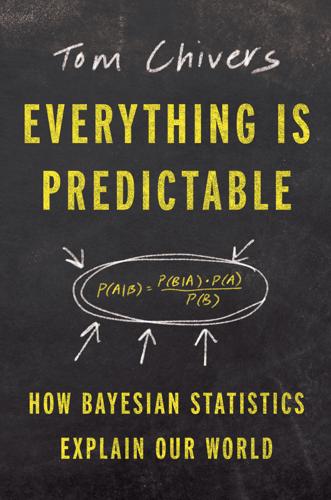
Everything Is Predictable: How Bayesian Statistics Explain Our World
by
Tom Chivers
Published 6 May 2024
During the Second World War—when, among scientists, Fisherian frequentism was dominant—people with more urgent, practical concerns over how to make good inferences from limited data were either using Bayes’ theorem or developing it themselves.107 Alan Turing, the great Cambridge mathematician, was brought into the British military during the war to help crack German codes and stop transatlantic shipping getting sunk by U-boats. The U-boats communicated with their bases via radio, but the messages they sent were encrypted via a mechanical device known as the Enigma machine, which created new ciphers regularly. Turing built an early computer to try to decode it—to work out which letter was standing for which. The trouble was that there were an extraordinary number of different possibilities. Treating them each as equally plausible would have meant that, if the machine checked one hundred possible combinations a second, it would have taken many trillions of times the life of the universe to check them all.
…
Bayesianism, 173 selecting frameworks for, 168 in selection of hypotheses, 136 in uncertainty, 241 decision theory, 106–107, 228–229 see also Bayesian decision theory Deen, Andrew, 18–19 DeepMind, 221 de Finetti, Bruno, 106, 110, 197 Defoe, Daniel, 23 degree of certainty, 49–52 DeGroot, Morris, 110 de Méré, Chevalier (Antoine Gombaud), 37–38 Democritus, 271 de Moivre, Abraham, 27, 53–61, 73, 77 depression, 308–313 derivatives, 34–35 dice gambling, 35–38 Diogenes, 266 Dissenters, 25 see also Nonconformists Divine Benevolence (Bayes), 30–31 Divinity Hall, 28 divorce, rates of, 256–258 DNA evidence, 10, 18–19 doctrine of chance, 46 Doctrine of Chances, A (de Moivre), 61 domestic abuse, 19–20 dopamine, 288–294 Down’s syndrome, 16–17 Dress, The, 276–277, 282–283 Drummond, Colin, 28 Duke University, 168 Dutch book, 197, 200 E Eames, John, 33 economics, 198–200 Edinburgh, 28 Edwards, Ward, 147 Edwards syndrome, 17 effect size, 149* Efron, Bradley, 90 Eindhoven University of Technology, 130–131 Einstein, Albert, 143–144 Elizabeth I, Queen, 24 Elson, Malte, 124 email, 321–322 Enigma machine, 108 Enquiry Concerning Human Understanding (Hume), 138 entropy, 315 Epicurus, 30 epistemic uncertainty, 160–162 epistemology, 264–268, 330 equivalence testing, 149* Erdös, Paul, 244 escitalopram, 309 Essay on Fundamentals in Religion, A (Foster), 31 “Essay towards Solving a Problem in the Doctrine of Chances, An” (Bayes), 24, 65, 70, 72 Euclid, 271 eugenics, 88–94 Eugenics Review, 92 European Council for Nuclear Research (CERN), 133–134 evidence belief in, 6–7 and prior beliefs, 21–22 evolution, 322–323 expectations, 192 expected evidence, 192 expected value, 196–197 experts, testing judgment of, 251–256 F factorials, 56 “False Positive Psychology” (Simmons, Nelson, and Simonsohn), 121, 123 family resemblances, 265–266 Fault Tolerant Tennis, 301 “Feeling the Future” (Bem), 118 Fermat, Pierre de, 38–46, 54 Fermi, Enrico, 259–261 Fermi estimate, 259 Feyerabend, Paul, 139, 268, 330 Fight Club, 119 firing solutions, 109 Fisher, Ronald, 89–94, 96–98, 100, 105–106, 113, 142, 289 Fitzhugh, Richard, 283 five-sigma threshold, 137 flow state, 328 Fluxions, see Introduction to the Doctrine of Fluxions, An (Bayes) Food and Drug Administration, 137 forward model, 296–297 Foster, James, 31 framing effects, 229–230 Frankenstein (Shelley), 71 Franklin, Benjamin, 71 fraud, in science, 117–118 free energy, 314–318 Freeman, Alexandra, 170–171 Freeman, P.

In Our Own Image: Savior or Destroyer? The History and Future of Artificial Intelligence
by
George Zarkadakis
Published 7 Mar 2016
Polish mathematicians produced an Enigma clone that was made available to the British scientists. On the basis of this, Turing4 designed an electromechanical device – called ‘bombe’ because of the terrible noise it produced – that could predict some of the daily settings of the Enigma machines by replicating the actions of several Enigma machines wired together. This idea of a machine (the bombe) effectively simulating other machines (the Enigma) is central to computer theory. When a machine can simulate every other machine this is called ‘Turing complete’. We saw how Babbage’s Analytical Engine was the first ‘Turing complete’ machine in the world.
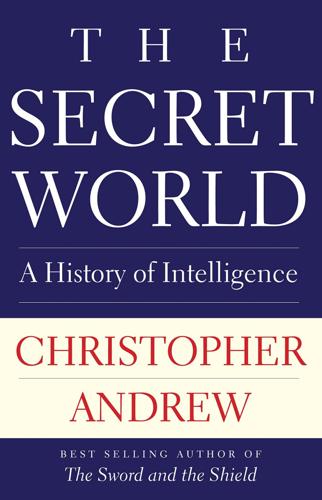
The Secret World: A History of Intelligence
by
Christopher Andrew
Published 27 Jun 2018
He called the intercepts ‘my golden eggs’ and the cryptanalysts ‘the geese who laid the golden eggs and never cackled’.44 By an extraordinary coincidence, the most valuable intelligence source in British history began to come on stream less than a fortnight after Churchill became Prime Minister. On 22 May GC&CS succeeded in breaking the Luftwaffe version of the Enigma machine cipher. From this date onwards it was able to read current German traffic using the air force Enigma without a break for the remainder of the war. In the spring of 1941 Bletchley mastered the naval Enigma, and in the spring of 1942 the army Enigma. At first the Enigma decrypts were referred to by the codeword ‘Boniface’ in order to suggest, if the enemy caught wind of them, that they derived from a secret agent rather than cryptanalysis.
…
Fearing that an unfavourable end to the war is now possible, many compatriots are seriously thinking about the consequences of defeat.’47 In the summer of 1943 Himmler and Goebbels agreed that Hitler should no longer be shown the increasingly depressing monthly SD reports on German public opinion and declining morale.48 Victory at Stalingrad produced an intelligence windfall which Soviet SIGINT was unable to exploit. German forces in Stalingrad had at least twenty-six Enigma machines which must have been difficult to destroy before their surrender. On at least one occasion, a German unit carried on transmitting until Soviet troops were at the door. A number of Enigma key settings almost certainly fell into the hands of the Red Army. The 91,000 German prisoners taken at Stalingrad also included signals and cipher personnel, not all of whom can have resisted the pressing demands of their captors to assist Soviet SIGINT operations.
…
M., 467 Church, Ralph Edwin, 677 Church of England, 114, 161, 220 Churchill, John (later Duke of Marlborough), 250, 257, 261–5, 267, 268 Churchill, Winston, 524 on Battle of Jutland, 525 becomes Prime Minister (May 1940), 616 Bletchley Park codebreakers’ appeal to, 617 and ‘Blinker’ Hall, 515 and Boer War, 450–51, 451 on breaking of US Black Code, 638–9 as covert action enthusiast, 679 and creation of GC&CS, 612 denied access to intercepts (1924), 582–3 and Double-Cross System, 651–3, 657, 659, 660 enthusiasm for intelligence, 336, 451, 480, 510, 511–12, 591*, 603, 612, 619, 652 first two years as Prime Minister, 56 and First World War naval intelligence, 7, 512, 513, 514–15 and Gallipoli expedition, 532 Gilbert’s eight-volume biography, 477, 671 Great Contemporaries, 575, 619 on Haig’s Somme offensive, 532–3 hatred of Bolshevism, 575, 578–9, 583, 626 interest in all aspects of intelligence, 634, 635 on Lenin’s ‘sealed’ train, 545 on long-term and historical perspective, 759 and operation OVERLORD (1944), 659, 660 papers of at Churchill College, 751* racist underestimation of Japanese, 636, 728–9 and Second World War intelligence coordination, 617, 618 at ‘Siege of Sidney Street’ (1910), 560 SIGINT while peacetime Prime Minister, 671 and SOE, 619 and Stalin, 626, 650 on U-boat peril, 641 and ULTRA intelligence, 616–17, 640–41, 671 as war correspondent, 450–51 Ciano, Count Galeazzo, 16* Cicero, 40, 47, 49†, 52* Cincar-Marković, Dimitrije, 442 Cistercian order, 101 Civil War, American (1861–5), 6, 411–14 Civil War, English (1642–9), 214–15, 221 King’s Cabinet opened, The (1645), 217, 217–18 Waller Plot (1643), 215–16 Civil War, Russian (1918–20), 557, 559, 573–4, 575, 626 Civil War, Spanish (1936–9), 622, 682 Clam-Martinic, Count Karl, 368 Clapper, General James, 704 Clarendon, 4th Earl of, 396, 397 Clark, Christopher, 493* Clarke, Sir William, 346 Clarke, William F., 524 Claudius, Roman emperor, 73, 75, 75† Claudius Pulcher, 41 Clausewitz, Carl von, 14–15, 54 Clayton, Brigadier-General Gilbert F., 528–9 Clemenceau, Georges, 462, 551, 584 Cleveland, Grover, 435 Clifford, Clark, 678 Clifford, Sir Thomas, 236 Cline, Ray, 679–80 Clinton, Bill, 708, 709–10 Clinton, Sir Henry, 301, 305, 306, 307 Cobb, Richard, 324 Cobban, Alfred, 314–15, 331 codebreaking see cryptanalysis codes and ciphers Abbasid use of, 98–9, 127, 128 ADFGX (later ADFGVX) (First World War German), 564 in ancient Egypt, 20† Caesar’s ‘substitution ciphers’, 46–7, 99, 497 cipher telegrams, 421 Enigma machine, 56†, 616–17, 640–41, 671 during First World War, 497–500, 504, 533–4, 563–4 French advances in late-nineteenth-century, 460 Geheimschreiber messages, 648 Japanese, 467–8, 469, 470 Japanese naval JN25b, 634–5, 637–8 of Mary, Queen of Scots, 166 MI-8 in USA, 569 in ninth-century Baghdad, 98–9 Ottoman failings, 128–9 Papacy’s use of, 127 ‘polyalphabetic substitution’, 127 ‘Red Code’ (US diplomatic code, 1876), 423–4 SHARK (U-boat version of Enigma), 641 Soviet ‘one-time pad’, 584, 672, 673–4, 749 Spanish security as poor, 139–40 Spartan ‘skytale’ claims, 46† Swedish, 272, 348 ‘Triplecodex’ (1914), 479 and Tsar Alexander I, 360 US ‘Black Code’, 638–9 US naval ciphers during Cold War, 685–6 see also cryptanalysis coffee houses, 238, 257 Cohen, Lona, 673 Cohen, Morris, 673 Coke, Sir Edward, 189 Coke, Sir John, 204*, 208, 219 Colbert, Jean-Baptiste, 212, 213, 243–5, 247, 267, 268 Colby, William, 731–2 Colchester (Camulodunum), 74–5 Cold War analysis of effects of intelligence on, 682–3, 684 arms control/limitation agreements, 684 British official secrecy, 8–9, 736 CIA covert actions during, 8, 677–8, 679–80, 690–91 CIA failure in Indonesia (1958), 679–80 Cuban Missile Crisis, 683–4, 707, 739, 740, 759 early codebreaking successes of US, 673 and Eisenhower’s dictum, 181 ELINT successes during, 674 IMINT revolution during, 683, 684, 707 intelligence on opponents’ nuclear strike force, 683, 684, 759 KGB ‘active measures’ (influence operations), 8, 688, 689–91 KGB covert actions during, 8, 680–82, 688–91 KGB cryptanalysis during, 674 neglect of SIGINT in studies of, 8, 671–3 ‘peace dividend’ at end of, 707 role of HUMINT in, 676 SIGINT secrecy during, 671, 674 Soviet penetration of foreign ministries in West, 675 and Third World states, 8, 674, 688–91 Truman Doctrine, 676–7 US ‘bomber gap’ and ‘missile gap’ myths, 682–3 VENONA decrypts, 672, 718*, 749 Coleman, Edward, 240 Coleridge, Samuel Taylor, 332–3 Colonna, Marco Antonio, 128 ‘Colossus’ (world’s first electronic computer), 648 Colt, Henry, 258 Columbia University, New York, 684–5 Columbus, Christopher, 120 Comey, James B., 754 Commodus, Roman emperor, 75–6 Commonwealth of England, 219–30 Communist Correspondence Committee, Brussels, 386 Communist International (Comintern), 465, 581 Communist League, 388, 393–4 Communist Party of America, 665 Communist Party of Great Britain (CPGB), 578, 581 Communist Party of the Soviet Union 689, 698 Conan Doyle, Sir Arthur, 420* Condé, Henri II of Bourbon, prince de, 205, 206 Condé, Louis de Bourbon, prince de, 245, 246, 247 Conquest, Robert, 751 Conrad, Joseph, The Secret Agent, 431 conspiracy theories and authoritarian regimes, 106, 326, 594, 598–602, 619–20, 680–82, 694–8 Catholic plots in Elizabethan era, 163–4, 170–72, 175, 188–9 and First World War pacifism, 551–2, 553–5, and Indian Mutiny, 410–11 Islamist brand of anti-Semitism, 703, 723 of Ivan the Terrible, 141–2, 144–5, 146, 150–51, 152, 153–4 and Jacobite cause, 258–9 Kennedy assassination, 688 medieval, 106–7 and Metternich, 369, 371, 372, 375 nineteenth-century anarchist movement, 432 over Russian First World War disasters, 502–4 and Paris Commune, 398–400 ‘Popish Plot’ (late 1670s), 238, 239–40, 241 in revolutionary France, 317–19, 322–3, 324–6 and secret societies, 372, 373–4, 376–7 Constant, Benjamin, 375 Constantine, Grand Duke, 373 Constantine, Roman emperor, 32‡, 76*, 77, 78 Constantini, Francesco, 591 Constantini, Secondo, 591, 592 Constantinople, 78, 92–3, 122, 124, 125, 132 Conti, prince de, 280 Contra guerrilla campaign, Nicaragua, 691 Conway, Sir Edward, 205 Coolidge, Calvin, 587 Cooper, Dr Tarnya, 160–61 Cooper, Duff, 652–3 Cooper, James Fenimore, 310–11 Copenhagen, Battle of (March 1801), 336 Corbet, Miles, 233 Corbiere, Anthony, 272 Cornwallis, Lord, 306, 307–8 Cortés, Hernán, 132–6, 137, 195 Costa Rica, 681–2, 690 Cotton, Joseph P., 588 counter-subversion in 1840s France, 383 in authoritarian states, 4, 100–17, 130†, 574–5, 698–700, 751 bizarre conspiracy theories, 106–7 bureaucracy and record-keeping, 4, 100, 102–3, 102§ Catholic ‘inquisitions’, 4, 100, 102–6, 102§, 107–8, 109–10, 111–13, 115–16 in China, 754–5 and denunciations, 103 fear of professional revolutionaries (1820s–1840s), 369, 371, 372–5, 376–81, 383–4, 552* in France under restored Bourbons, 375–6 German police union (1851–66), 391, 398 KGB role in, 698–700, 751 MI5 in Britain (1917–8), 551–2, 553–5, 555 Okhrana in Russia, 7, 425–6, 428, 434, 436, 437–42, 574, 603 Spanish autos da fé, 111–12, 115 Spanish Inquisition as milestone, 111 Stalinist show trials, 107, 108, 600, 601, 620, 667 Third Section in Tsarist Russia, 374–5, 376–8, 425 Courland, Duchess of, 368 Coventry, Sir Henry, 240 covert operations British during Cold War, 678–9 British intelligence on First World War German, 522–4 British Operation VALUABLE in Communist Albania (1948), 678–9 Church Committee report (1976), 679, 687 CIA ‘dirty tricks’ disclosures (1975), 687, 688 CIA during Cold War, 8, 677–8, 679–80, 690–91 CIA in Third World, 8, 690–91 defined, 677–8 Doolittle report’s endorsement of (1954), 679 First World War German in USA, 520, 521–4, 527, 528, 542, 604 and Benjamin Franklin, 295–6, 298–300, 308–9 German in First World War revolutionary Russia, 544–7 as intelligence method from earliest times, 2 KGB ‘active measures’ in Third World, 8, 688, 689–91 KGB during Cold War, 680–82 MI1c attempts to keep Russia in First World War, 547–9 and Mossad, 18–19 Okhrana in Western Europe, 426, 428 in Old Testament, 14 overthrow of Guatemalan regime (1954), 679 restoration of Shah in Iran (1953), 679 Roman plot against Attila, 83–4, 85 royalist during English Civil War, 214–16 in Sun Tzu and the Arthashastra 56, 59, 64 US in Italian 1948 elections, 678, 679 Wiseman’s in First World War USA, 535 Cox, Brigadier Edgar, 562–3, 564, 572 Cradock, Sir Percy, 694 Craig, Daniel, 27 Cranmer, Thomas, 114–15 Cresswell, Joseph, 203 Cressy, David, Dangerous Talk, 280† Creveld, Professor Van, 339‡ Crimean War (1853–6), 402–6 Croesus, ruler of Lydia, 32† Croissy, Colbert de, 253–4 Cromwell, Oliver, 5, 221, 223–4, 227, 230 Cromwell, Richard, 227–8 Crone, Matthew, 258 Crowe, Sir Eyre, 482, 582 cryptanalysis and Aldegonde, 139–40, 166–9 and American Civil War, 411 during American Revolutionary War, 301, 308 Austrian during Congress of Vienna, 363–4, 365 Babington Plot deception/forgery, 177, 179, 180, 192 and Étienne Bazeries, 460, 461, 463, 468 black chambers in Celle and Hanover, 255–6, 264, 270 and William Blencowe, 256, 263, 264, 270 breaking of FLORADORA (Nazi diplomatic cipher), 642 British Government of India, 410, 419 Chiffrierabteilung (code department) of OKW, 639, 644 Civil War revival in England, 216–18, 221 Deciphering Branch closure (1844), 6, 337, 383, 747 Deciphering Branch in Britain, 6, 276–7, 288, 289–90, 300, 301, 337, 348–9, 357, 410, 421, 449 decline of Deciphering Branch in Britain, 337, 348–9, 357 and diplomatic telegrams, 421, 422, 533–4, 535–41, 542 Dutch assistance to Elizabethan England, 7, 166–70 early Cold War successes of US, 673 Enigma machines captured at Stalingrad, 648 during First World War, 497–502, 504, 509–19, 529–30, 532, 533–4, 535–42, 563–4, 571, 603, 671, 747† Franco-Russian collaboration, 467–8, 469–70 and Frederick the Great, 287 French (1890s–1914 period), 459, 460, 461, 463–4, 468–9, 478, 479, 483–5, 488, 491, 749 French interwar decrypts, 584–5 French official censorship on, 464 ‘frequency analysis’, 4, 99, 127, 347 and George I, 270, 271, 279, 643 and Christian Goldbach, 277 ‘Great Paris Cipher’, 347–52, 350–51 in Gulliver’s Travels, 275–6 HYPO (later FRUPac) unit (US after Pearl Harbor), 637–8 interwar period, 576–80, 583–90, 616–17 Japanese RED and PURPLE ciphers cracked, 610–12, 627, 628, 671† by KGB during Cold War, 674 Al-Kindi and invention of, 4, 98–9, 127, 497 in Louis XIV’s France, 242, 245, 277 and James Lovell, 308 in mid-eighteenth-century Vienna, 277, 278–9 and Samuel Morland, 225–6 during Napoleonic Wars, 340–41, 347–52, 357–8, 359, 360 and Georges Painvin, 564 and Thomas Phelippes, 167, 177, 179, 180, 183, 189, 205, 242 Philip II likens to witchcraft, 137, 138, 139, 140 in pre-First World War Vienna, 489, 491 publication of decrypts, 216–19, 271–2, 348 by the Raj, 467 Renaissance agencies, 5 and Renaissance Venice, 127, 128–9, 137 and Richelieu, 205–6, 210–11, 672 and Antoine Rossignol, 205–6, 210, 211, 212, 213, 242, 245*, 247, 672 and Russian Empire, 353, 357–9, 360, 454–7, 467–8, 469–71, 478, 485, 488, 491–2, 497, 499–502 during Russo-Japanese War, 467–8 Scovell during Peninsular War, 347–8, 349–52, 350–51 and Seven Years War (1756–63), 288, 289–90 SHARK (U-boat version of Enigma), 641 sixteenth-century pool of talent, 137, 138 and John Somer, 162, 162†, 166, 167 and Giovanni Soro, 127, 128, 129, 137 Soviet decrypts of Japanese despatches, 589–90 Soviets as best by early 1930s, 590 and Spanish Armada preparations, 183 Spanish in seventeenth-century, 211 Third World diplomatic traffic in Cold War, 674 Travis–Strong agreement (BRUSA, May 1943), 642–3 ULTRA intelligence (Second World War), 8, 56†, 616–17, 640–42, 648, 649, 652, 669, 671–2 US failure to crack JN25b before Pearl Harbor, 634–5 by Vienna cabinet noir, 369–70 and François Viète, 137, 138–9, 140, 198 and Francis Wallis, 301 and John Wallis, 216–17, 221, 237–8, 242, 251–5, 256 and George Washington, 308 and Edward Willes, 271, 272, 273, 274, 276, 337 see also Bletchley Park, ‘Station X’ at; cabinet noir (black chamber), French; codes and ciphers cryptography see codes and ciphers; cryptanalysis Cuba, 8, 63, 589, 689, 705 CIA’s Castro assassination plans, 63, 85, 677, 680, 687, 688 Cuban Missile Crisis (1962), 683–4, 707, 739, 740, 759 anČubrilović, Vaso, 445, 447 Culloden, Battle of (16 April 1746), 283 Cumberland, Duke of, 283 Cumming, Commander Mansfield, 477, 481–3, 512, 528, 532, 534, 548, 571–2, 606 Cunliffe, Sir Barry, 49–50 Currie, Lauchlin, 662 Curry, Jack, 614, 615–16, 760 Curtis Wright, David, 78† Curzon, Lord, 576–7, 579–80 Custine, marquis de, 377–8 cyberwarfare, 10, 754 Czechoslovakia, 613, 614–15, 616, 699, 712, 751 Czolgosz, Leon Frank, 435–6 D’Abernon, Lord, 759–60 Daily Herald, 578 Daily Mail, 472–3, 579, 581–2 Dalton, Hugh, 619 Damascus, 95, 97 Daniels, Josephus, 603–4 Dansey, Claude, 550 Danton, Georges, 314, 318, 324–5 Dar es Salaam terror attack (7 August 1998), 719–20 Darnley, Lord, 163 Darnton, Robert, 280 Dati, Leonardo, 127 Davies, Joseph E., 593, 597 Davis, Jack, 745* Davison, F.

When Einstein Walked With Gödel: Excursions to the Edge of Thought
by
Jim Holt
Published 14 May 2018
When a letter on the keyboard was pressed, a different letter on the lampboard would light up. If you typed the letters “d-o-g,” the letters “r-l-u” might light up on the lampboard. When “rlu” was sent out in Morse code by a radio operator, a recipient would pick it up and type it on the keyboard of his Enigma machine, and the letters “d-o-g” would light up on the lampboard—so long as the settings of the two machines were the same. And that is where things get interesting. Inside the Enigma were a number of rotating wheels that determined the match between entered and coded letters; each time a letter was typed, one of the wheels would turn, altering the wiring.
…
The military version of the Enigma also had something called a plugboard, by which the connections between letters could be further scrambled. The settings of the wheels and the plugboard were changed each day at midnight. And further layers of complexity were added, increasing the number of possible cipher keys to something like 150 quintillion. The most impenetrable communications were those of the German navy, which used the Enigma machine with special cunning and discipline. By early 1941, Germany’s growing U-boat fleet was devastating British shipping, sinking around sixty ships a month. Unlike Germany, Britain was almost completely reliant on the sea-lanes for sustenance. Unless some counterstrategy could be found, the British Isles faced being starved into submission.

The Optimist: Sam Altman, OpenAI, and the Race to Invent the Future
by
Keach Hagey
Published 19 May 2025
“That was the famous batch that broke everybody’s brains,” YC CFO Kirsty Nathoo told Wired. After it, Y Combinator decided to split future batches into what were essentially classes, and move Demo Day to the much larger Computer History Museum, a sprawling campus in Mountain View that houses such artifacts as a World War II–era Enigma machine and the first-ever computer mouse, which happens to be carved out of redwood.13 For 2013, they kept the number of would-be companies at a more reasonable forty-seven, but Demo Day ballooned to 450 guests, lured by the promise of riches on the scale of Dropbox (then worth $4 billion), Airbnb ($1.3 billion), and Stripe ($500 million).
…
Louis, 26, 53 Delicious (website), 75 Deming, Peter, 59–60, 64 democracy, 152–53, 225 Democratic Party, 21, 204, 207–8, 234, 296 Deployment Safety Board (DSB), 279–80, 287 Deshpande, Alok, 58–61, 64, 76, 85, 89, 102, 111, 127 Deshpande, Sheila, 58, 91 Desmond-Hellmann, Sue, 303 Deutsch, David, 314–15 Dewey, John, 45 deworming charities, 211, 213 Diamandis, Peter, 144, 210 diffusion model trained by adding digital “noise,” 262–63 Digital Chocolate mobile gaming company, 97 Diller, Barry, 229 Ditton, Andy, 34–35 DJ Kay Slay, 102 DJI drones, 231 DLA Piper lobbying firm, 300 DNNresearch, 182 Doblet phone-charging startup, 149, 177 Dodgeball location-based app, 104, 105, 118 Donahue, Nick, 260–61 Dota 2 (video game), 215–18, 221–22, 242, 284 dot-com bubble of the late 1990s, 73, 87, 93 Dowling, Steve, 287 Dropbox, 123, 139, 150, 152, 157, 158–59, 247 drop-outs, tech bros as mostly, 62, 88, 91–92, 96, 108, 113, 124, 132, 175, 179, 217–18 Dubai, 274 eBay, 82, 168 economic growth democracy and, 152–53, 225 dot-com bubble of the late 1990s, 73, 87, 93 financial crisis of 2008, 4, 116–17, 131, 137, 150 as a kind of spiritual hack, 153 real wages, 132 Edge web browser, 272 Edison, Thomas, 46 effective altruism, 2, 4, 6 189–214, 224, 265–66, 276, 300 “bed nets” era of, 212 deworming charities, 211, 213 GreaterWrong forum, 301 Open Philanthropy Project, 213–14, 241, 266–67, 276–77, 299–301 see also AI safety Effective Ventures, 276 Efficient Market Hypothesis, 144 Eichler, Mike, 30, 40 80,000 Hours, 211–12 Elbaz, Gil, 243 Electronic Arts, 97 Electronic Frontier Foundation (EFF), 59, 98 energy production, 13, 134, 231, 280, 313–14 nuclear energy, 12–13, 57, 108, 134–36, 154, 177, 205, 230, 259, 280 solar energy, 28 see also compute Enigma machine, 139 Enlightenment, 314–15 Enron, 60 esports, 215–16 Evans, Jon, 142 Extropians, 141–42, 144–45, 164–65, 199, 214 Fabolous (DJ), 102 Facebook, 60, 63, 73, 79–80, 96, 101, 116–17, 123, 127, 131, 137, 161, 169, 184, 188, 204, 207–8, 229 fact-checking, 265 Fairchild Semiconductor, 72, 87 fake news, 265 Federal Communications Commission (FCC), 59, 106 Federal Trade Commission, 285 Feldman, Ellen, 173 Fellow Robots robotics company, 210 Fermi’s paradox, 170 “few shot” learning, 244 “Feynman method of being a genius,” 219 Filan, Daniel, 305 financial crisis of 2008, 4, 116–17, 131, 137, 150 “finding product-market fit,” 107, 156 “finding your tribe,” 157 Finney, Hal, 142 Firefox web browser, 63 Flexport logistics platform, 138 Florida, 40 “Flowers for Algernon” (Keyes), 140 Foo Camp, 63 Forbes (magazine), 257 Foreign Affairs (journal), 267 Foresight Institute, a technology think tank, 144 Forstall, Scott, 112, 114, 116 “Founder Mode” (Graham), 263 founders as kings, 6, 60, 65, 68, 70–75, 95 Founders at Work (Livingston), 63, 64 Founders Fund venture firm, 2, 6, 132, 139, 147, 226 Foursquare, 118–20, 126 Francis, Peggy, 32, 36 “Free Oceana,” 141 Freemasonry, 31 Fridman, Lex, 17, 304 Friend, Tad, 201 From Zero to One (Thiel and Masters), 132, 230 frontier in American history, 153 FroSoCo (short for Freshman Sophomore College), 55, 57 FTX crypto market, 212, 257 Furstenberg, Diane von, 229 Future of Humanity Institute, 5, 165–66, 241–42, 267 Future of Life conference, Puerto Rico (2015), 167–70, 207, 211 Future of Life Institute, 145, 168, 208–9, 272 Galef, Julia, 225 Galois, Évariste, 174 game theory, 166, 285 Gates, Bill, 65, 90, 212, 216, 267–68 Gates, Melinda, 212 Gauss, Carl Friedrich, 174 Gawker Media, 137, 204–5 gay marriage rights, 56, 296 Gay Straight Alliance, 52 Gaza, war in, 289 GE (General Electric), 210 Gebbia, Joe, 263 Gebru, Timnit, 252–53, 270–71 Gemini AI model, 307 general artificial intelligence (AGI), see AI (artificial intelligence) generative AI, 1, 3, 9, 219, 221, 270 generative pre-trained transformers (GPTs), 3, 221, see also various GPTs under OpenAI genius, human, 77, 81, 127, 140, 156, 219 “Gentle Seduction, The” (Stiegler), 199–200 George, Henry, 256 Georgia, 23–25, 58, 104, 142 GeoSim 3D modeling company, 209–10 Germany, 274 Gibney, Bruce, 132–33 Gibstine, Connie (Sam’s mother), 15, 31–38, 39–50, 53–54, 91, 201–2, 227–28, 248–50, 261, 295, 312 Gil, Elad, 136 Gillette, 62, 71 Ginsberg, Allen, 166 Girard, René, 131 Github Copilot, 262 Gittell, Ross, 35 GiveWell, 212–13, 266 Giving Pledge, 212 Giving What We Can, 211 global positioning system (GPS) chips in mobile phones, 57–58, 99 Gmail, 123, 150, 286–87 Go (game), 191–92, 216–17 “godfathers of AI,” 188, 312 Goertzel, Ben, 145 Goetz, Jim, 88 Goldman Sachs, 59, 64, 150, 225 Good Ventures foundation, 212–13 Google AdSense, 243 Alphabet, 194, 271 “Attention Is All You Need” (“the transformer paper”), 218–19, 270 Bard conversational model, 271 Chrome web browser, 272 DeepMind acquisition, 146–48, 154, 165, 168–69, 171–72, 184, 189–94, 208, 211, 217, 221, 270 Dodgeball location-based app acquisition, 104, 105, 118, 104 Gemini AI model, 307 Gmail, 123, 150, 286–87 recent initial public offering (IPO) of, 87 YouTube acquisition, 93–94 see also Anthropic Google assistant, 271 Google Brain, 82, 169, 184, 243, 270 Google Colab Notebook, 247 Google I/O annual developer conference, 307 Google Maps, 59 Google Search, 270 Gordon-Levitt, Joseph, 210, 225 GotNews (website), 204 GPTs (generative pre-trained transformers), see chatbots; various GPTs under OpenAI Graham, Paul, 3, 13–16, 62–65, 67–76, 81–82, 94, 136, 149, 151, 186, 263 “A Unified Theory of VC Suckage,” 72–73 “Collison installation,” 246 “Founder Mode,” 263 “How to Start a Startup,” 69–70 painting’s influence on, 67–69 see also Y Combinator (YC) graphical user interfaces, 195 graphics processing units (GPUs), 176, 181–82, 219, 247, 255 Gras, Mike, 249 GreaterWrong forum, 301 Green Dot prepaid debit card company, 126–27, 133 Green-Lowe, Jason, 301–2 Grey, Aubrey de, 144, 259 Groom, Lachy, 151–52, 154, 157 Gross, Daniel, 309 Groupon, 119, 116 Guardian, The (newspaper), 220 Gurevich, Mikhail, 77, 82 Gurson, Doktor, 149, 177 Hacker News message board, 132, 151 hackers/hacking, 3, 57, 63, 68–70, 160n, 162 Haffner & Gibstine Real Estate, 32 Halcyon Molecular, 257–59 Hall, Ed, 26 Halo 3 (video game), 95, 109 ham radios, 32–33, 48 Hanson, Robin, 141–42, 144 Harder, Josh, 207 “hardware strategy, the,” 226, see also compute Harris, Kamala, 273, 313 Harris, Sylvia, 24–25 Hartford Courant (newspaper), 28 Hartford, CT, 28–29 Hartford Institute of Criminal and Social Justice, 28 Hartmann, Frank, 28–29 Harvard Computer Society, 69 Hassabis, Demis, 145–47, 169, 171–72, 192, 209 Hassenfeld, Elie, 212 Hawaii, 227, 250, 260, 295, 311–12 Hawking, Stephen, 169, 211 Hawkins, Trip, 97 HBO’s Silicon Valley, 101, 258–59 HBO’s Westworld, 199 heads, frozen, 141 Health Extension Foundation, 258 Helion Energy nuclear fusion startup, 13, 136, 207, 259, 280, 298 Helo telepresence robot, 210 Her (film), 307 Herzog, Isaac, 274 Hill, Daniel, 165 Hilton, Jacob, 265 Hinduism, 17 Hinton, Geoff, 178–84, 188, 266, 312–13 hip-hop, 102 Hipmunk travel search company, 162 HIV/AIDS, 33, 43, 49 Hoffman, Reid, 109, 172, 223, 231, 234–35, 277, 296 Hogan, Hulk, 205 Holocaust, attempted analogies to the, 135 Homejoy, 195 Horizon Institute for Public Service, 301 housing, see affordable housing Houston, Drew, 157 “How to Start a Startup” (Graham), 69–70 Howard, James, 110–11 Howl (Ginsberg), 166 Huffman, Steve, 69–70, 75, 76–78, 81, 162–63 Hui, Fan, 192 Human Advancement Research Community (HARC), 195, 197–98, 236 humans in a democratic society, 135 human genius, 77, 81, 127, 140, 156, 219 human-computer interfaces, 210 learning to truly produce knowledge, 314 neuroscience and studying the human brain, 145–48, 202 “only good for hugs or sex,” 269 their brains as the original neural nets, 181 see also chatbots Hunnewell, H.
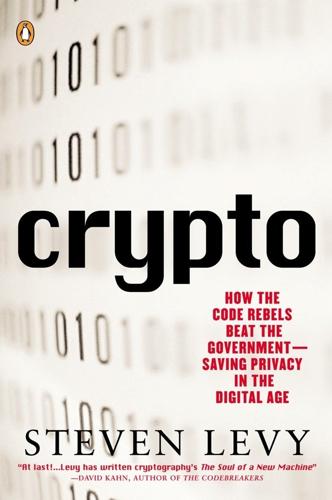
Crypto: How the Code Rebels Beat the Government Saving Privacy in the Digital Age
by
Steven Levy
Published 15 Jan 2002
Only someone who had an identical machine or software program could reverse the process and divine the plaintext, with use of the special numerical key that had helped encrypt it. In the case of the Enigma machines, that key involved “settings,” the positions of the various code wheels that determined how each letter would be changed. Each day the encrypters would reset the wheels in a different way; those receiving the message would already have been informed of what those settings should be on that given day. That’s why the Allied coup of recovering live Enigma machines—the key intelligence breakthrough of World War II—was only part of the elaborate codebreaking process that took place at Bletchley Park in England.

Open: The Story of Human Progress
by
Johan Norberg
Published 14 Sep 2020
When Tandy enlisted as a volunteer in the Royal Navy Reserve in 1939, the Ministry of Defence got a bit more excited about him than he thought warranted. To his surprise, he was immediately sent to Bletchley Park, where the best minds in Britain were hard at work trying to crack the code of Nazi Germany’s Enigma machine. Apparently, the ministry had assumed that Tandy, the cryptogamist, was a cryptogrammist, specialized in encrypted texts and therefore the ideal man to help Alan Turing and the others to crack codes. They really had no use for a seaweed specialist. But since the Bletchley operation was top secret, the army thought it best that Tandy stayed there until the end of the war, contributing little to the war effort.
…
(Huntington), 362–3, 365–6 classical liberalism, 185, 205, 214 Claudius, Roman Emperor, 90, 92 climate change, 75, 323, 325, 326–34 Clinton, Hillary, 238 Clouds, The (Aristophanes), 129 Cobden–Chevalier Treaty (1860), 53–4 coffee houses, 166 cognitive dissonance, 127 Cohen, Floris, 150 Colombia, 120 colonialism, 214, 232, 256 Britain, 84, 191, 194, 200 Dutch Republic, 100 Portugal, 100, 146–7, 178 Spain, 147, 178, 182 Columbia University, 223 Columbus, Christopher, 77, 177, 178, 305 Comenius, John, 152 command economies, 43, 315 communism, 54, 56, 215, 302–5, 314–18 Communist Manifesto, The (Marx and Engels), 33 compensatory control, 322–3 competition, 60 benefit–cost ratio and, 62 creative destruction and, 57, 190 Great Depression and, 54 guilds and, 190 immigration and, 117 Rust Belt and, 64, 65–6 competitive advantage, 28–9 computers, 302–14 automation, 63, 312–13 Internet, 57, 275, 278, 306–11, 312 confirmation bias, 127, 160, 161 Confucianism, 129, 149, 169, 176 Congo, 365 conquistadores, 77 conservatism, 334–40 authoritarianism and, 345 disgust and, 335, 336 dynamism and, 286, 300–302, 312, 326 economic, 185, 336 security and, 334–40, 378 superpowers study, 338–9 conspiracy theories, 322–3, 324 Constantine, Roman Emperor, 133–4 Constantinople, 92, 94, 224 contact hypothesis, 244–5 Conway, Kellyanne, 108 Coontz, Stephanie, 199 Cooper, Anthony Ashley, 1st Earl of Shaftesbury, 185 Copernicus, Nicolaus, 146, 150, 332 copper, 42 Cordoba, Spain, 137–9 Corn Laws, 53, 191 corn-based ethanol, 328, 329 coronavirus, 3, 4, 10–11, 162–3, 293, 312 corruption, 317, 345, 381 COVID-19 pandemic (2019–20), 3, 4, 10–12, 162–3, 312 cowboys, 73 Cowen, Tyler, 257 Coxe, Tench, 103 creative destruction, 57, 179, 182, 190, 270, 339 automation, 63, 312–13 nostalgia and, 296–9, 313 Schumpeterian profits, 273–4 Crete, 89 crime, 110, 119–20, 346, 377 Crisis and Leviathan (Higgs), 337 Criswell King, Jeron, 255–6 Croats, 72 Cromwell, Oliver, 183 Crone, Patricia, 207 crony capitalism, 279–80 Crusades, 94, 138 cults, 244 culture appropriation, 71–2 borrowing, 70–73 evolution, 26–30 immigration and, 69–73, 116, 119, 120–23 ‘purity’ of, 69, 70, 71, 352 Cyrus II ‘the Great’, King of Persia, 86–7, 249 Daily Mail, 119 Dalberg-Acton, John, 1st Baron Acton, 140, 180 Dalton, John, 196 Danube (Magris), 219 Danube river, 93 Darfur, 365 Darius I ‘the Great’, Persian Emperor, 86 Dark Ages, 5, 50, 140, 215 Darkening Age, The (Nixey), 134 Darwin, Charles, 24, 28, 162, 227 Davies, Stephen, 170 death penalty, 349 Defense Science Board, US, 313 Defoe, Daniel, 195 deindustrialization, 62 demagogues, 15, 217, 353–4, 360 dementia, 289 democracy, 205, 321, 357, 363, 378–82 authoritarianism and, 357 deliberative, 378–9 environment and, 327 in Greece, 5 Muslims and, 112, 113 populism and, 325 representative, 378 in United States, 200 Democratic Party, 164, 224–5, 238, 302, 349 Deng Xiaoping, 316, 317 Denisovans, 75 Department of Defense, US, 306, 313 Depeche Mode, 245, 295 Descartes, René, 100, 149, 153 Désert de Retz, France, 287 Deutsch, David, 261, 332 Diamond, Jared, 41 Diana, 89 Dickens, Charles, 197, 206 dictator game, 35 Diderot, Denis, 154 Dilmun, 42 disasters, 338 disease, 77–9, 128, 213, 293 Antonine Plague (165–80), 77 Behavioural Immune System, 222 Black Death (1346–53), 77, 139, 356 COVID-19 pandemic (2019–20), 3, 4, 10–12, 162–3, 312 Plague of Justinian (541–750), 77 Spanish flu (1918–19), 77 disgust, 222, 336–7, 371 ‘dismal science’, 206 Disraeli, Benjamin, 254 diversity, 83–4, 121–2 empires and, 84–106 problem solving and, 83 turtle theory, 121–2 division of labour, 28, 31–2, 40, 57, 117, 168 DNA (deoxyribonucleic acid), 8, 73–4, 75, 76 Doctor Who, 135 Doggerland, 74 Dollond, John, 158–9 Dominicans, 144 dreadlocks, 72 dung beetles, 284–5 Dunn, Kris, 357 Dutch East India Company, 100 Dutch Republic (1581–1795), 6, 53, 84, 99–101, 147, 184, 208 Calvinism, 149 colonies, 100 exiles in, 99, 152, 153, 158, 185, 186 Glorious Revolution (1688), 101, 185–8, 190, 193 Jewish community, 100, 150 multi-shuttle ribbon frame in, 180 Dutch Revolt (1568–1648), 98–9, 101, 208 dynamism, 301–2, 312, 318, 330 Eagles and Rattlers, 218–19, 236, 243, 252 East River Rift Valley, 24 Eastern Europe, 114, 115 Eastern Roman Empire (395–1453), see Byzantine Empire Ebola virus, 293 economies of scale, 42 Economist, The, 118, 279, 318 economy and nativism, 349–51 efflorescences, 5, 6, 10 Egypt, ancient, 43, 45, 70, 87, 88, 89, 128 Ehrlich, Paul, 160 Eighteenth-Century Commonwealthman, The (Robbins), 201 Eighty Years War (1566–1648), 101 Einstein, Albert, 105 electricity, 297 Elizabeth I, Queen of England and Ireland, 179, 237, 277 Eller, Martin, 306 Elusians, 89 Elvin, Mark, 173 empathy, 219, 224 Encyclopédie, 154 ‘End of History?’ (Fukuyama), 362–5 End of Work, The (Rifkin), 312 Engels, Friedrich, 33, 36, 162, 206, 247, 256 English Civil War (1642–1651), 148, 183, 184, 201 Enigma machine, 124–6 Enlightenment, 4, 5, 6, 13, 103, 154–60, 165–6, 195–6 Environmental Performance Index, 327 Ephesus, 45 Epic of Gilgamesh, The, 38 Epicurus, 134–5 Epstein, Richard, 320 equality matching, 262–6, 267 Erasmus, 152 Erdogan, Recep Tayyip, 354 Ethiopia, 72, 130 ethnocentrism, 219, 271 Etruscan civilization (c. 900–27 BC), 43 Eubulus, 47 eugenics, 109 Euphrates river, 37 Euripides, 132 European Organization for Nuclear Research, 306 European Parliament, 325 European Union (EU) Brexit (2016–), 9, 14, 118, 238, 240–41, 349, 354, 379 common currency, 280–81 freedom of movement, 118, 343 migration crisis (2015–), 10, 114, 115, 342–3, 358 subsidies in, 280 trade and, 272 United States, trade with, 19 Evans, Oliver, 203 Evolution of God, The (Wright), 249 evolutionary psychology, 14, 23, 225 exoticism, 84 Expressionism, 198 Facebook, 239, 309 Falwell, Jerry, 113–14 Farage, Nigel, 241 farming, see agriculture Fascist Italy (1922–1943), 105, 219 FedEx, 319 Feifer, Jason, 290–92 Fenway Park, Boston, 223 Ferdinand II, King of Aragon, 97, 98, 106 Ferguson, Charles, 314 Fermi, Enrico, 105 Ferney, France, 153 feudalism, 92, 194, 202, 208 fight-or-flight instinct, 15, 346, 348–9 filter bubbles, 239 financial crisis (2008), 10, 15, 62, 254, 333, 358, 359–60 fire, control of, 32–3, 76 Flanders, 208 fluyts, 100 Flynn effect, 109 Fogel, Robert, 276 folk economics, 258–62 football, 223–4, 245–6 Forbes, 274 Ford, Henry, 203 Fortune 500 companies, 82 Fox News, 82, 302, 354 France, 151 American Revolutionary War (1775–83), 201 automation in, 313 Cathars, 94, 142 Cobden–Chevalier Treaty (1860), 53–4 corruption in, 345 Dutch War (1672–8), 101 Encyclopédie, 154 free zones in, 180–81 Huguenots, persecution of, 97, 99, 101, 158, 193 immigration in, 115 Jews, persecution of, 96, 97, 254 languages in, 289 Minitel, 313 Revolution (1789–99), 201, 292 Royal Academy of Sciences, 156 ruin follies, 287 St Bartholomew’s Day massacre (1572), 97 Thököly Uprising (1678–85), 137 Uber in, 320 University of Paris, 140, 141–2, 143 Francis I, Emperor of Austria-Hungary, 178 Franciscans, 144 Franklin, Benjamin, 107 Franks, 92 free speech, 127, 131–2, 160, 163–5, 343 Chicago principles, 164–5 emigration for, 152–3 university campuses, 163–5 free trade, see under trade Fried, Dan, 289 Friedman, Benjamin, 253 Friedman, David, 284 Friedman, Thomas, 325 Friedrich Wilhelm I, King of Prussia, 153 Fukuyama, Francis, 362–5 Fulda, Germany, 179, 180 Future and Its Enemies, The (Postrel), 300 Future of Nostalgia, The (Boym), 288 Galatia, 90 Galaxy Zoo, 80 Galilei, Galileo, 146, 150 Gallup, 164 game theory, 26 Gandhi, Indira, 326 gas lighting, 297 Gates, William ‘Bill’, 274, 277, 309 Gauls, 90, 91, 92 gay rights, 113, 336 Geary, Patrick, 288–9 gender equality, 113, 114 General Motors, 64 generations baby-boom generation (1946–64), 294, 340 generation X (1965–80), 340 immigration and, 106, 110–11, 113–14 interwar generation (1928–45), 340 millennial generation (1981–96), 340 nostalgia and, 291, 293–4, 296 genetically modified organisms (GMO), 299, 301 Geneva, Switzerland, 152, 153 Genghis Khan, 94–5, 96, 174 Genoa, Republic of (1005–1797), 73, 178 George II, King of Great Britain and Ireland, 193 George III, King of Great Britain and Ireland, 103, 193 George Mason University, 257, 258 Georgia, 365 Georgia, United States, 349 German Conservative Party, 254 Germany automatic looms, 179 Berlin Wall, fall of (1989), 10, 340, 341, 363, 364 Bronze Age migration, 75 budget deficits, 60 COVID-19 pandemic (2019–20), 12 guilds in, 190 immigration in, 114, 115 Jews, persecution of, 99, 104–6, 109, 220, 233 migration crisis (2015–), 342–3 Nazi period (1933–45), 104–6, 109, 124, 220, 233, 353 Neolithic migration, 74 protectionism in, 314 Reichstag fire (1933), 353 Thirty Years War (1618–48), 150 United States, migration to, 104, 107–8, 111 Weimar period (1918–33), 353 al-Ghazali, 139 Gholia, 89 Gibbon, Edward, 90 Gilder, George, 314 Gilgamesh, 38 Gillis, John, 291 Gingrich, Newton, 313 Gini coefficient, 273 Gintis, Herbert, 36 global history, 13 global price crisis (2010–11), 11 global warming, 75, 323, 325, 326–34 globalization, 4, 55, 270 backlashes against, 9, 14, 54, 57 cities and, 35 classical world, 43–50 conspiracy theories on, 323 disease and, 11, 77–9 United States and, 19 Westernization, 4 Glorious Revolution (1688), 101, 185–8, 190, 193 Goa, India, 146–7 golden nugget theory, 5 Golden Rule, 251–2 Golding, William, 219, 243, 244 Goldstone, Jack, 5, 133, 353 Goodness Paradox, The (Wrangham), 227 Google, 309, 311 Gordon, Thomas, 201 Göring, Hermann, 106 gossip, 229 Goths, 92 Gottlieb, Anthony, 135 Great Awakening (1730–55), 102 Great Depression (1929–39), 54–5, 56, 254 Great Enrichment, 167, 204 Great Recession (2007–9), 254–5, 358, 359–60 Great Transformation, The (Polanyi), 37 Great Vanishing, 134–5 Great Wall of China, 178 Greece, ancient, 127–32, 169 Athens, 47, 53, 89, 90, 131–2, 134 Axial Age, 129 cosmopolitanism, 87–8 golden nugget theory, 5 Ionian enlightenment, 127–9 Mycenae, 88 philosophy, 13, 70, 127–32, 134–5, 136 Phoenicians, relations with, 43, 44, 45, 46 science, 127–32, 136 Sparta, 47, 54, 90, 132 trade, attitudes towards, 47, 54 xenophobia in, 90 Green New Deal, 302 Greene, Joshua, 216, 259 Greenland, 51 Gregorian calendar, 137, 152 Gregory IX, Pope, 142 Gregory XIII, Pope, 152 gross domestic product (GDP), 68–9, 257, 278–9 Grotius, Hugo, 147, 152–3 groupthink, 83 Guangzhou, Guangdong, 352 guilds, 190 Gutenberg, Johannes, 146 Haber, Fritz, 105 Habsburg Empire (1282–1918) anti-Semitism in, 254 Austria, 151, 179, 190 refugees, 99 Spain, 98–9, 208 Hadrian, Roman Emperor, 91 Hadrian’s Wall, 47 Hagley Park, West Midlands, 286–7 Haidt, Jonathan, 163, 229, 344, 348, 357 Haile Selassie, Emperor of Ethiopia, 72 Hamas, 365 Hangzhou, Zhejiang, 173 Hanseatic League (1358–1862), 53 Hanson, Robin, 282 Hanway, Jonas, 298 Happy Days, 294 Harari, Yuval Noah, 38 Harriot, Thomas, 150 Hartsoeker, Nicolaas, 159 Harvard Business Review, 313 Harvard University, 116, 122, 137, 253, 309, 313 Haskell, Thomas, 206 Hässelby, Stockholm, 217–18, 245 Hayashi, Stuart, 370 Hayek, Friedrich, 1, 7, 29, 300, 325 Hebrew Bible, 248–50 Hegel, Georg Wilhelm Friedrich, 288, 365 Helm, Dieter, 328, 331 Henrich, Joseph, 36 Hercules, 87 Herodotus, 132 Hewlett-Packard, 304 Higgs, Robert, 337 Hill, Christopher, 182 Hinduism, 136, 149, 354 von Hippel, William, 24, 25, 262, 284 Hippocrates, 128 Hispanic people, 110–11 Hitler, Adolf, 104–5, 353 Hobbes, Thomas, 9, 152, 226 Hofer, Johannes, 288 Holmgren, Pär, 325 Holocaust (1941–5), 109, 220 Holy Roman Empire (800–1806), 155, 181, 288 Homestead Acts, 171 Homo economicus, 34, 36 Homo erectus, 76, 267 Homo sapiens, 3, 21, 23, 30–33, 76, 259–62, 282, 371 homosexuality, 79, 113–14, 336 Homs, Syria, 82 Honeywell, 303 Hong Kong, 53, 235, 316 Hoover, Herbert, 55 horseshoes, 203 House of Wisdom, Baghdad, 136 Household Narrative, The, 297 housing, 375–6 Huguenots, 97, 99, 101, 158, 193 human rights, 87, 147, 213 humanitarianism, 204–7 Hume, David, 151, 154, 194 Hungary, 105, 190, 235, 237, 354, 357 hunkering down, 121, 165 Huns, 93 hunter-gatherer societies death rate, 9 disease and, 78 division of labour and, 29, 32, 40–41, 57 equality matching, 262–3, 265 inbreeding and, 78 isolation and, 52 migration, 73–4, 78–9 physical fallacy, 268 race and, 232 trade, 265 tyranny of cousins, 230 Huntington, Samuel, 110, 362–3, 365–6 Hussein, Saddam, 345 Hussey, Edward, 287 Hutchins, Robert Maynard, 165 Hutus, 230–31 Hypatia, 134 hyper-fast stars, 80 IBM, 305, 307, 319 Ibn al-Haytham, 156 Ibn Hayyan, Jabir, 156 Ibn Rushd, 137–8, 143, 144, 145 ice core drilling, 49 Identity & Violence (Sen), 231 identity politics, 241 al-Idrisi, Muhammad, 137 immigration birth rates and, 115 crime and, 110, 119 culture and, 69–73, 116, 119, 120–23 disgust and, 336, 371 division of labour and, 117 empires and, 84–106 European migration crisis (2015–), 10, 114, 115, 118, 342–3 exoticism, 84 GDP and, 68 innovation and, 81–4 Islam and, 112–14, 255 labour market and, 115, 116–19 opposition to, 69, 70, 114–23, 223, 254–5 productivity and, 68, 81, 117, 204 protectionism and, 66–7 self-selection and, 107, 112 skilled vs unskilled, 66, 82, 102, 116, 117 trade and, 35, 66–7, 234–5 tribalism and, 223, 235–6, 240, 243 urban vs rural areas, 114 welfare and, 118, 281 zero-sum thinking and, 254–5, 259 immigration in United States, 102–14 crime and, 110, 119 innovation and, 81–2, 202 overestimation of, 115, 223 tribalism and, 223, 240 zero-sum thinking and, 254–5, 259 In Defence of Global Capitalism (Norberg), 270 in vitro fertilization, 298–9 inbreeding, 78 India, 42, 45, 46, 56, 75, 129, 136, 140, 146, 270 Arabic numerals, 70, 137 engineering in, 269 Hindu nationalism, 354 industrialization, 207 Maurya Empire (323–184 BC), 53 Mughal Empire (1526–1857), 98, 148, 149, 215 national stereotypes, 235 Pakistan, relations with, 366 pollution in, 326 poverty in, 276, 326 Indo-European language, 75 Indonesia, 41 Industrial Revolution; industrialization, 5, 6, 13, 54, 132, 180, 339 in Britain, 182, 188–99, 202 in China, 169, 172–3, 207 climate change and, 326 in Dutch Republic, 101 in India, 207 in Japan, 71 in United States, 202, 291–2 in Vietnam, 207 inequality, 273, 349 Inglehart, Ronald, 339 ingroups and outgroups, 217–47 fluidity, 230–38 political, 224–5, 238–42 zero-sum relationships and, 252–5 Innocent III, Pope, 233 InnoCentive, 126–7 innovation, 4, 6, 10, 27, 80 ancient world, 32, 42, 44, 46 authoritarianism and, 318 bureaucratic inertia and, 318–21 canon and, 195 cities and, 40, 53, 79 creative destruction, 57, 179, 182, 190 cultural evolution, 28 immigration and 81–4 patent systems, 189–90 population and, 27, 51, 53 Schumpeterian profits, 273–5 resistance to, 10, 179–81 zero-sum thinking and, 266–9 Inquisition, 150 France, 94, 143 Portugal, 100 Spain, 97, 98 intellectual property, 58 Intergalactic Computer Network, 307 International Monetary Fund (IMF), 117 Internet, 57, 275, 278, 306–11, 312, 313 interwar generation (1928–45), 340 Inuit, 22, 51 Ionian enlightenment, 127–9 IQ (intelligence quotient), 109 Iran, 365 Ireland, 104, 108–9, 111, 112, 379 iron, 172 Isabella I, Queen of Castile, 97 Isaiah, 46 Isaura Palaia, Galatia, 90 Isenberg, Daniel, 296 Isis, 89 Islam; Islamic world Arab Spring (2011), 10, 342 clash of civilizations narrative, 237, 365 conflict within, 365 efflorescence, 6, 53, 136–41 fundamentalism, 112, 134, 139, 351 Koran, 137, 250–51 migration from, 112–14 orthodox backlash, 148–9 philosophy, 5, 13 science, 70, 132, 136–41 values in, 112, 113 Islamic State, 351, 365–6 Islamic world, 5, 6, 13, 53, 70 Israel, 111, 365 Italy, 6, 151, 169 anti-Semitism in, 254 Fascist period (1922–1943), 105 Genoa, Republic of (1005–1797), 73, 178 guilds in, 190 Lombard League (1167–1250), 181 Ötzi, 1–2, 8–9, 73, 74 Padua, 144, 146 Papacy in, 155, 181 Renaissance, 6, 150, 153, 169 United States, migration to, 104, 109 Venice, Republic of (697–1797), 53, 144, 152, 174, 181 Jacobs, Jane, 39–40, 79, 264 James II and VII, King of England, Scotland and Ireland, 185–6 Jamestown, Virginia, 200 Japan housing in, 376 kimonos, 73 Meiji Restoration (1868), 53, 70–71 protectionism, 314 Tokugawa Shogunate (1600–1868), 54 United States, migration to, 104, 236, 335 Japanning, 156 JavaScript, 310 jealous emulation, 154–7 jeans, 73 Jefferson, Thomas, 103, 184, 201, 205 Jenner, Edward, 296 Jerusalem, 87, 251 Jesus, 250 Jews in Abbasid Caliphate, 136 anti-Semitism, 254–5, 356 Ashkenazim, 99 Babylonian captivity, 87, 249 Bible, 46, 72, 248–50 Black Death and, 355–6 in Britain, 101, 193 in Dutch Republic, 99, 100, 150 in Germany, 99, 104–6, 109, 111, 254 Inquisition and, 97, 98 in Israel, 111 Mongol invasion and, 95 Muhammed and, 251 Nazirites, 72 in Ottoman Empire, 98 persecution of, 11, 95–7, 109, 220, 233, 251, 355–6 in Poland, 111, 220 in Roman Empire, 90, 93, 94 Sephardim, 99 in Song Empire, 170 in Spain, 97, 98, 99, 140 in United States, 102, 109 Jim Crow laws (1877–1965), 106, 254 Job Buddy, 375 Jobless Future, The (Aronowitz), 312 Jobs, Steven, 82, 304 John Chrysostom, 135 John III Sobieski, King of Poland, 237, 238 Johnson, Samuel, 191, 197 Johnson, Steven, 306 Jones, Rhys, 51 Joule, James Prescott, 196 Judaism, 46, 72, 93, 94, 96, 97 Jupiter, 145 Jurchen people, 172 Justinian I, Byzantine Emperor, 134, 224 Kahn, Robert, 307 Kandinsky, Wassily, 220–21, 289 Kant, Immanuel, 154 Karakorum, Mongol Empire, 96 al-Karaouine, Morocco, 137 Kearney, Denis, 109 keels, 44 Kenya, 21–2 Khayyam, Omar, 137 al-Khwarizmi, 137 Kiesling, Lynne, 328 Kim Jong-il, 314–15 kimonos, 73 King, Martin Luther, 19 King, Steven, 111 Kipling, Rudyard, 70 Klee, Paul, 220–21, 289 Know-Nothings, 108–9 Kodak, 319 Koran, 137, 250–51 Kramer, Samuel Noah, 37, 292 Krastev, Ivan, 342–3 Krugman, Paul, 309 Ku Klux Klan, 254 Kublai Khan, 174 Kurds, 136 Kushim, 37–8 labour mobility, 69, 374–7 lacquerware, 156 lactose, 75 Lao Tzu, 129 lapis lazuli, 70 Late Bronze-Age Collapse (1200–1150 BC), 44, 49, 54 Lebanon, 43, 236 Lee, William, 179 leisure, 199 Lenin, Vladimir, 256 Lesbos, 141 Levellers, 183–4, 186 Leviathan (Hobbes), 152 Levinovitz, Alan Jay, 290 Levy, David, 205 Lewis, David Levering, 140 Libanius, 49 liberalism, 14, 183, 334–40 colonialism and, 214 disgust and, 335, 336 dynamism and, 301 economic, 185, 336 Islam and, 112–14 security and, 334–40, 378 slave trade and, 205 universities and, 163 Libya, 48, 89, 366 Licklider, Joseph Carl Robnett, 307 life expectancy, 4, 169, 339 light bulbs, 297 Lilburne, John, 183 Lincoln, Abraham, 203 Lind, Amanda, 72 Lindsey, Brink, 301 literacy, 15, 57, 168 in Britain, 188, 198 in China, 148 in Dark Ages, 50 empathy and, 246–7 in Greece, 128–9 in Renaissance, 146, 148 Lithuania, 238 Little Ice Age, 148 lobbying, 280, 329 Locke, John, 100, 152, 185, 186, 201 Lombard League, 181 London, England, 190, 193–4, 197 7/7 bombings (2005), 341 London Bridge stabbings (2019), 120 Long Depression (1873–86), 253–4 Lord of the Flies (Golding), 219, 243, 244 Lord’s Resistance Army, 365 Louis IX, King of France, 96 Louis XIV, King of France, 237 Louis XVI, King of France, 201 love, 199 Lucas, Robert, 167 Lucy, 24–5 Lugh, 89 Lul, 111 Luther, Martin, 150, 356 Lutheranism, 99, 356 Lüthi, Max, 351 Lysenko, Trofim, 162 Lyttelton family, 286 Macartney Mission (1793), 176 Macedonian Empire (808–148 BC), 84, 87–9 Madison, James, 337 madrasas, 138 Madrid train bombings (2004), 341 Maduro, Nicolás, 354, 380 Magna Carta (1215), 5 Magris, Claudio, 219 Malacca, 100 Maltesholm School, Hässelby, 217–18, 245 mammoths, 76 Manchester United, 246 Manichaeism, 93 Mann, Thomas, 79 Mansfield, Edward, 271 Mao Zedong, 53, 162, 315, 316, 317, 355 Marcus Aurelius, Roman Emperor, 91 Marduk, 87 de Mariana, Juan, 147 markets, 37 humanitarianism and, 204, 206 immigration and, 68 tribalism, 247 ultimatum game, 34–5 Marley, Robert ‘Bob’, 72 marriage, 199 Marshall, Thurgood, 335 Marx, Karl, 33, 36, 162, 169, 247, 255–6 Marxism, 33, 36, 162, 182, 256, 268 Mary II, Queen of England, Scotland and Ireland, 186, 193 Maryland, United States, 349 Maslow, Abraham, 339, 341 al-Masudi, 136 mathematics, 70, 134, 135, 137, 156 Maurya Empire (323–184 BC), 53 Mauss, Marcel, 71 McCarthy, Joseph, 335 McCarthy, Kevin, 108 McCloskey, Deirdre, 167, 189, 191–2, 198 McConnell, Addison Mitchell ‘Mitch’, 108 McKinsey, 313 measles, 77 media, 346–9, 370 Medicaid, 119 Medina, 251 Medusa, 88 Meiji Restoration (1868), 53, 70–71 Mencken, Henry Louis, 325, 353 Mercury, 89 Merkel, Angela, 343 Mesopotamia, 37–43, 45, 70, 292–3 Metaphysics (Aristotle), 142 Mexico, 73, 77, 257 United States, migration to, 110, 122, 223, 240, 255 Miami, Florida, 120 Micro-80 computers, 304 Microsoft, 305–6, 309 middle class, 60–61 Migration Advisory Committee, UK, 118 Miletus, 127 militarism, 214 Mill, John Stuart, 124, 160, 164, 176, 319 millennial generation (1981–96), 340 Milton, John, 150 Ming Empire (1368–1644), 54, 148, 175, 177–8, 179, 215 minimal group paradigm, 220–22 Minitel, 313 Mobutu Sese Seko, 187 Mokyr, Joel, 157, 195, 196–7 Molyneux, Stefan, 84 Mongol Empire (1206–1368), 53, 84, 94–7, 138, 139, 173–4, 352–3 monopolies, 182, 189 Monte Testaccio, 48 Montesquieu, 89, 94 Moral Consequences of Growth, The (Friedman), 253 Moral Man and Immoral Society (Niebuhr), 253 Moriscos, 97 mortgages, 375 Moscow Institute of Electronic Engineering, 304 most-favoured-nations clause, 53–4 Mughal Empire (1526–1857), 98, 148, 149, 215 Muhammed, Prophet of Islam, 251 Murray, William Vans, 104 Muslims migration of, 112–14, 170, 255 persecution of, 97, 106, 233, 355 Mutz, Diana, 271 Mycenae, 88 Myth of Nations, The (Geary), 288–9 Myth of the Rational Voter, The (Caplan), 258 Naipaul, Vidiadhar Surajprasad, 167 Napoleonic Wars (1803–15), 288 National Aeronautics and Space Administration (NASA), 126, 127 National Library of Medicine, US, 12 National Science Foundation, US, 313 National Security Agency, US, 313 national stereotypes, 235 nationalism, 9, 11, 13, 16 civic nationalism, 377–8 clash of civilizations narrative, 237 cultural purity and, 69, 70, 71, 352 immigration and, 69, 70, 82 nostalgia and, 287–8, 351 World War I (1914–18), 214 zero-sum thinking, 253, 254, 259, 272 nativism, 14, 122, 176, 223, 254, 349–51, 358 Natural History Museum, London, 124, 125 Naturalism, 198 Nazi Germany (1933–45), 104–6, 109, 124, 220, 233, 353 Nazirites, 72 Neanderthals, 30–33, 75, 76 Nebuchadnezzar, Babylonian Emperor, 46 neckties, 72 negative income tax, 374–5 Neilson, James Beaumont, 194 Nemeth, Charlan, 83 Neo-Classicism, 198 Neolithic period (c. 10,000–4500 BC), 74 Netflix, 309, 310 Netherlands, 99 von Neumann, John, 105 neurasthenia, 291 New Atlantis (Bacon), 147 New Guinea, 41 New Testament, 250 New York, United States crime in, 246, 334 September 11 attacks (2001), 10, 114, 340–42 New York Times, 291, 297, 325 New York University, 223 New York Yankees, 223 Newcomen, Thomas, 196 Newton, Isaac, 158–9, 201 Nicomachean Ethics (Aristotle), 131 Niebuhr, Reinhold, 253 Nietzsche, Friedrich, 365 Nîmes, France, 73 Nineteen Eighty-Four (Orwell), 230, 368 Nineveh, Assyria, 248–9 Nixey, Catherine, 134 Nobel Prize, 82, 105, 276 non-market societies, 34, 35 Nordhaus, William, 273–4 North American Free Trade Agreement (NAFTA), 63, 64 North Carolina, United States, 102 North Korea, 54, 314–15, 366 North Star, 44 nostalgia, 14, 286–95, 313, 351 Not Fit for Our Society (Schrag), 107 novels, 188–9, 246–7 nuclear power, 301, 327, 328, 329, 332 nuclear weapons, 105, 290, 306 O’Rourke, Patrick Jake, 280 Oannes, 267 Obama, Barack, 66, 240, 329 obsidian, 22, 29 occupational licensing, 376–7 Ögedei Khan, 96 Ogilvie, Sheilagh, 179 Oklahoma, United States, 218–19 Old Testament, 46, 72, 248–50 olive oil, 48 Olorgesailie, 21–2 omnivores, 299 On Liberty (Mill), 160 one-year-old children, 26 open society, 6 open-mindedness, 35, 112 Opening of the mouth’ rite, 70 Orbán, Viktor, 354, 380 de Orta, Garcia, 146–7 Orwell, George, 230, 368 Osman II, Ottoman Sultan, 148 Ottoman Empire (1299–1923), 84, 94, 98, 148, 215, 220, 237, 353 Ötzi, 1–2, 8–9, 73, 74 overpopulation, 81, 160 Overton, Richard, 183 Pacific islands, 52 Paine, Thomas, 56, 158, 247 Pakistan, 70, 366 Pallas Athena, 89 Pallavicino, Ferrante, 150 Palmer, Tom Gordon, 15 Panthers and Pythons, 243–4 Papacy, 102, 142, 143, 152, 155, 178 Papin, Denis, 179, 180 Paris, France exiles in, 152, 153 University of Paris, 140, 141–2, 143 parochialism, 216 patent systems, 58, 82, 189–90, 203, 314 in Britain, 179, 189–90, 203, 314 in China, 58 in France, 189 immigrants and, 82 in Netherlands, 189 in United States, 203 PayPal, 310 Peasants’ Revolt (1381), 208 peer review, 127 Pence, Michael, 108 penny universities, 166 Pericles, 131 Permissionless Innovation (Thierer), 299 Perry, Gina, 243 Perseus, 87–8 Persia, ancient, 84, 86–7, 88, 95, 129, 215 Abbasid period (750–1258), 136 Achaemenid Empire (550–330 BC), 86–7, 88 Greeks, influence on, 129 Mongols, influence on, 95 Safavid Empire (1501–1736), 149 Sasanian Empire (224–651), 134 personality traits, 7 Pertinax, Roman Emperor, 91 Pessimists Archive, 290, 297, 298 Pessinuntia, 89 Peters, Margaret, 66 Peterson Institute for International Economics, 60 Petty, William, 296 Philip II King of Spain, 98 Phoenicia (2500–539 BC), 43–6, 49, 70, 128–9 Phoenicia dye, 44 Phrygians, 89 physical fallacy, 267–8 Physics (Aristotle), 142 Pietists, 153 Pinker, Steven, 23, 243, 266, 324 Plague of Justinian (541–750), 77 Plato, 130, 131, 132, 134, 352 pluralism, 85, 129, 357 Plutarch, 45–6 Poland Battle of Vienna (1683), 237, 238 Dutch Republic, migration to, 99 Holocaust (1941–5), 220 immigration, 116 Israel, migration to, 111 United Kingdom, migration to, 120 United States, migration to, 108, 109 Polanyi, Karl, 37 polio, 293 pollution, 326, 347 Polo, Marco, 174 Popper, Karl, 6, 26, 127, 129, 130, 182–3, 237, 362 population density, 28 populism, 9, 13, 14, 16, 324, 379–82 authoritarianism and, 325, 350–51 complexity and, 324 nostalgia and, 295, 324, 351 trade and, 19 zero-sum thinking and, 254, 259, 274 pornography, 113, 336 Portugal Empire (1415–1999), 100, 146–7, 178 guilds in, 190 Inquisition, 100 Postrel, Virginia, 300, 312, 326 pound locks, 172 poverty, 4, 168, 213, 270 in Britain, 256 in China, 4, 316 immigration and, 66, 69, 81, 121 in Japan, 71 Jeff Bezos test, 275–9 Preston, Lancashire, 190 priests, 41, 128 printing, 146, 153, 171 Pritchard, James Bennett, 43 productivity cities and, 40 foreign trade and, 57, 59, 63 free goods and, 278 immigration and, 68, 81, 117, 204 programming, 8 Progress (Norberg), 12–13 progressives, 286, 300–302 Proserpina, 89 protectionism, 13, 15, 16, 54–5 Great Depression (1929–39), 54–5 immigration and, 66–7 Internet and, 314 Trump administration (2017–), 19, 57–8 Protestantism, 99, 104, 148, 149, 153, 169, 178, 237 Prussia (1701–1918), 153, 288 Psychological Science, 335 Puerto Rico, 80 Pufendorf, Samuel, 147 purchasing power, 59, 61, 63, 66, 198 Puritanism, 99, 102 Putin, Vladimir, 14, 353–4 Putnam, Robert, 121, 165 Pythagoras, 137 Pythons and Panthers, 243–4 al-Qaeda, 351 Qianlong, Qing Emperor, 153 Qing Empire (1644–1912), 148, 149, 151, 153, 175–7, 179 Quakers, 99, 102, 206 Quarantelli, Enrico, 338 Quarterly Journal of Economics, The, 63 race; racism, 76–7, 206, 231–4, 358–9 railways, 53, 179, 202, 296, 297 Rammstein, 274 RAND Corporation, 307 Raphael, 137 Rastafari, 72 Rattlers and Eagles, 218–19, 236, 243, 252 reactive aggression, 227–8 Reagan, Ronald, 63, 111 Realism, 198 realistic conflict theory, 222 Reconquista (711–1492), 139 Red Genies, 236 Red Sea, 75 Reformation, 148, 155 refugees crime and, 119 European migration crisis (2015–), 10, 114, 115, 281, 342–3 integration of, 117–18 German Jews (1933–45), 104–6, 109 Rembrandt, 99 reminiscence bump, 294 Renaissance, 5, 6, 132, 143, 145–6, 149–50, 215 Republic of Letters, 157–9, 165, 195 Republic, The (Plato), 352 Republican Party, 164, 225, 238, 240, 301 Reynell, Carew, 184 Reynolds, Glenn, 308 Ridley, Matthew, 20–21, 80 right to work laws, 65 Rizzo, Frank, 334 Road to Serfdom, The (Hayek), 325 Robbers Cave experiment (1954), 218–19, 236, 243, 252, 371 Robbins, Caroline, 200–201 Robertson, Marion Gordon ‘Pat’, 114 Robinson, James, 185, 187, 200 rock paper scissors, 26 Rogers, Will, 282 Roman Law, 5 Romanticism, 198, 287, 296–7 Rome, ancient, 47–50, 89–94, 132 Antonine Plague (165–80), 77 assimilation, 91–2 chariot racing, 224 Christianity in, 90, 93–4, 133–4 citizenship, 91 cosmopolitanism, 89–91 fall of, 54, 94 gods in, 89–90 golden nugget theory, 5 globalization, 45–6, 47–50 haircuts, 72 Latin alphabet, 45 philosophy, 70, 136 Phoenicians, relations with, 43, 44 Sabines, relations with, 89 Social War (91–88 BC), 91 trousers, attitudes towards, 92 Romulus, 89, 90 Rotterdam, Holland, 158 Rousseau, Jean-Jacques, 226 Royal Navy, 205 Royal Society, 156, 157, 158, 196 Rubin, Paul, 258 ruin follies, 286–7 rule of law, 68, 189, 269, 334, 343, 358, 379 Rumbold, Richard, 183–4 Rushdie, Salman, 73 Ruskin, John, 206, 297 Russia Imperial period (1721–1917), 154, 289–90 Israel, migration to, 111 Mongol period (1237–1368), 95, 352 Orthodox Christianity, 155 Putin period (1999–), 14, 15, 347, 353–4, 365, 367 Soviet period (1917–91), 162, 302–5, 315, 317 United States, relations with, 236 Yamnaya people, 74–5 Rust Belt, 58, 62, 64–6, 349 Rwandan Genocide (1994), 230–31 Sabines, 89 Safavid Empire (1501–1736), 149 safety of wings, 374 Saint-Sever, France, 180 Salamanca school, 147, 150 Sanders, Bernard, 302 Santa Fe Institute, 216 SARS (severe acute respiratory syndrome), 3, 162 Saudi Arabia, 365 Scandinavia Bronze Age migration, 75 Neolithic migration, 74 United States, migration to, 104, 108 see also Sweden scapegoats, 11, 83, 253, 268, 349, 355–61 Black Death (1346–53), 352, 355–6 Great Recession (2007–9), 255 Mongol invasion (1241), 95 Schmandt-Besserat, Denise, 38 School of Athens, The (Raphael), 137 School of Salamanca, 147, 150 Schrag, Peter, 107 Schrödinger, Erwin, 105, 128, 129, 132 Schumpeter, Joseph, 277 Schumpeterian profits, 273–5 science, 127–66 in China, 4, 13, 70, 153, 156, 162–3, 169–73 Christianity and, 133–5, 141–6, 149–50 Enlightenment, 154–9 experiments, 156–7 Great Vanishing, 134–5 in Greece, 127–32 jealous emulation and, 154–7 in Islamic world, 70, 132, 136–41 Renaissance, 145–6 Republic of Letters, 157–9, 165, 195 sclera, 25 Scotland, 101, 194 Scotney Castle, Kent, 287 Sculley, John, 304 sea peoples, 43 sea snails, 44 Seinfeld, Jerry, 224 Seleucid Empire (312–63 BC), 88 self-esteem, 372, 379 Sen, Amartya, 231 Seneca, 49, 91 Sephardic Jews, 99 September 11 attacks (2001), 10, 114, 340–42, 363 Septimius Severus, Roman Emperor, 91 Servius, Publius, 90 Seven Wonders of the World, 45 Seville, Spain, 91, 139 sex bonobos and, 226 encoding and, 233 inbreeding, 78 views on, 113, 336 SGML (Standard Generalized Markup Language), 307 Shaftesbury, Lord, see Cooper, Anthony Ashley Sherif, Muzafer, 219, 220, 222, 243, 252 Shia Islam, 149 Shining, The, 335 shirts, 72 Siberia, 76 Sicily, 89 Sierra Leone, 365 Siger of Brabant, 143, 144 Sikhism, 149 Silicon Valley, 311 Silk Road, 171, 174, 352 silver processing, 49 Simler, Kevin, 282 Simmel, Georg, 266 Simon, Julian, 81 Simple Rules for a Complex World (Epstein), 320 Singapore, 53 skilled workers, 36, 45, 66, 95, 97, 101, 117 Slater, Samuel, 202 slavery, 86, 156, 205–6, 232 in British Empire, 182, 199, 200, 205 in Mesopotamia, 40, 41, 43 in Rome, 47, 48 in Sparta, 54 in United States, 103, 106, 205, 232 smallpox, 77, 197, 293, 296 Smith, Adam, 21, 59, 192, 194, 205, 280 Smith, Fred, 319 smoke detectors, 234 Smoot–Hawley Tariff Act (1930), 55 snack boxes, 20 Snow, Charles Percy, 105 social media, 239, 347, 370 social status, 281–5 Social War (91–88 BC), 91 Socrates, 130, 131–2, 330 solar power, 328, 329, 331, 332 Solomon, King of Israel, 38, 45 Solyndra, 329 Song Empire (960–1279), 53, 169–75 Sony, 319 Soros, George, 323 South Korea, 314, 366 South Sudan, 365 Soviet Union (1922–91), 162, 302–5, 315, 317 Sovu, Rwanda, 231 Sowell, Thomas, 267–8 Spain, 97–101, 184, 207 Almohad Caliphate (1121–1269), 137–8 amphorae production, 48 al-Andalus (711–1492), 97, 137–9, 140 Columbus’ voyages (1492–1503), 178 Dutch Revolt (1568–1648), 98–9, 101 Empire (1492–1976), 147, 178, 182 guilds in, 190 Inquisition (1478–1834), 97, 98 Jews, persecution of, 97–8, 106, 140 Madrid train bombings (2004), 341 Muslims, persecution of, 97, 106 Reconquista (711–1492), 97, 138–9, 140 regional authorities, 152 Roman period (c.218 BC–472 AD), 48, 91 Salamanca school, 147, 150 sombreros, 73 Uber in, 320 vaqueros, 73 Spanish flu (1918–19), 77 Sparta, 47, 54, 90, 132 Spencer, Herbert, 165, 214 Spinoza, Baruch, 100, 150, 153 Spitalfields, London, 190 sports, 199, 223–4, 232–3, 245–6 Sri Lanka, 100, 365 St Bartholomew’s Day massacre (1572), 97 St Louis, SS, 109 Standage, Tom, 166 Stanford University, 307, 311 Star Trek, 246, 259 stasists, 301–2 Statute of Labourers (1351), 208 steam engine, 179, 180, 189, 194, 203, 296 steamships, 53, 202 Stenner, Karen, 242, 343, 348, 350, 357 Stockholm, Sweden, 217–18 Stranger Things, 294 Strasbourg, France, 153 strategic tolerance, 86–96 Strindberg, August, 239 Suarez, Francisco, 147 suits, 72 Sumer (4500–1900 BC), 37–43, 45, 55, 292–3 Summers, Larry, 329 Sunni Islam, 148, 149, 238, 365 superpowers, 338–9 supply chains, 11, 62, 66 Sweden DNA in, 73 Green Party, 325 Lind dreadlocks affair (2019), 72 immigration in, 114, 115, 118, 281 manufacturing in, 65 Muslim community, 114 Neolithic migration, 74 refugees in, 118, 281, 342 United States, migration to, 107 Sweden Democrats, 281 swine flu, 3 Switzerland, 152, 153 Sylvester II, Pope, 137 Symbolism, 198 Syria, 42, 82, 342, 365, 366 tabula rasa, 225 Tacitus, 91 Taiwan, 316, 366 Taizu, Song Emperor, 170 Tajfel, Henri, 220, 221–2 Tandy, Geoffrey, 124–6 Tang Empire (618–907), 84, 170, 177, 352 Tanzania, 257 Taoism, 129, 149 tariffs, 15, 56, 373 Anglo–French Treaty (1860), 53–4 Great Depression (1929–39), 54–5 Obama’s tyre tariffs (2009), 66 Trump’s steel tariffs (2018), 272 Tasmania, 50–53, 54 Tatars, 238 taxation in Britain, 72, 187, 188, 189 carbon tax, 330–31 crony capitalism and, 279–80 immigration and, 69 negative income tax, 374–5 in Song Empire, 172 in Spanish Netherlands, 98 Taylor, Robert, 306 TCP/IP protocol, 307 technology, 296–9 automation, 63, 312–13 computers, 302–14 decline, 51–2 Internet, 57, 275, 278, 306–11, 312 nostalgia and, 296–9, 313 technocrats, 299–300, 312, 313–14, 326–9 technological decline, 51–2 telescopes, 145–6 Teller, Edward, 105 Temple of Artemis, Ephesus, 45 Temple of Serapis, Alexandria, 134 Tencent, 311 terrorism, 10, 114, 229, 340–41, 363 Tetlock, Philip, 160 textiles, 172–3 Thales, 127 Thierer, Adam, 299 third-party punishment game, 35 Thirty Years War (1618–48), 72, 97, 148, 150 Thomas Aquinas, Saint, 142–3, 144–5 Thoreau, Henry David, 203 Thracians, 130 Thucydides, 131, 132 Tiangong Kaiwu, 153 Tibetans, 85 Tierra del Fuego, 52–3 Tigris river, 37, 139 Timurid Empire (1370–1507), 139 tin, 42 Tokugawa Shogunate (1600–1868), 54 Toledo, Spain, 140 tolerance, 86–114, 129 Tomasello, Michael, 25 ‘too big to fail’, 280 Tower of Babel, 39 Toynbee, Arnold, 382 trade, 13, 19–23, 28–9, 129, 140, 363, 373 backlashes against, 19, 54–67, 254 benefit–cost ratio, 60, 61, 62 Britain, 181–99 competitive advantage, 28–9 division of labour and, 28, 31, 57 Great Depression (1929–39), 54–5 Greece, ancient, 47 humanitarianism and, 204–7 Mesopotania, 37–43 migration and, 35, 66–7, 234–5 morality of, 33–6 Phoenicia, 43–6 Rome, ancient, 47–50 snack boxes, 20 United States, 19, 57–8, 202–3 zero-sum thinking and, 248, 252–66, 270–72 trade unions, 64, 65, 272, 374 Trajan, Roman Emperor, 91 Trans-Pacific Partnership, 58 Transparency International, 381 Treaty of Trianon (1920), 354 Treaty of Versailles (1919), 353 Trenchard, John, 201 Treschow, Michael, 65 Trevor-Roper, Hugh, 215, 356 tribalism, 14, 217–47, 362, 368–72 fluid, 230–38 political, 224–5, 238–42, 378, 379 media and, 348, 370 threats and, 241, 350, 370 Trollboda School, Hässelby, 218 Trump, Donald, 9, 14, 240, 313, 321, 322, 354, 365, 367, 380 immigration, views on, 223 presidential election (2016), 238, 241, 242, 349, 350 stasism, 301, 302 steel tariffs (2018), 272 trade, views on, 19, 57–8 zero-sum attitude, 248 Tunisia, 45, 48 Turing, Alan, 124 Turkey; Turks, 70, 74, 136, 156, 354, 357, 365 turtle theory, 121–2 Tutsis, 230–31 Twilight Zone, The, 260–61 Twitter, 84, 239, 245 Two Treatises of Government (Locke), 186, 201 tyranny of cousins, 229, 230 tyre tariffs, 66 Tyre, 45 Uber, 319–20 Uganda, 365 Ukraine, 75, 116, 365 ultimatum game, 34–6 umbrellas, 298 uncertainty, 321–6 unemployment, 62, 373–4, 376, 377 ‘unicorns’, 82 United Auto Workers, 64 United Kingdom, see Britain United Nations, 327 United States, 199–203 Afghanistan War (2001–14), 345 America First, 19, 272 automation in, 313 Bureau of Labor Statistics, 65 California Gold Rush (1848–1855), 104 China, trade with, 19, 57, 58–9, 62–3, 64 Chinese Exclusion Act (1882), 254 citizenship, 103 Civil War (1861–5), 109 climate change polices in, 328 Constitution (1789), 102, 202 consumer price index, 277 COVID-19 pandemic (2019–20), 12 crime in, 110, 119, 120, 346 Declaration of Independence (1776), 103, 201, 202 dynamism in, 301–2 Federalist Party, 103 free trade gains, 60, 61 Great Depression (1929–39), 54–5, 254 gross domestic product (GDP), 257 Homestead Acts, 171 housing in, 376 immigration, see immigration in United States Industrial Revolution, 202, 291–2 innovation in, 53, 203, 298–9 intellectual property in, 58 Internet in, 306–14 Iraq War (2003–11), 345 Jim Crow laws (1877–1965), 106, 254 Know-Nothings, 108–9 Ku Klux Klan, 254 labour mobility in, 374, 376–7 lobbying in, 280, 329 Manhattan Project (1942–6), 105 manufacturing, 62–6 McCarthy era (1947–57), 335 Medicaid, 119 middle class, 60–61 NAFTA, 63, 64 National Library of Medicine, 12 national stereotypes, 235, 236 nostalgia in, 290–92, 294 open society, 169, 199–203 patent system, 203 political tribalism in, 224–5, 238, 240 populist movement, 254 presidential election (2016), 238, 241, 242, 349, 350 railways, 202 Revolutionary War (1775–83), 102–3, 200–201 Robbers Cave experiment (1954), 218–19, 236, 243, 252, 371 Rust Belt, 58, 62, 64–6, 349 Saudi Arabia, relations with, 365 Senate, 108 September 11 attacks (2001), 10, 114, 340–42, 363 slavery in, 103, 106, 205 Smoot–Hawley Tariff Act (1930), 55 Supreme Court, 108, 335 tariffs, 66, 272 trade deficits, 60, 270 Trump administration (2017–), see Trump, Donald unemployment in, 373, 376 universities, 163–5, 241 Vietnam War (1955–75), 345 Watergate scandal (1972–4), 345 World War II (1939–45), 56, 64, 335 Yankees, 58 United Steelworkers, 64, 272 universal basic income (UBI), 374, 375 universities, 140 University Bologna, 140 University of California, Berkeley, 311 University of Cambridge, 140 University of Chicago, 165 University of Leeds, 357 University of London, 201 University of Marburg, 153 University of Oxford, 140, 144, 145, 328 University of Padua, 144, 146 University of Paris, 140, 141–2, 143 University of Pennsylvania, 271 University of Salamanca, 140 University of Toulouse, 144 unskilled workers, 36, 66, 102, 117 untranslatable words, 288 Ur, 55 urbanization, see cities Uruk, Sumer, 39 US Steel, 64 Usher, Abbott Payson, 196 Uyghurs, 85, 174 vaccines, 12, 296, 299 Vandals, 92 Vanini, Lucilio, 150 vaqueros, 73 Vargas Llosa, Mario, 213, 261 Vatican Palace, 137 Vavilov, Nikolai, 162 Venezuela, 354 Venice, Republic of (697–1797), 53, 144, 152, 174, 181 Vermeer, Johannes, 99 Vespucci, Amerigo, 146 Vienna, Austria, 95, 237, 238 Vienna Congress (1815), 288 Vietnam, 171, 207, 270, 345 Virgil, 91 Virginia Company, 200 vitamin D, 74 de Vitoria, Francisco, 147 Vladimir’s choice, 221, 252, 271 Voltaire, 153, 193 Walton, Sam, 277 Wang, Nina, 315 War of the Polish Succession (1733–8), 289–90 Ward-Perkins, Bryan, 50 warfare, 216–17, 243 Warren, Elizabeth, 302 washing of hands, 10, 335 Washington, George, 103, 205 Washington, DC, United States, 280 Watergate scandal (1972–4), 345 Watson, John, 291 Watson, Peter, 79 Watt, James, 172, 189, 194, 274 Weatherford, Jack, 95 Web of Science, 159 Weber, Maximilian, 204 WeChat, 311 Weekly Standard, 312 welfare systems, 118, 281, 374 Wengrow, David, 42 West Africa Squadron, 205 Western Roman Empire (395–480), 94, 135 Westernization, 4–5 Wheelan, Charles, 20 Whig Party, 185, 201 White House Science Council, 313 white supremacists, 84, 351, 367 Whitechapel, London, 190 Who Are We?
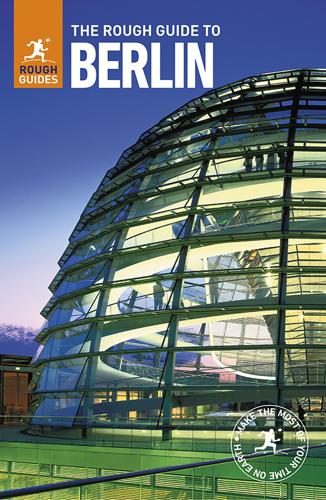
The Rough Guide to Berlin
by
Rough Guides
There’s a fair amount of text (in German and English) but it’s regularly punctuated by and supplemented with interactive installations – including screens that offer real-time insights into modern hacking and encryption techniques – and display cases with abundant fascinating World War II and GDR-era equipment; among the highlights you’ll find weapons disguised as umbrellas, smoking pipes and walking sticks, an original Enigma machine, some impossibly tiny spy cameras and a whole section devoted to James Bond and other movie spies. There’s even a room where you can try out some laser parkour. Dalí – Die Austelling am Potsdamer Platz Leipziger Platz 7 • Mon–Sat noon–8pm, Sun 10am–8pm • €12.50 • 0700 32 54 23 75 46, daliberlin.de • / Potsdamer Platz Though Salvador Dalí had no real links with Germany or Berlin (apart, perhaps, from dying the year the Wall fell, in 1989), Dalí – Die Austellung am Potsdamer Platz is among the world’s best exhibitions of the Surrealist maestro’s work.
…
Among them are various items cleverly crafted from military waste immediately after the war: helmets became pots, gas masks became oil lamps and tyres were used to sole shoes. Equally interesting are the finds from the Nazi bunker beneath the Neues Reichskanzlei, including paintings by SS artists and an Enigma machine. Other remnants unearthed from around town and displayed here come from the Battle of Berlin and include the contents of the pockets of two Volksturm recruits – a fifteen-year-old and a 69-year-old – killed in the fray. These items all come from modern-day excavations of Berlin, and weapons and bombs are still regularly found by building crews, sometimes with deadly consequences – as one display shows.
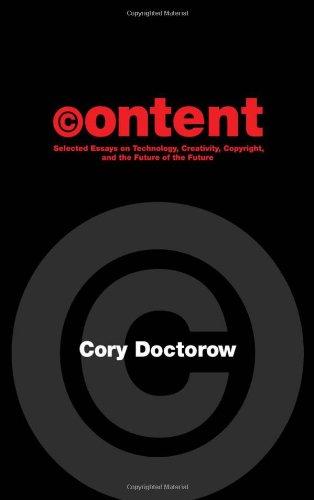
Content: Selected Essays on Technology, Creativity, Copyright, and the Future of the Future
by
Cory Doctorow
Published 15 Sep 2008
Computers are machines for rearranging numbers, and so scientists on both sides engage in a fiendish competition to invent the most cleverest method they can for rearranging numerically represented text so that the other side can't unscramble it. The existence of the message isn't a secret anymore, but the cipher is. But this is still too many secrets. If Bobby intercepts one of Adolf's Enigma machines, he can give Churchill all kinds of intelligence. I mean, this was good news for Churchill and us, but bad news for Adolf. And at the end of the day, it's bad news for anyone who wants to keep a secret. Enter keys: a cipher that uses a key is still more secure. Even if the cipher is disclosed, even if the ciphertext is intercepted, without the key (or a break), the message is secret.

How We Got Here: A Slightly Irreverent History of Technology and Markets
by
Andy Kessler
Published 13 Jun 2005
. *** Accurately aimed bombs and munitions help win wars, but military intelligence tells you where to aim them in the first place. Important Nazi communications were encoded with a secret cipher. The Enigma code was developed at the end of World War I to encrypt financial transactions, but was never really used that way. The Enigma machine was a series of keys that sent electrical charges to rotating wheels. When it was first tested in 1932, the Poles cracked it and built one themselves. But by 1939, the Nazis got smart and changed the code every day instead of every month, and the Poles could no longer decipher the messages. But they did sneak their model of Enigma, BALLISTICS, CODES AND BOMBS 113 which they named Bomba, to the British, which gave them a huge head start in breaking Nazi codes.
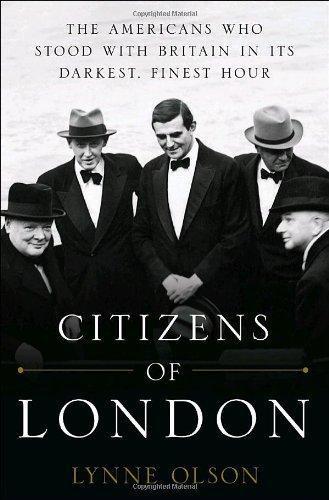
Citizens of London: The Americans Who Stood With Britain in Its Darkest, Finest Hour
by
Lynne Olson
Published 2 Feb 2010
The abundant natural resources of the Belgian Congo, such as rubber and oil, were also used to aid the Allied cause. But the Europeans’ greatest contribution was in the field of intelligence. Just before the Battle of Britain began, British code breakers at Bletchley Park succeeded in cracking the Luftwaffe’s version of the cipher produced by Germany’s complex Enigma machine. Months later, they broke the Enigma cipher of the German navy and then the army. The information produced by British cryptographers about German military tactics and plans proved critical to the winning of the Battle of the Atlantic and to Allied victory. But Bletchley Park could not have done it without the help of the French and, above all, the Poles.
…
But Bletchley Park could not have done it without the help of the French and, above all, the Poles. Using documents supplied by French intelligence, Polish cryptographers in the early 1930s were the first to decipher Enigma intercepts. In the summer of 1939, shortly before the war began, Poland’s intelligence agency presented British and French cryptographers with exact replicas of the Enigma machine. That device, and information about German codes passed on by the Poles, provided the foundation upon which the British built their own fabled code-breaking system. A master at taking credit for wartime intelligence successes that did not, in fact, originate in his agency, Stewart Menzies, head of the vaunted Secret Intelligence Service (MI6), had been quick to claim control of Bletchley Park.

Whiplash: How to Survive Our Faster Future
by
Joi Ito
and
Jeff Howe
Published 6 Dec 2016
In the sixteenth century, Johannes Trithemius and Giovan Battista Bellasso created their own polyalphabetic ciphers, while Gerolamo Cardano and Blaise de Vigenère pioneered autokey ciphers, in which the message itself is incorporated into the key.29 All of these cryptographic innovations were matched by innovations in cryptanalysis—a Renaissance version of the same escalation that drives advances in both cybersecurity and cyber attacks today. The relatively primitive mechanical devices of early cryptography, like the cipher disk Alberti used to track his shifting alphabets, grew increasingly complex, culminating in advanced cryptographic machines like the German Enigma machine of World War II, whose theoretically unbreakable ciphers were betrayed by a simple design flaw—no letter encoded by an Enigma would ever be encoded as itself. Alan Turing and Gordon Welchman led a team at Bletchley Park, England, that created an electromechanical device to help discover the shifting keys to the Enigma codes.

12 Bytes: How We Got Here. Where We Might Go Next
by
Jeanette Winterson
Published 15 Mar 2021
Humankind’s latest brilliant invention might turn out to be our ‘last invention’. * * * That 1965 phrase was coined by Jack Good, one of Minsky’s associates on the Kubrick movie. Jack Good (1916–2009) worked with Alan Turing at Bletchley Park during the war, helping to build the computing apparatus that would eventually crack the codes used by the German Enigma machine. In the 1980s, Jack Good and Marvin Minsky demonstrated that unsupervised artificial neural networks (mini-brains) could learn by themselves, and self-replicate, separate to human input. So, it was only a matter of time – when, not if – before machines could manage themselves, without humans doing the programming.

Know Thyself
by
Stephen M Fleming
Published 27 Apr 2021
As long as each roll is independent of the previous one, Bayes’s theorem tells us we can compute the probability that the answer is a 3 or a 0 by summing up the logarithm of the ratio of our confidence in each hypothesis after each individual roll.16 The brilliant British mathematician Alan Turing used this trick to figure out whether or not to change tack while trying to crack the German Enigma code in the Second World War. Each morning, his team would try new settings of their Enigma machine in an attempt to decode intercepted messages. The problem was how long to keep trying a particular pair of ciphers before discarding it and trying another. Turing showed that by accumulating multiple samples of information over time, the code breakers could increase their confidence in a particular setting being correct—and, critically, minimize the amount of time wasted testing the wrong ciphers.17 In the same way, we can use our current estimate of confidence to figure out whether a new piece of information will be helpful.

The Interstellar Age: Inside the Forty-Year Voyager Mission
by
Jim Bell
Published 24 Feb 2015
3 Message in a Bottle DURING THE LAST few centuries, humans have shown a remarkable ability for decoding messages in languages or codes that they had never previously encountered. Linguists were able to decipher the Greek written language Linear B from about BCE 1450 without any ancient Greeks around to provide tips. During World War II, Cambridge mathematician Alan Turing and the Allied Forces were able to decipher the ingenious Enigma machine ciphers used by the Nazis to great effect in North Atlantic naval battles. It seemed reasonable, then, to assume in the 1970s that any form of intelligent alien life as smart or smarter than ourselves would be able to decipher a message we sent to them, no matter how rooted it was in our culture, solar system, and galactic address.

Enshittification: Why Everything Suddenly Got Worse and What to Do About It
by
Cory Doctorow
Published 6 Oct 2025
Govern yourself accordingly. 2 For more on this, see my short monograph How to Destroy Surveillance Capitalism, published in 2020 by Medium. The End of Self-Help 1 Polish mathematicians were the trailblazers here, developing the electromechanical computers (bombas) needed to break the Nazis’ modified Enigma machines, used to encode and decode secret messages. Their work is less well known than Turing’s, but they deserve enormous credit for their contribution to the war effort. Turing, of course, was hounded to suicide by a British government that knew no bounds of decency when it came to persecuting homosexuality.

MegaThreats: Ten Dangerous Trends That Imperil Our Future, and How to Survive Them
by
Nouriel Roubini
Published 17 Oct 2022
Assembly lines built war materiel, newfangled radar tracked aircraft, and researchers at Bletchley Park, England, used advanced mathematics to break secret German naval codes that revealed the whereabouts of deadly submarines. The brilliant and tragic Alan Turing led the code-breaking initiative. His Enigma machine shortened the war and saved countless lives. After the war, Turing wrote a paper entitled “Computing Machinery and Intelligence.” Instead of asking whether machines can think, he wondered whether computer responses might seem human by replicating the external manifestations of human thought processes.
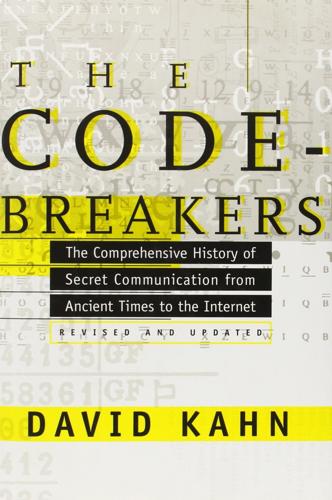
The Codebreakers: The Comprehensive History of Secret Communication From Ancient Times to the Internet
by
David Kahn
Published 1 Feb 1963
And what contribution could be greater than that? The great story of the solution of the Enigma machine and its effects on World War II remained a tightly held secret for almost 30 years. Only a few tiny shards of light about it escaped, and they revealed nothing about the vast scope of the work and its vast influence on the war. The tens of thousands of people involved in the work remained utterly silent about it for decades—probably the best example of general security in history. The British government insisted upon this silence because it had given the thousands of Enigma machines that it had gathered up after the end of the war to its former colonies as they gained independence and needed secure systems of communication.
…
Once the Russian threat had receded, the unit, the Biuro Szyfrów, or Cipher Bureau, added Germany as a target. It seems to have solved the German Army double transposition hand cipher, but when in 1928 messages with quite different letter frequencies appeared, it failed. Through analysis or spies, it learned that the new system was the Enigma machine. And here the head of the Biuro Szyfrów proved himself more farsighted than any country’s cryptanalytic chief in the 1920s. Franciszek Pokorny recognized that the increased volume of communications, foreshadowed by World War I, was mechanizing cryptology, that these cipher machines operated not on linguistic entities, such as words, as did the codes that were then popular, but on individual letters that would, for example, separate the t from an h in the, and that consequently, what was needed to solve them were not classical scholars and philologists but mathematicians.
…
So it has come mainly to encrypt keys between correspondents in cryptographic networks in which there are so many correspondents that it is difficult to exchange keys before secret communication needs to take place. Public-key cryptology, the D.E.S., cryptosystems using shift registers, cryptosystems based on elliptic curves and other mathematical techniques—all are implemented today not on the alphabet of 26 letters, as the Enigma machine and the hand cipher systems of yesteryear were, but on the binary digital alphabet of 0s and 1s. The reason is that this is the international alphabet of computers and communications, and therefore of the Internet. The openness of the Internet makes it easy for unauthorized persons to approach the gates of computers and computer networks and, if those gates are not properly guarded, to hack through them and gain entry to those computers.

Cryptoassets: The Innovative Investor's Guide to Bitcoin and Beyond: The Innovative Investor's Guide to Bitcoin and Beyond
by
Chris Burniske
and
Jack Tatar
Published 19 Oct 2017
Understandably, this form of encryption did not remain secure for long.3 A more recent example that was the subject of the movie The Imitation Game was the effort during World War II of a group of English cryptographers to decode the messages of Nazi Germany, which were encrypted by a coding device called the Enigma machine. Alan Turing, a luminary in machine learning and artificial intelligence, was a major player on the team whose efforts to break the Enigma code ultimately had a debilitating impact on German war strategies and helped to end the war. Cryptography has become a vital part of our lives. Every time we type in a password, pay with a credit card, or use WhatsApp, we are enjoying the benefits of cryptography.
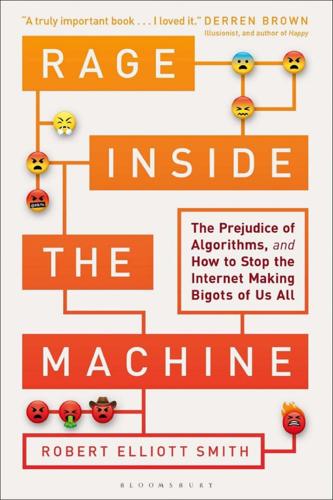
Rage Inside the Machine: The Prejudice of Algorithms, and How to Stop the Internet Making Bigots of Us All
by
Robert Elliott Smith
Published 26 Jun 2019
Alan Turing’s contributions to the world are on a nearly unimaginable scale. Due to the deeply rooted societal bias against homosexuals, he was, until recently, the greatest unsung hero of the Second World War, perhaps the greatest of all time. He was instrumental in the creation of a computer that deciphered the coded messages of the German’s Enigma machine, a feat that is thought to have shortened the war by at least four years and thus saved millions of lives. His invention of the thought-experiment computer the Turing machine literally created the field of computer science, the bedrock field for an immeasurable fraction of today’s global society.
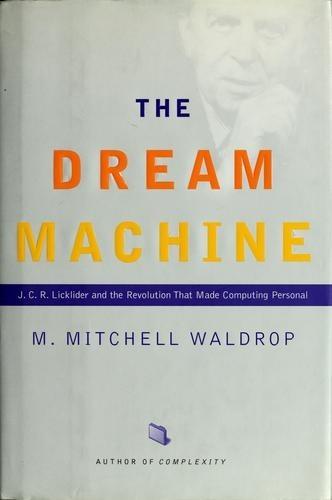
The Dream Machine: J.C.R. Licklider and the Revolution That Made Computing Personal
by
M. Mitchell Waldrop
Published 14 Apr 2001
They certainly couldn't talk about Turing's wartime work back in England, where he was a leading member of the now- famous code-breaking team at Bletchley Park; in 1943 the very existence of the Bletchley Park effort had to be kept secret, lest the Germans realize that Turing and company could crack the messages being encrypted by the Wehrmacht's "Enigma" machines, and move to another system. But the two young men could and did start meeting in the laboratory cafeteria around "teatime," as Turing put it, to chat about their common interest in information and computation. Indeed, as Turing's biographer Andrew Hodges points out, there had been not only a parallel between Shannon's work and Turing's, but a kind of reciproc- ity.
…
Presper, 45-47,59,61, 62,63,87 Eckert- Mauchly Corporation, 63, 101, 115 EDV AC, see ElectronIc Discrete Vanable Automatic Com- puter Egan, James P., 67 Eglm Army Air Force base, 16 Eldophor display, 289, 290, 291 eight-bit standard, 246-47 Emstem, Albert, 85, 91 Eisenhower, Dwight D., 197-98 electncal engmeenng, 82 Electncal Engmeermg, 113 electnc power networks, 25-26 electroencephalography (EEG), 11-12 electronIc commons Idea, 413-14,420 ElectronIc Discrete Vanable Automatic Computer (EDVAC),47, 100-101 von Neumann's report on, 59-65 Electronic News, 338 ElectronIc Numencal Integrator and Calculator (EN lAC), 43,45-47,87-88, 101, 102, 103,339 drawbacks of, 46-47 patent dispute over, 63 programmmg of, 46-47 electronIc office Idea, 363-64, 407 ElIas, Peter, 220 ELIZA, 229 Elkmd, Jerry, 110, 111, 152, 175-76, 194, 295, 345, 351, 354,368,371,399,438,444, 446,447 Ellenby, John, 382, 408 EllIs, Jim, 427 E-maIl, 231, 324-26, 384, 420, 465 Engelbart, Douglas, 210-17, 241-43,255,261,273,278, 285, 342, 358, 360n, 364, 406,465,470 at Fall JOInt Computer Confer- ence,5,287-94 EnglIsh, BIll, 242, 243, 289-90, 293-94,354,355,361-62, 365n,366,368 EN lAC, see ElectroniC Numeflcal Integrator and Calculator EnIgma machines, 80 entropy, 81 error-checking codes, 271 error-correcting codes, 79-80, 94n Ethernet, 5, 374-75, 382, 385, 386,439-40,452 Ethernet-AI to- RCG-S LOT (EARS), 385 EuclId, 137 Evans, David, 239, 261, 274, 282, 303, 343, 357, 358 Everett, Robert, 102-3, 108 expectation, 10 behavIOral theory, 74, 97 expert systems, 397-98, 406 ExtrapolatIOn, InterpolatlOn, and Smoothmg of StatIOnary Time Series (Wiener), 54 facsimile machines, 347-48 Fahlman, Scott, 438 FairchIld Semiconductor, 339 Fall JOInt Computer Conference, 5,287-94 Fano, Robert, 19, 75, 94-95, 107, 174,193,217-24,227-36, 243,244,249-51,252-53, 257, 281, 307, 310, 317, 453 FantasIa, 338 Farley, Belmont, 144 fault-tolerant systems, 234 Federal Research Internet Coor- dlnatmg Committee (FRICC), 462 feedback, 55-57, 92, 138 Feigenbaum, Edward, 210, 281, 396,397-98,403,405-6 Fiala, Ed, 346 file systems, hierarchical, 230 FIle Transfer Protocol (FTP), 301 firewalls, 234 "First Draft of a Report on the EDV AC" (von Neumann), 59-65,68,86,102 flat-panel displays, 359 Flegal, Bob, 345 FLEX machine, 358, 359, 361 Flexownter, 166, 188 flight simulators, 101-2 floppy disks, CP/M software and, 434 Ford Motor Company, 334, 335, 336, 337, 389 Forrester, Jay, 102-3, 113, 114-15, 117, 173,230-31 Fortran, 165, 168, 169, 171-72, 246 Fortune, 27, 93 Fossum, Bob, 418, 420 Foster, John, 278, 279, 330 Frankston, Bob, 315 Fredkin, Edward, 152-56, 179, 194,208,313-14,323,412 Freeman, Greydon, 457 Freyman, Monsieur, 83 FRICC (Federal Research Inter- net Coordlnatmg Commit- tee), 462 Fnck, Fredenck, 97, 128, 201-2, 203n Fublni, Gene, 202 Fuchs, Ira, 457 FUJI Xerox, 409 Fumblmg the Future (Smith and Alexander), 382n, 446 functions, 10 lIst processing, 169-70 Galanter, Eugene, 139 Galley, Stuart, 319-20 games, computer, 188, 320, 435 game theory, 85-86, 91 Garner, W.
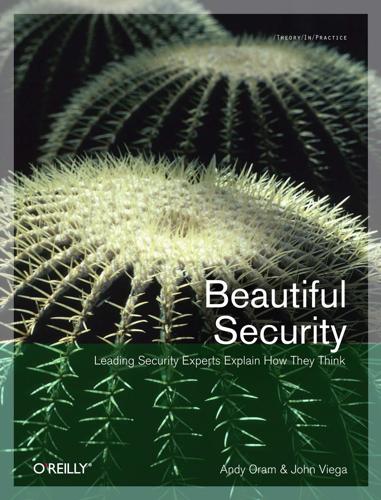
Beautiful security
by
Andy Oram
and
John Viega
Published 15 Dec 2009
The Egyptians carved obfuscated hieroglyphs into monuments; the Spartans used sticks and wound messages called scytales to exchange military plans; and the Romans’ Caesar ciphers are well documented in school textbooks. Many historians attribute the victory in the Second World War directly to the code breakers at Bletchley Park who deciphered the famous Enigma machine, yet even this monumental technological event, which ended the World War and changed history forever, may pale into insignificance next to changes to come. The packet switching network invented by Donald Davies in 1970 also changed the world forever when the sudden ability of computers to talk to other computers with which they previously had no relationship opened up new possibilities for previously isolated computing power.

The Blockchain Alternative: Rethinking Macroeconomic Policy and Economic Theory
by
Kariappa Bheemaiah
Published 26 Feb 2017
It is for this reason that he is referred to as the father of information technology. As World War Two began in 1939, these advances in information technology had been adopted by various militaries to communicate sensitive information. Cryptography became a suitable way of camouflaging information and led to the creation of the Enigma machine. Luckily for the Allies, hope lay in the form of some work that had been done a few years earlier by another Cambridge mathematician, Alan Turing. Along with his mentor, Max Newman, Turing set about designing and building automated machines (Turing Machines) that could decrypt secret German military communications (as documented in the popular movie, ‘The Imitation Game’).

Tools for Thought: The History and Future of Mind-Expanding Technology
by
Howard Rheingold
Published 14 May 2000
As a scientist, MIT researcher, and friend of Norbert Wiener's, Bush was also concerned with the task of building high-speed mechanical calculators. The allies' two most pressing problems in the early years of World War II were the devastating U-boat war in the North Atlantic and the equally devastating Luftwaffe attacks on Britain. Turing's secret solution to the naval Enigma machine was responsible, in large part, for solving the U-boat problem. But where Turing's problem was one of cryptanalysis, of mathematically retrieving the meaning from a garbled message, the Luftwaffe problem was one of predicting the future: How can you shoot at a plane that is going as fast as your bullets?

The Hacker and the State: Cyber Attacks and the New Normal of Geopolitics
by
Ben Buchanan
Published 25 Feb 2020
He became an unparalleled source of insight for his Japanese superiors on what was happening in Germany. Whenever Ōshima drafted a message with an update on Nazi leadership activities and intentions, Japanese staff in Berlin radioed it back to Tokyo. To guard against interception, they encrypted the messages with a cipher known to the Allies as PURPLE, which depended on modified Enigma machines to work. Much of the Japanese high command considered it unbreakable. These Japanese leaders were wrong. Just as the Allies considered it imperative to break the Nazis’ Enigma encryption, they also made it a priority to crack PURPLE. After a great deal of hard mathematical work and the discovery of several important vulnerabilities in the cryptographic design, the code-breakers succeeded.2 This enabled them to decrypt and read Ōshima’s dispatches, which numbered in the hundreds.
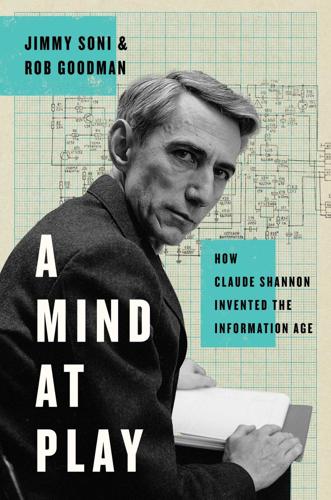
A Mind at Play: How Claude Shannon Invented the Information Age
by
Jimmy Soni
and
Rob Goodman
Published 17 Jul 2017
“We talked not at all about cryptography. . . . I don’t think we exchanged word one about cryptography,” Shannon explained. Asked whether or not he knew what Turing was working on, Shannon responded that he only knew it in broad strokes. “Certainly not the nitty gritty. I knew or surmised what he was doing. . . . I had no concept of the Enigma machine. . . . I didn’t know of that nor that he was a crucial figure in it.” The interviewer pressed him, asking him why Shannon, with his own passion for and experience in cryptographic puzzles, wouldn’t have probed Turing further. Shannon’s response was simple and to the point: “Well, in the wartime you didn’t ask too many questions.”
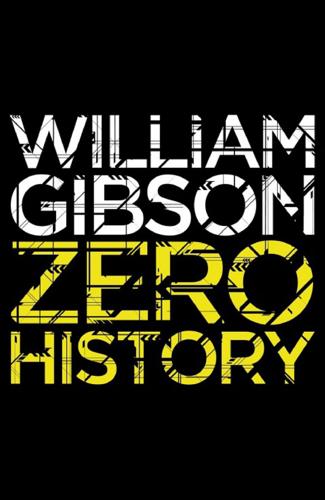
Zero History
by
William Gibson
Published 6 Sep 2010
My family is living with this person.” “To my computer.” “Now software analysis.” He produced a battered black Dell from beneath the counter and cabled it to the Air. “Is password?” “Locative,” Milgrim said, and spelled it. “Lowercase. Dot. One.” He went to the showcase to look more closely at the Enigma machine. “Does patination make them more valuable?” “What?” LEDs flashed in his direction from the plastic glasses. “If they’re worn. Evidence of use.” “Most valuable,” said Voytek, staring at him over the tops of the glasses, “is mint.” “What are these things?” Black, shark-toothed gears, the size of the bottom of a beer bottle.

The Perfect Weapon: War, Sabotage, and Fear in the Cyber Age
by
David E. Sanger
Published 18 Jun 2018
His past service to the government had been radically different: seeking peace in Northern Ireland under Prime Minister Tony Blair and adjudicating among bitterly competing British intelligence agencies at 10 Downing Street. But then he had been sent to one of those agencies, the Government Communications Headquarters, the blandly named bureaucracy that was still living off its reputation as the agency of brilliant oddballs who had cracked the German codes with the Enigma machine during World War II, and saved Britain. Hannigan’s job was to bring GCHQ into the twenty-first century, the century of cyber conflict. Past heads of GCHQ barely communicated with the public, but on his first day on the job Hannigan took a direct shot at Silicon Valley firms in a column in the Financial Times.

The Ransomware Hunting Team: A Band of Misfits' Improbable Crusade to Save the World From Cybercrime
by
Renee Dudley
and
Daniel Golden
Published 24 Oct 2022
Despite his bold assertion—and much like ransomware victims when they have no other recourse—he eventually paid anyway, once the amount was reduced to $3.2 million. Another basic element of ransomware, cryptography, also goes back to ancient times. The Roman army used a cipher named after Caesar to encrypt military messages. Almost two millennia later, Nazi Germany scrambled its communications with a device called the Enigma Machine, giving it an advantage in World War II, until a team led by British mathematician Alan Turing succeeded in cracking the code. More recently, cryptography has become a backbone of the internet, safeguarding electronic banking, commerce, and communications. Unfortunately, legitimate cryptographic tools developed by government, industry, and academia have been co-opted by cybercriminals for their own purposes.

The Coming Wave: Technology, Power, and the Twenty-First Century's Greatest Dilemma
by
Mustafa Suleyman
Published 4 Sep 2023
Like the internal combustion engine, computing began as the stuff of obscure academic papers and laboratory tinkerers. Then came the War. In the 1940s, Bletchley Park, Britain’s top secret World War II code-breaking hub, started to realize a true computer for the first time. Racing to crack Germany’s supposedly unbreakable Enigma machines, an extraordinary team turned theoretical insights into a practical device capable of doing just that. Others were also on the case. By 1945, an important precursor to computers called the ENIAC, an eight-foot-tall behemoth of eighteen thousand vacuum tubes capable of three hundred operations a second, was developed at the University of Pennsylvania.
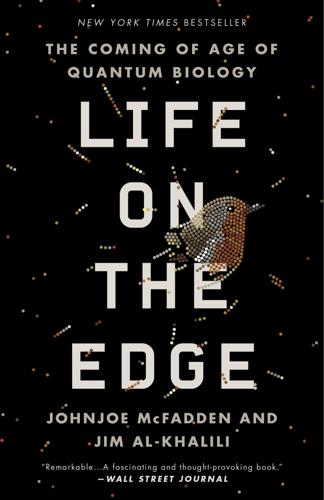
Life on the Edge: The Coming of Age of Quantum Biology
by
Johnjoe McFadden
and
Jim Al-Khalili
Published 14 Oct 2014
These nucleotide beads come in four varieties: adenine (A), guanine (G), cytosine (C) and thymine (T), so their arrangement along the DNA strand provides a one-dimensional sequence of genetic letters such as “GTCCATTGCCCGTATTACCG.” Francis Crick had spent the war years working at the Admiralty (the authority responsible for the command of the Royal Navy), so it’s conceivable he may have been familiar with codes, such as those produced by the German Enigma machines that were being decoded at Bletchley Park. In any case, when he saw the DNA strand he immediately recognized it as a code, a sequence of information that provided the crucial instructions of heredity. And, as we will discover in chapter 7, identification of the double helical DNA strand also solved the problem of how genetic information is copied.
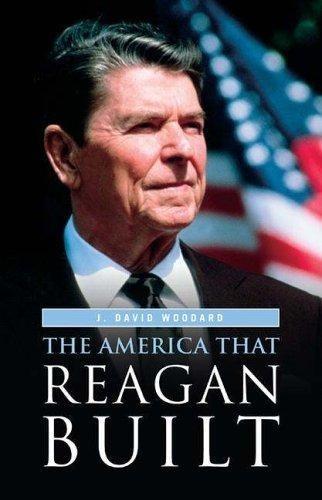
The America That Reagan Built
by
J. David Woodard
Published 15 Mar 2006
‘‘Seventy thousand new people,’’ wrote David Brinkley of those times, ‘‘arrived the first year after Pearl Harbor alone.’’26 The city filled with military officers and civilians who carried briefcases with government contracts, encrypted instructions for invasion plans, and military assessments. World War II was won because of secrets: the Allies had the Enigma machine that read Hitler’s plans as soon as his field officers did, and the ‘‘Purple’’ code that allowed Americans in the Pacific to know what the Japanese were doing before the battle of Midway. Washington was the nerve center for secrets. The ultimate confidence at the time was the Manhattan Project, a work so privileged that it produced the atomic bomb and ultimately ended the war without anyone knowing about it.
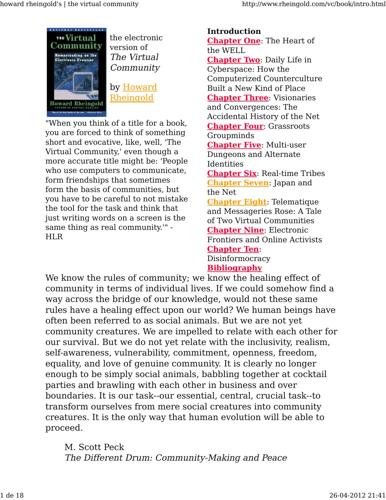
Howard Rheingold
by
The Virtual Community Homesteading on the Electronic Frontier-Perseus Books (1993)
Published 26 Apr 2012
That's why a subculture of computer software pioneers known as cypherpunks have been working to make citizen encryption possible. Encryption is the science of encoding and decoding messages. Computers and codebreaking go back a long way. Alan Turing, one of the intellectual fathers of the computer, worked during World War II on using computational strategies to break the codes created by Germany's Enigma machine. Today, the largest assemblage of computer power in the world is widely acknowledged to be the property of the U.S. National Security Agency, the top-secret contemporary high-tech codebreakers. Computers and mathematical theories are today's most important weapons in the war between codemakers and codebreakers.

Surveillance Valley: The Rise of the Military-Digital Complex
by
Yasha Levine
Published 6 Feb 2018
And neither Lee nor anyone else could answer the bigger question raised by my reporting: If Tor was such a danger to the US government, why would this same government continue to spend millions of dollars on the project’s development, renewing the funding year after year? Imagine if, during World War II, the Allies funded the development of Nazi Germany’s Enigma machine instead of mounting a massive effort to crack the code. I never got a good answer from the privacy community, but what I did get was a lot of smears and threats. Journalists, experts, and technologists from groups like the ACLU, EFF, Freedom of the Press Foundation, and The Intercept and employees of the Tor Project joined in to attack my reporting.
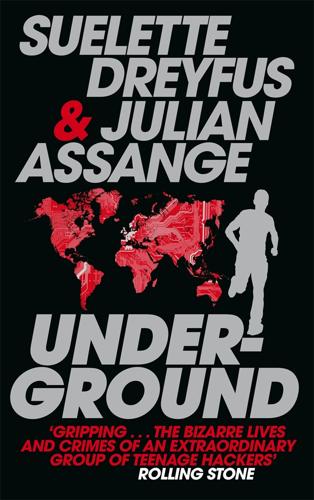
Underground
by
Suelette Dreyfus
Published 1 Jan 2011
In 1989 they had broken into a computer at Dartmouth College called Bear. They discovered Deszip carefully tucked away in a corner of Bear and had spirited a copy of the program away to a safer machine at another institution. It turned out to be a hollow victory. That copy of Deszip had been encrypted with Crypt, a program based on the German Enigma machine used in World War II. Without the passphrase – the key to unlock the encryption – it was impossible to read Deszip. All they could do was stare, frustrated, at the file name Deszip labelling a treasure just out of reach. Undaunted, the hackers decided to keep the encrypted file just in case they ever came across the passphrase somewhere – in an email letter, for example – in one of the dozens of new computers they now hacked regularly.

Fodor's Essential Belgium
by
Fodor's Travel Guides
Published 23 Aug 2022
In summer, the ghost of Berthe, a woman of local legend, supposedly appears at sunset. ERue Du Vieux Château 4, La Roche-en-Ardenne P084/411–342 wwww.chateaudelaroche.be A€7. Musée de la Bataille des Ardennes OTHER MUSEUM | This somewhat dusty museum contains an extensive selection of American, English, and German war relics, including an authentic code-deciphering enigma machine. Numerous photographs re-create life in the Ardennes during the war. ERue Châmont 5, La Roche-en-Ardenne P084/411–725 wwww.batarden.be A€8 CClosed weekdays Oct.–Mar. r Restaurants Chez Henri $$$ | BELGIAN | This long-standing local favorite right in the center of town has been serving hearty traditional Belgian and regional Ardennes dishes in cozy surrounds for more than half a century.
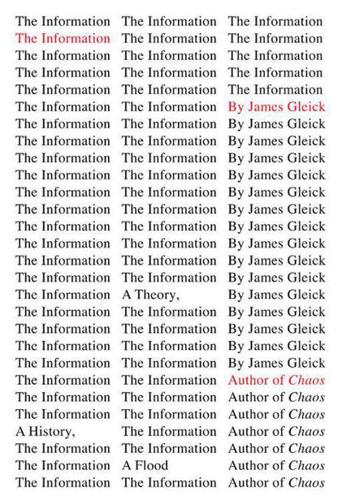
The Information: A History, a Theory, a Flood
by
James Gleick
Published 1 Mar 2011
The scientific triumph at Bletchley—secret for the duration of the war and for thirty years after—had a greater effect on the outcome than even the Manhattan Project, the real bomb. By the war’s end, the Turing Bombes were deciphering thousands of military intercepts every day: processing information, that is, on a scale never before seen. A CAPTURED ENIGMA MACHINE (Illustration credit 7.1) Although nothing of this passed between Turing and Shannon when they met for meals at Bell Labs, they did talk indirectly about a notion of Turing’s about how to measure all this stuff. He had watched analysts weigh the messages passing through Bletchley, some uncertain and some contradictory, as they tried to assess the probability of some fact—a particular Enigma code setting, for example, or the location of a submarine.
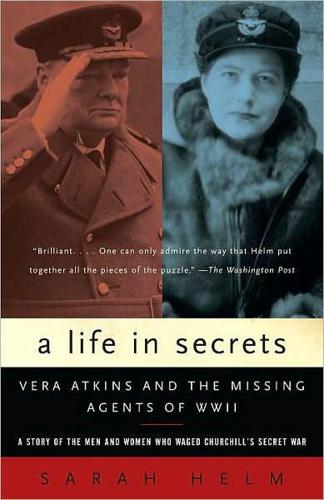
A Life in Secrets
by
Sarah Helm
Published 1 Jan 2005
So Senter marked Guillot's report “secret” while he checked its accuracy. An inner circle of senior British officers and politicians had been keeping secret what they had known about the concentration camps and death camps since the start of the war. From as early as 1939 SS signals encoded by German Enigma machines had been intercepted and decoded by cryptanalysts at Bletchley Park in Buckinghamshire. The resulting decrypts, known as ULTRA, revealed early evidence of a Nazi extermination programme, but for security reasons nobody outside the inner circle—which included the prime minister—was allowed to know.

The Innovators: How a Group of Inventors, Hackers, Geniuses and Geeks Created the Digital Revolution
by
Walter Isaacson
Published 6 Oct 2014
A break came when Polish intelligence officers created a machine based on a captured German coder that was able to crack some of the Enigma codes. By the time the Poles showed the British their machine, however, it had been rendered ineffective because the Germans had added two more rotors and two more plugboard connections to their Enigma machines. Turing and his team went to work creating a more sophisticated machine, dubbed “the bombe,” that could decipher the improved Enigma messages—in particular, naval orders that would reveal the deployment of U-boats that were decimating British supply convoys. The bombe exploited a variety of subtle weaknesses in the coding, including the fact that no letter could be enciphered as itself and that there were certain phrases the Germans used repeatedly.

Britain at Bay: The Epic Story of the Second World War: 1938-1941
by
Alan Allport
Published 2 Sep 2020
On 9 May 1941, east of Greenland’s Cape Farewell, U-110 (commanded by Fritz-Julius Lemp, the captain who had sunk the liner SS Athenia on the day war broke out) was detected on ASDIC by a British destroyer and depth-charged to the surface. A Royal Navy boarding party retrieved the submarine’s ENIGMA machine and codebooks before she sank. These documents, in conjunction with materials taken from German meteorological ships around the same time, provided Bletchley Park with a vital insight into ‘Dolphin’, the particular form of ENIGMA cipher used for U-boat signals traffic between Dönitz’s headquarters and boats at sea.

Normandy '44: D-Day and the Epic 77-Day Battle for France
by
James Holland
Published 3 Jun 2019
Incredibly, Göring also had his own private intelligence system, the Forschungsamt, but this was primarily for keeping him one step ahead of his enemies – and those were within the Nazi hierarchy, not outside it. The British and Americans, on the other hand, pooled their intelligence very effectively. Much, rightly, has been made of the code-breakers of Bletchley Park cracking the German Enigma machines used to send coded Morse messages; but the cryptanalysts at Bletchley had also broken the Lorenz cipher machines attached to teleprinters, which the Germans used between Berlin and major headquarters and commanders in the field. In the run-up to OVERLORD, this decoded traffic, known as ‘Fish’, gave the Allies a pretty clear picture of troop dispositions in Normandy and throughout OB West.

Palo Alto: A History of California, Capitalism, and the World
by
Malcolm Harris
Published 14 Feb 2023
Colossus was the name of the most successful British triode-based code-breaking machine, and its programmers and operators exploited a weakness in the Nazi system that happened to overlap with the era’s limited processing capacity. Germans encoded their messages with rotor-based cipher machines, which automatically transformed letters. These devices were electromechanical, not electronic, which means they relied on the physical movement of parts for every encoding. The Nazis’ Enigma machine, with its three rotors, was breakable with the same level of technology, but when they upgraded to a 12-rotor Lorenz cipher, the Allies were in trouble. The famed British mathematician Alan Turing found the vulnerability: Only one of the rotors advanced automatically with every keystroke; the other 11 depended on a change in input.
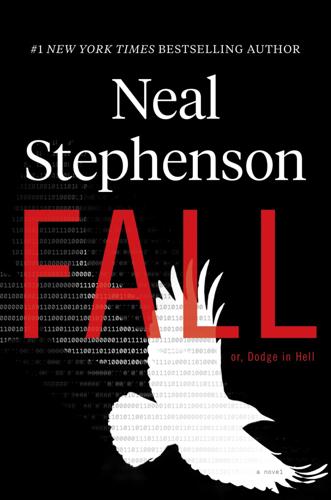
Fall; Or, Dodge in Hell
by
Neal Stephenson
Published 3 Jun 2019
This was where C-plus began to feel he was losing the thread, since the last mention of any Hacklhebers he’d seen was from 250 years earlier—but apparently this Rudolf was one of those hyperprivileged white guys who actually turned out to have legit mathematical talent. Anyway it kicked off a whole wing of the exhibit featuring an offbeat mix of stuff C-plus had seen in twenty other museums (Enigma machine, photograph of Turing bombe) with unique exhibits such as a computer that Lawrence Pritchard Waterhouse had apparently made out of organ pipes and mercury-filled U-tubes. There was a big map of the world festooned with swooping trails of LEDs and flat-panel monitors, trying to convey some elaborate chain of events in which the contents of the Leibniz-Archiv had been removed from Hanover, either to keep these priceless relics safe from Allied bombing raids or because Göring wanted to melt it all down, and somehow made their way, via U-boat, to the Philippines—only to be sunk, and later recovered by Waterhouses and Shaftoes.
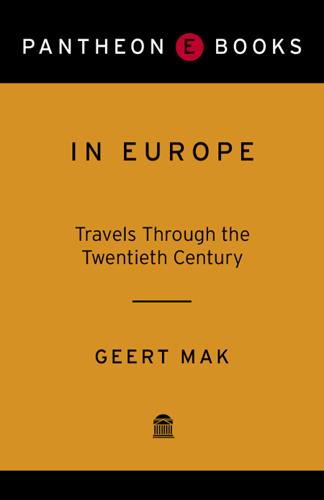
In Europe
by
Geert Mak
Published 15 Sep 2004
The British perfected the decoding system with one of the first computer-like machines, the top-secret Colossus. From summer 1940 onwards, almost all of the Germans’ plans and troop movements were – within days, sometimes even hours – an open book to Churchill and a few of his confidants. It was only on 1 May, 1941, however, that the first complete Enigma machine fell into British hands, when three warships succeeded in driving a German U-boat to the surface with the use of depth charges. The German commander thought the valves of his submarine had been opened and that the vessel would sink to the bottom, rendering it unnecessary to destroy his Enigma and the code books.

The Rough Guide to England
by
Rough Guides
Published 29 Mar 2018
This was where the British built the first programmable digital computer, Colossus, in 1943, and it was here that they famously broke the German “Enigma” code which was encrypting communications within Hitler’s armed forces. Much of Station X has survived, its Nissen huts spread over a leafy parcel of land that surrounds the original Victorian mansion. Inside are displays exploring the workings of Station X as well as the stolen Enigma machine that was crucial in deciphering the German code. Woburn Abbey and Safari Park Woburn, 5 miles east of Milton Keynes • Abbey MK17 9WA • April–Oct daily 11am–5pm • £17 • 01525 290333, woburnabbey.co.uk • Safari park MK17 9QN • Feb–Oct daily 10am–6pm • £23 • 01525 290407, woburnsafari.co.uk The grandiloquent Georgian facade of Woburn Abbey overlooks a chunk of landscaped parkland on the eastern edge of Woburn village.
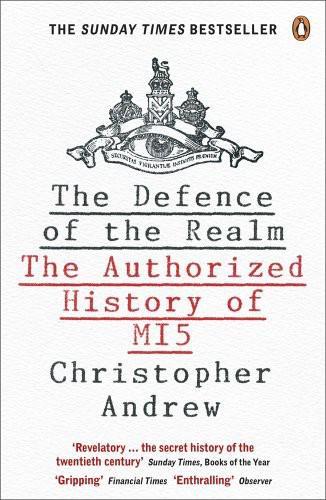
The Defence of the Realm
by
Christopher Andrew
Published 2 Aug 2010
Under Sir David Petrie, however, the Service entered a golden age. In the Second World War the British intelligence community produced better (and better-used) intelligence than that available to any combatant in any previous conflict. It was taken by surprise by the extent of its own success. Though the breaking of the German Enigma machine cipher has since become perhaps the best-known intelligence success in British history, at the outbreak of war the cipher was widely regarded as unbreakable – even in Bletchley Park. Frank Birch, who became head of Bletchley’s naval section, was told ‘it wasn’t worthwhile’ trying to crack Enigma.6 MI5 found similar difficulty in coming to terms with the astonishing fact that, in the words of J.